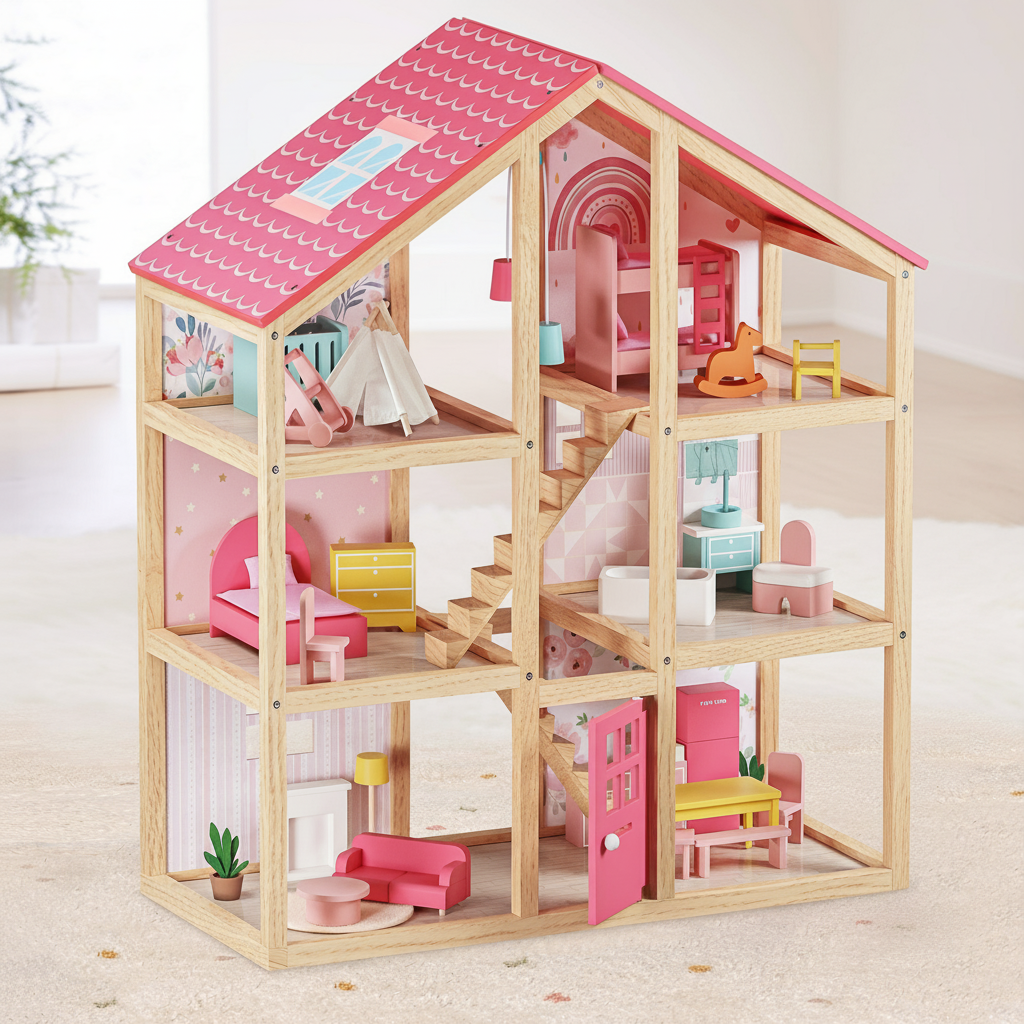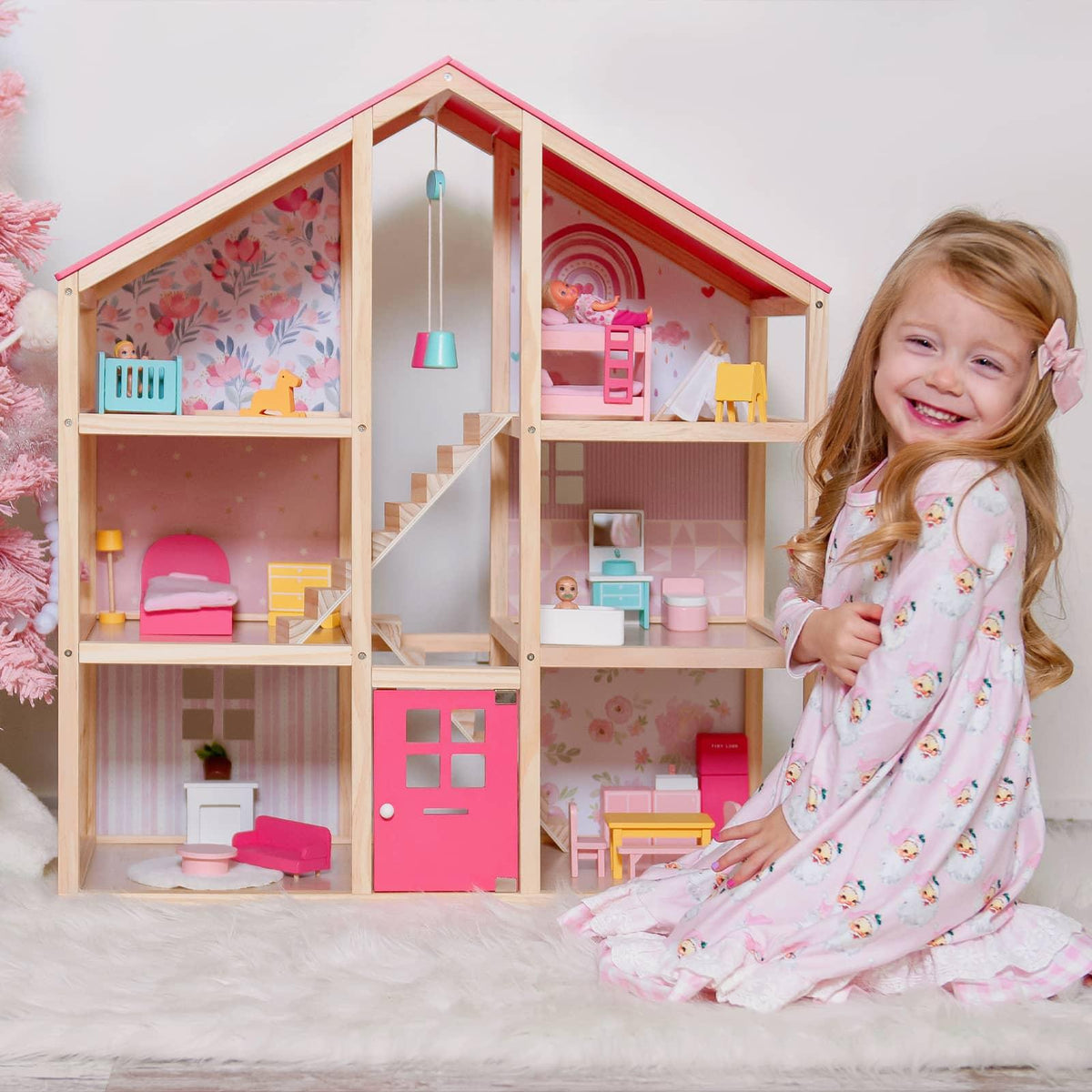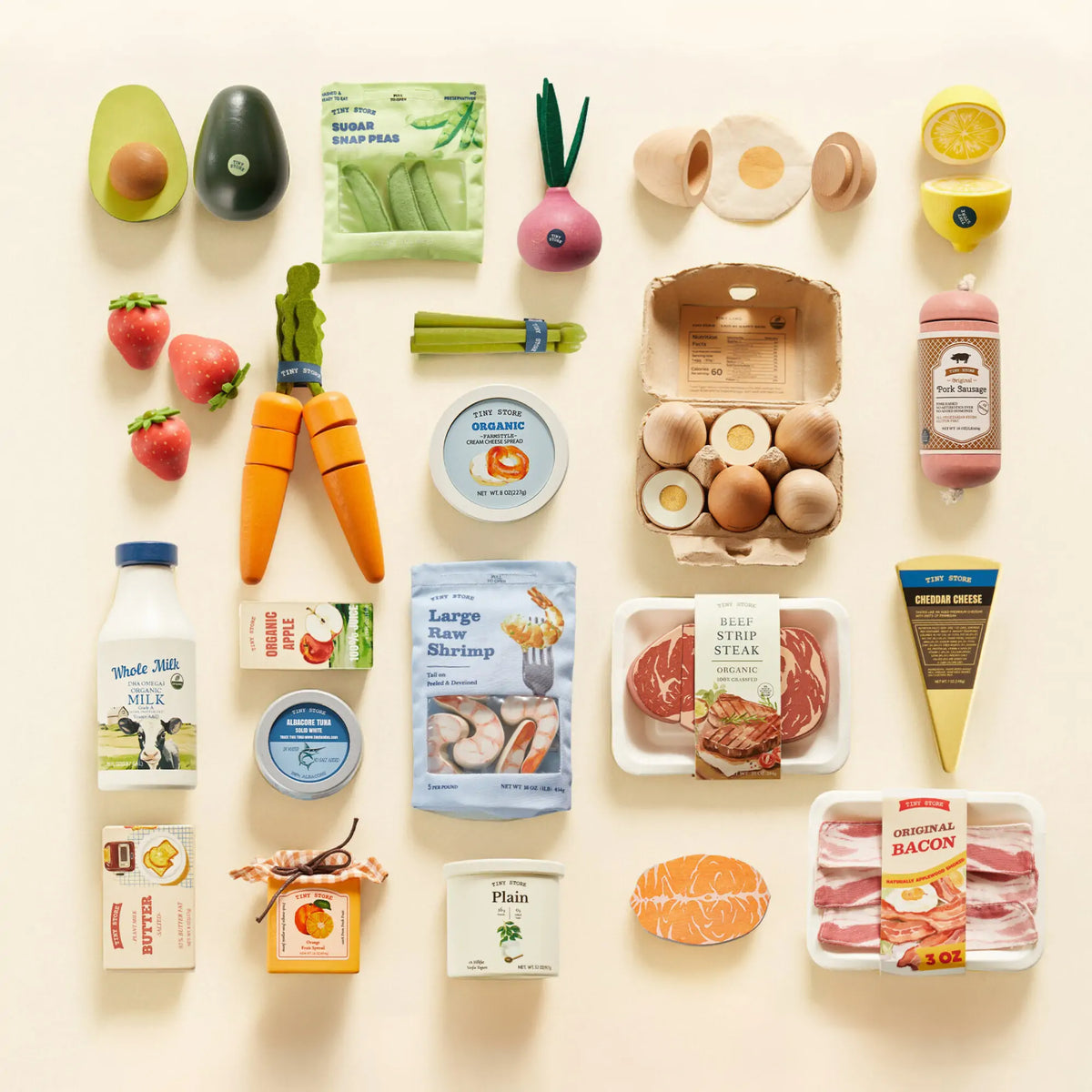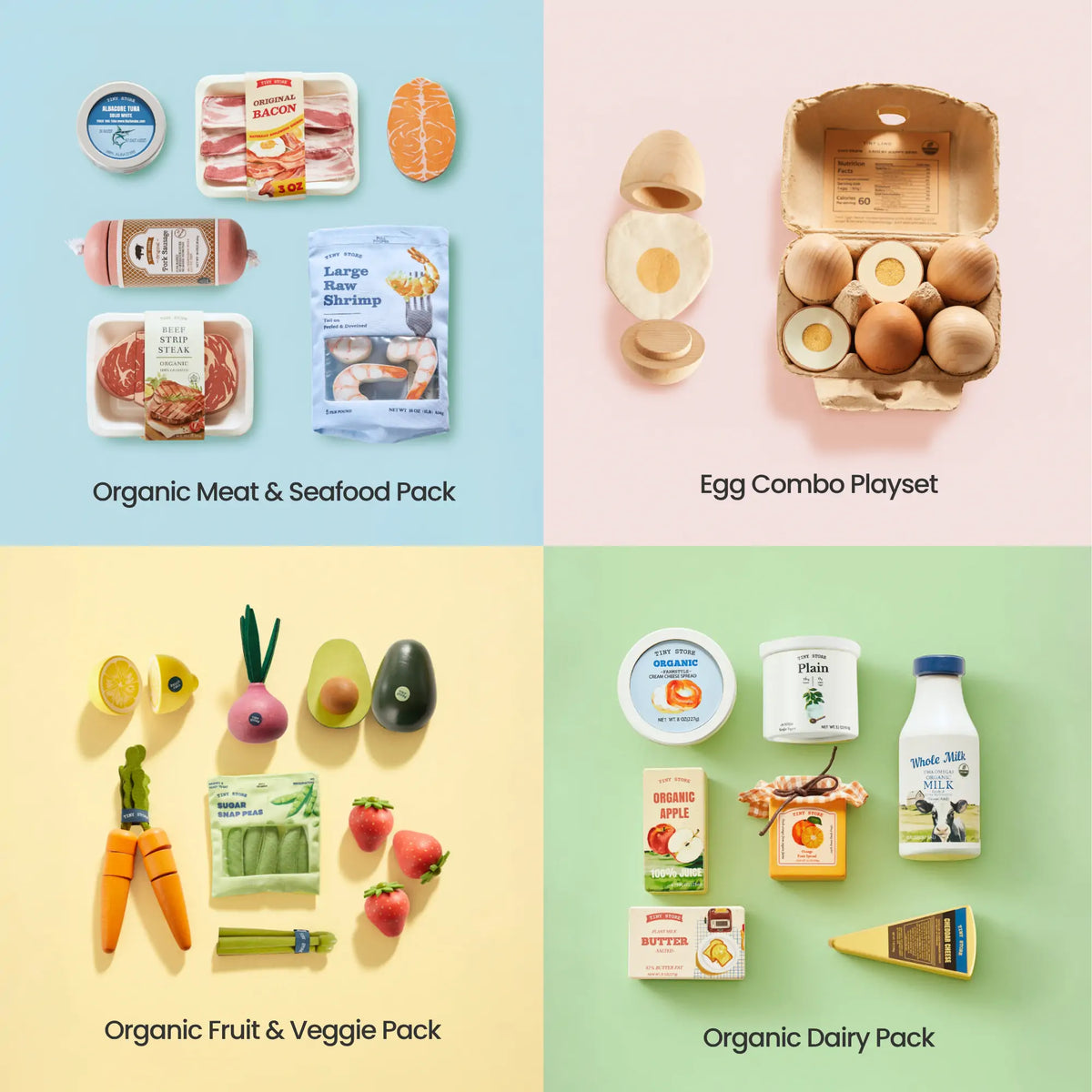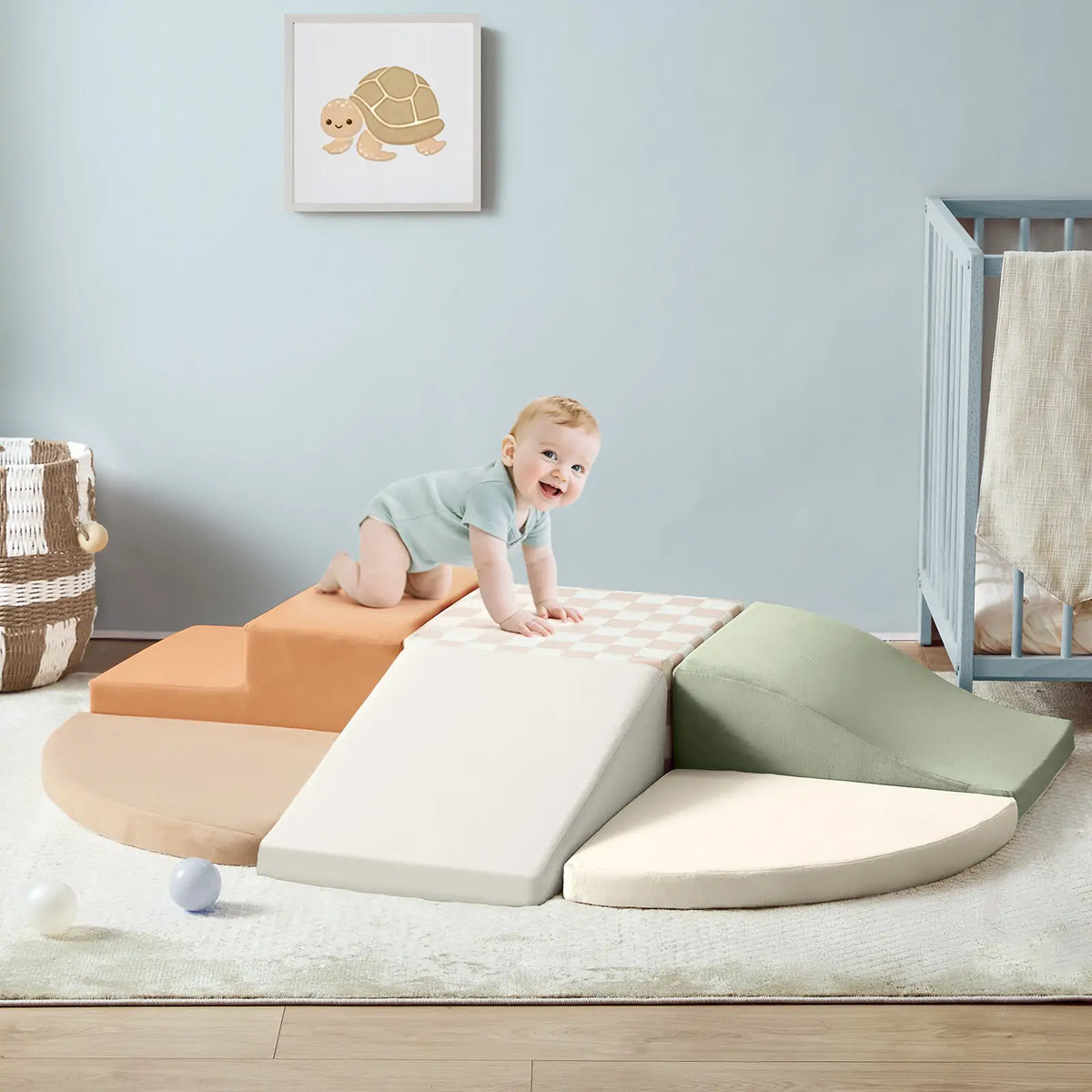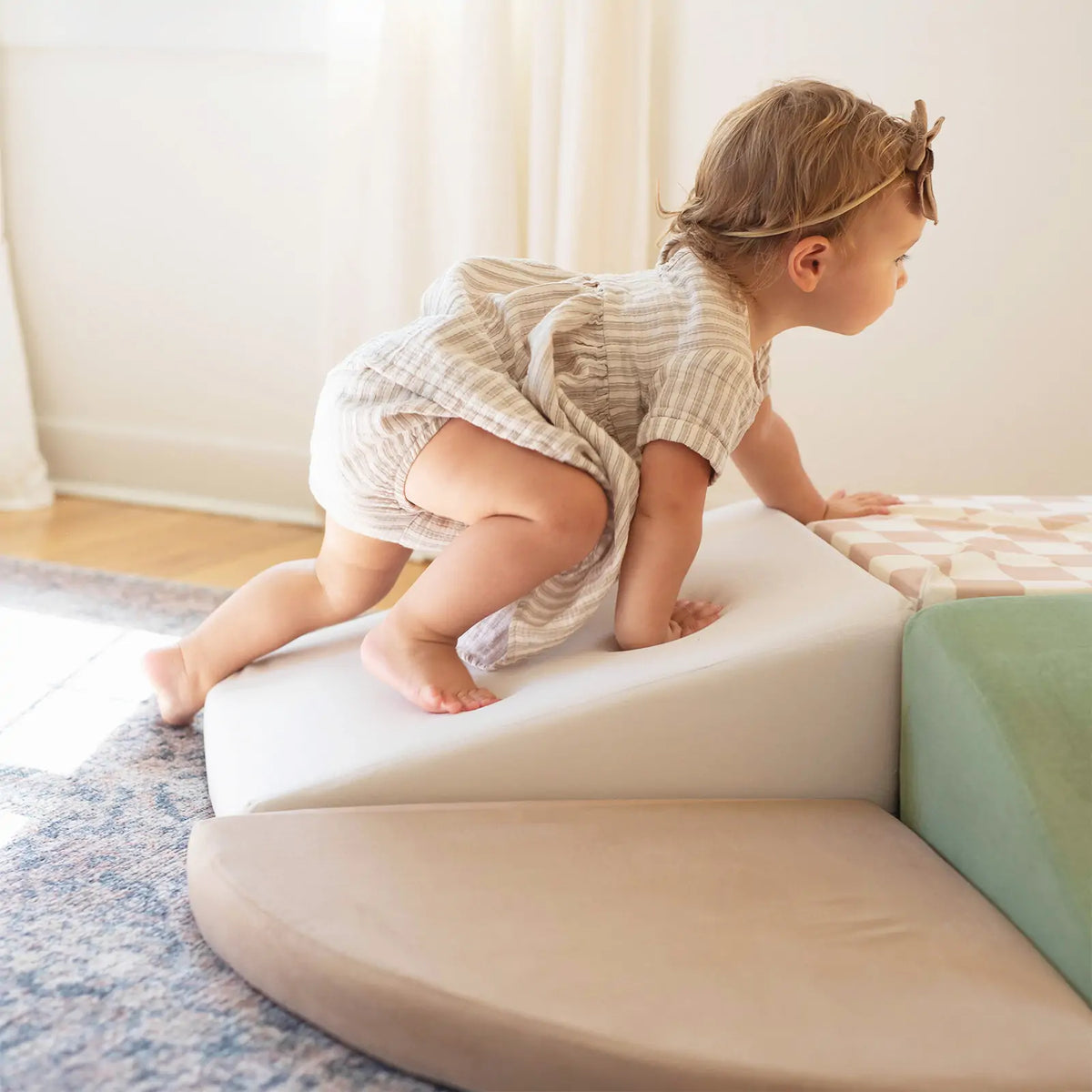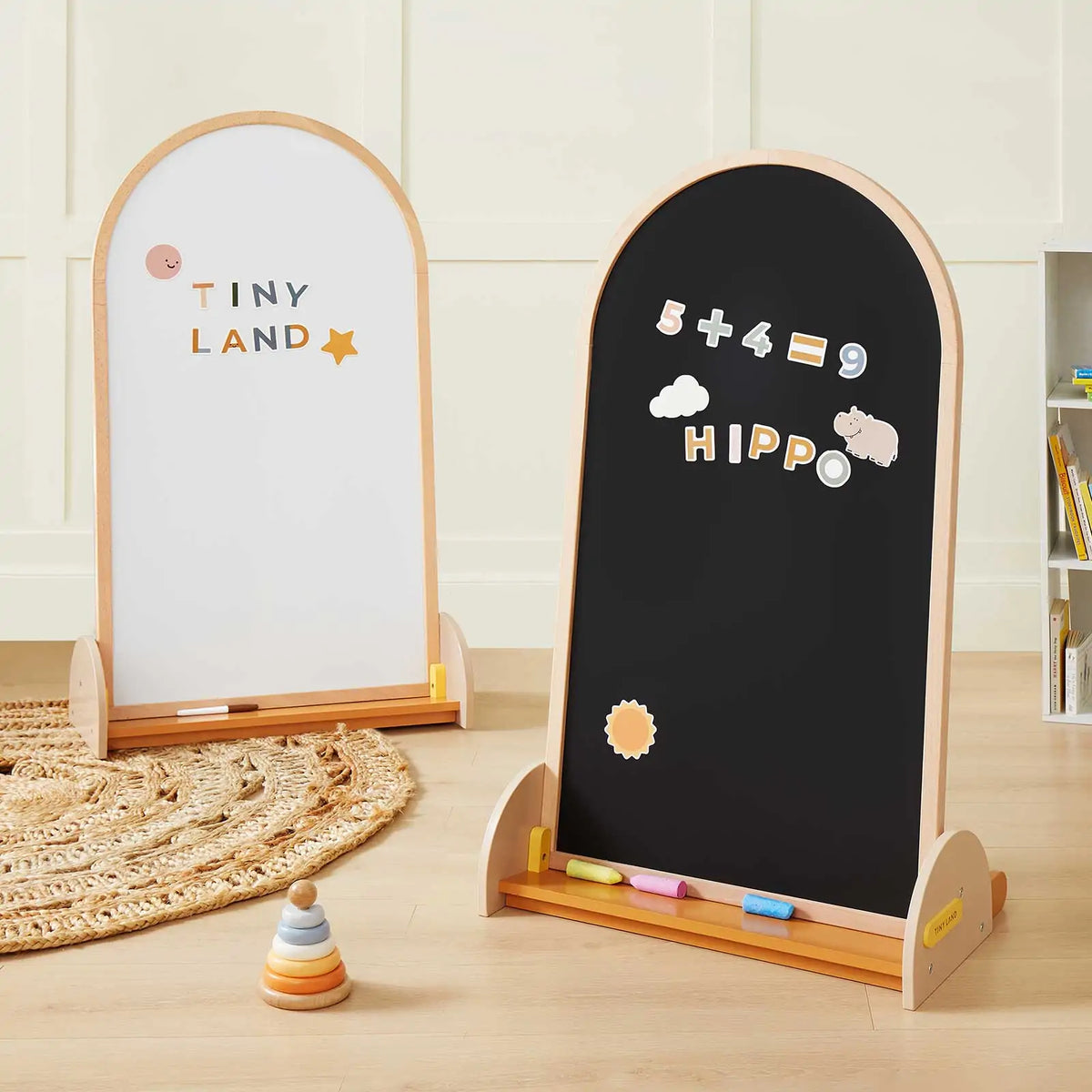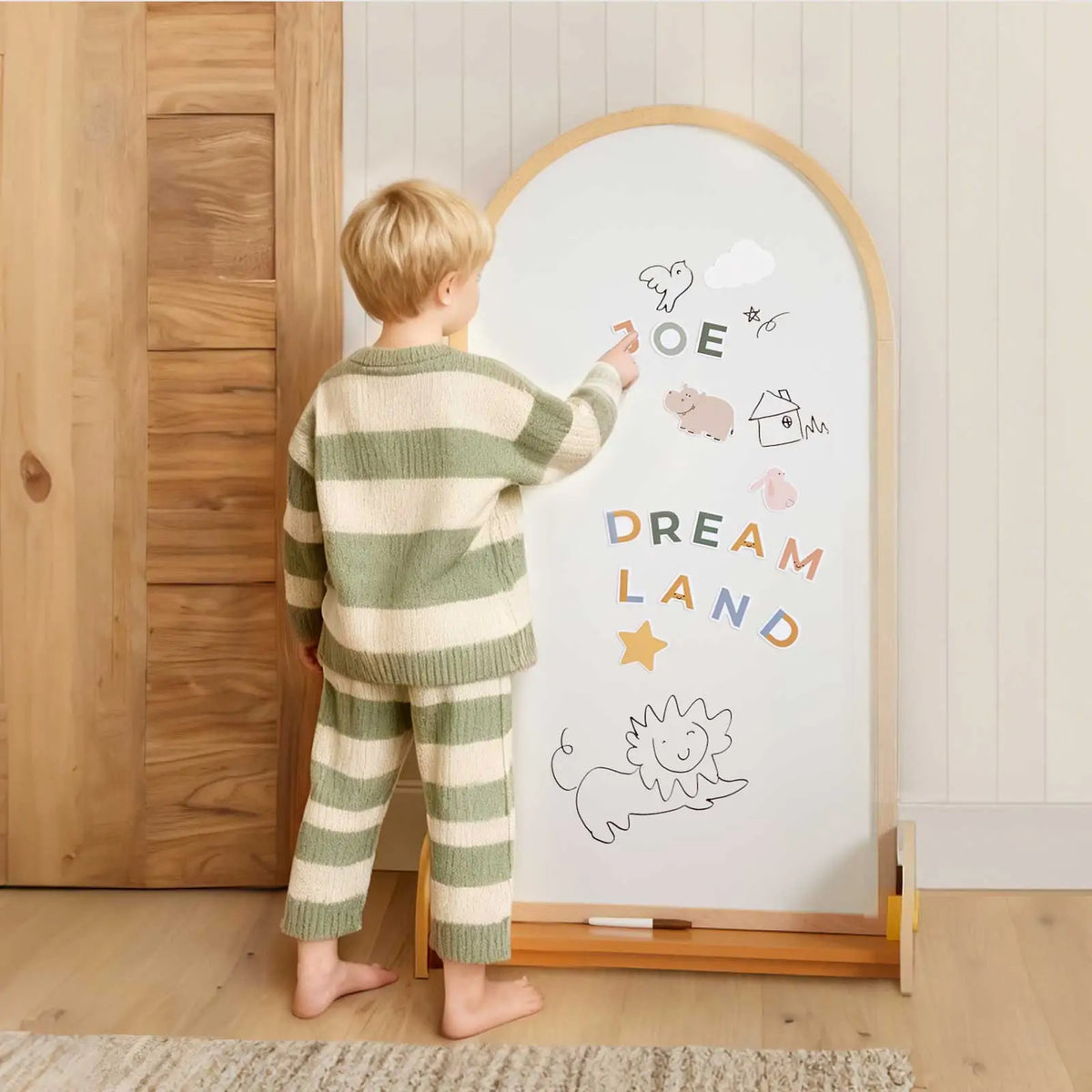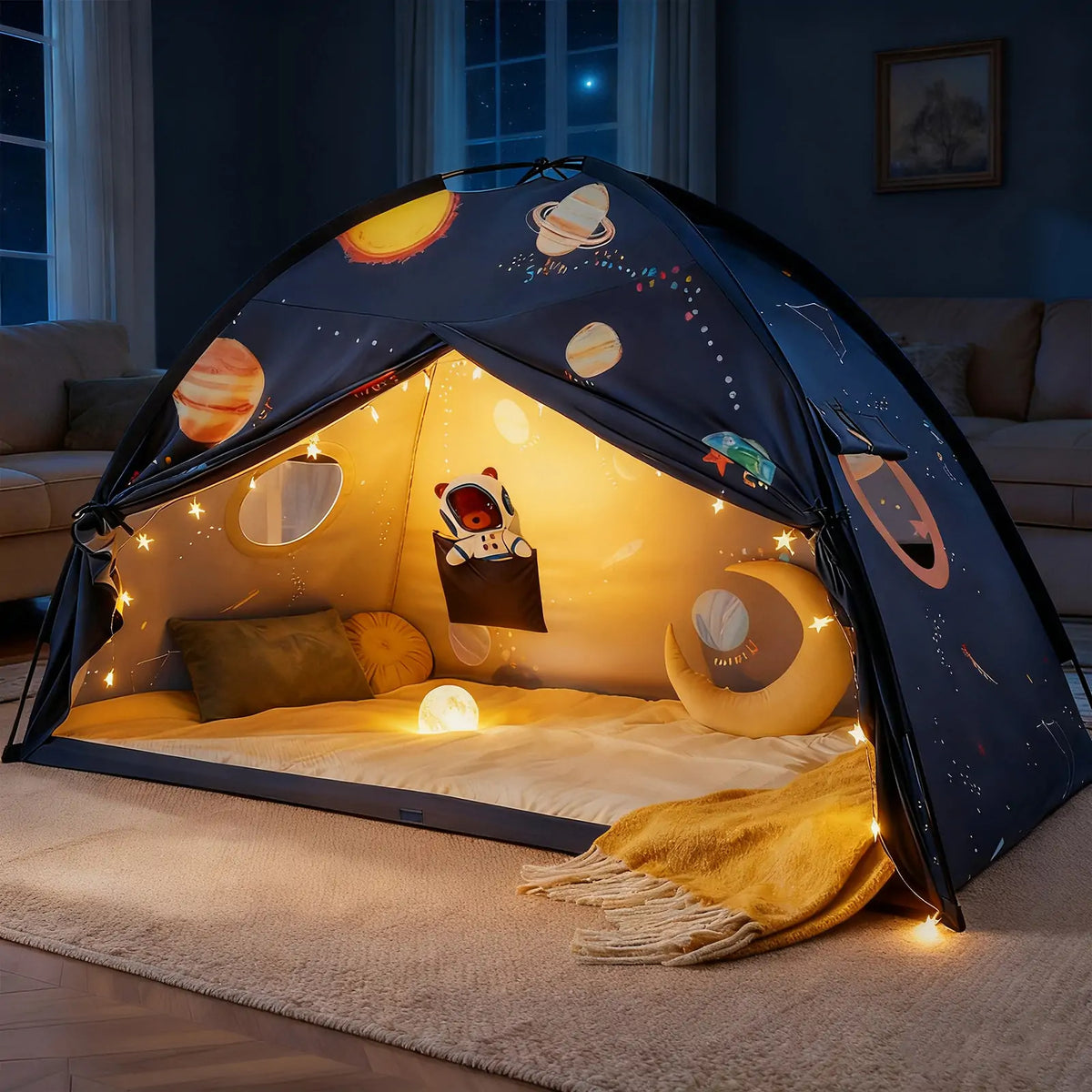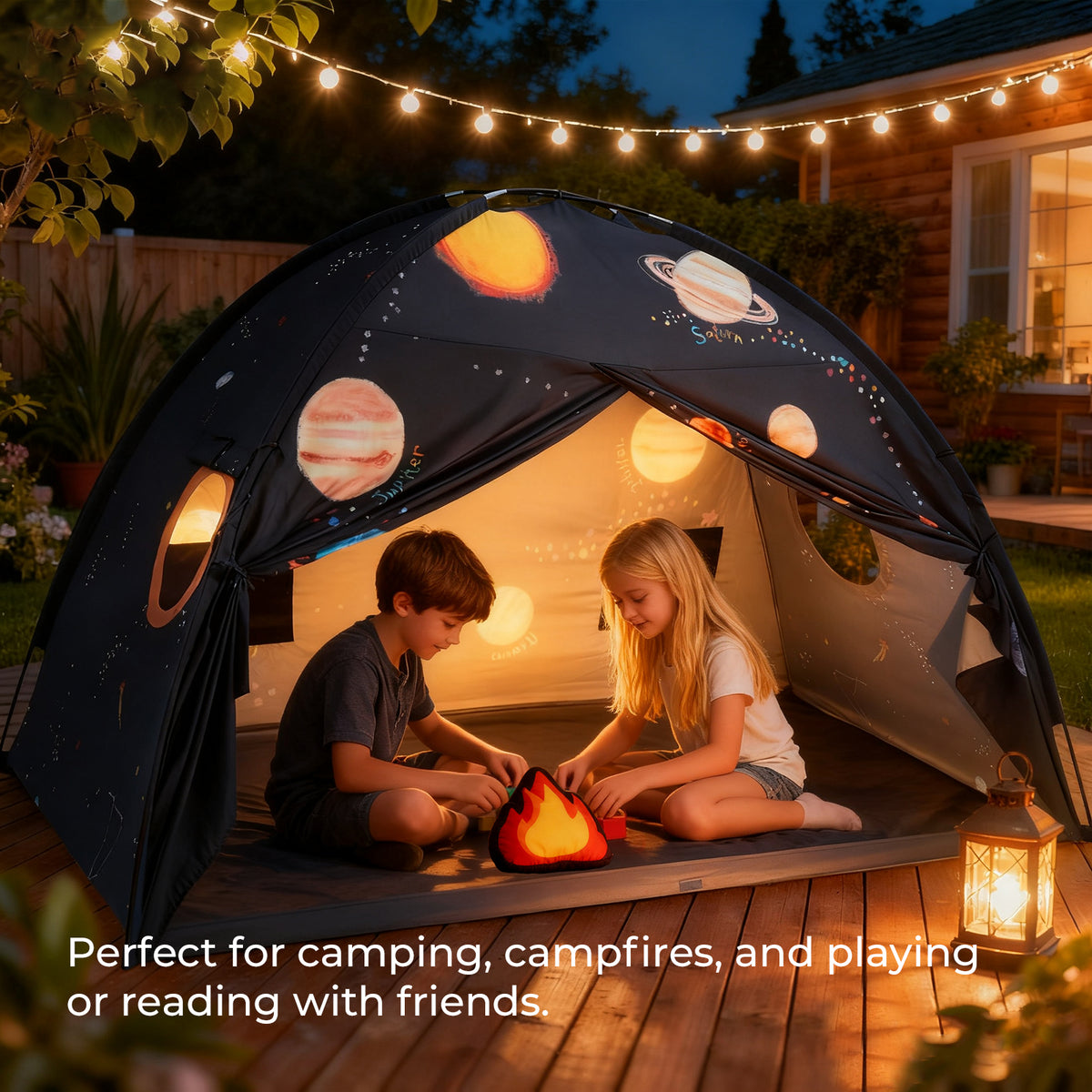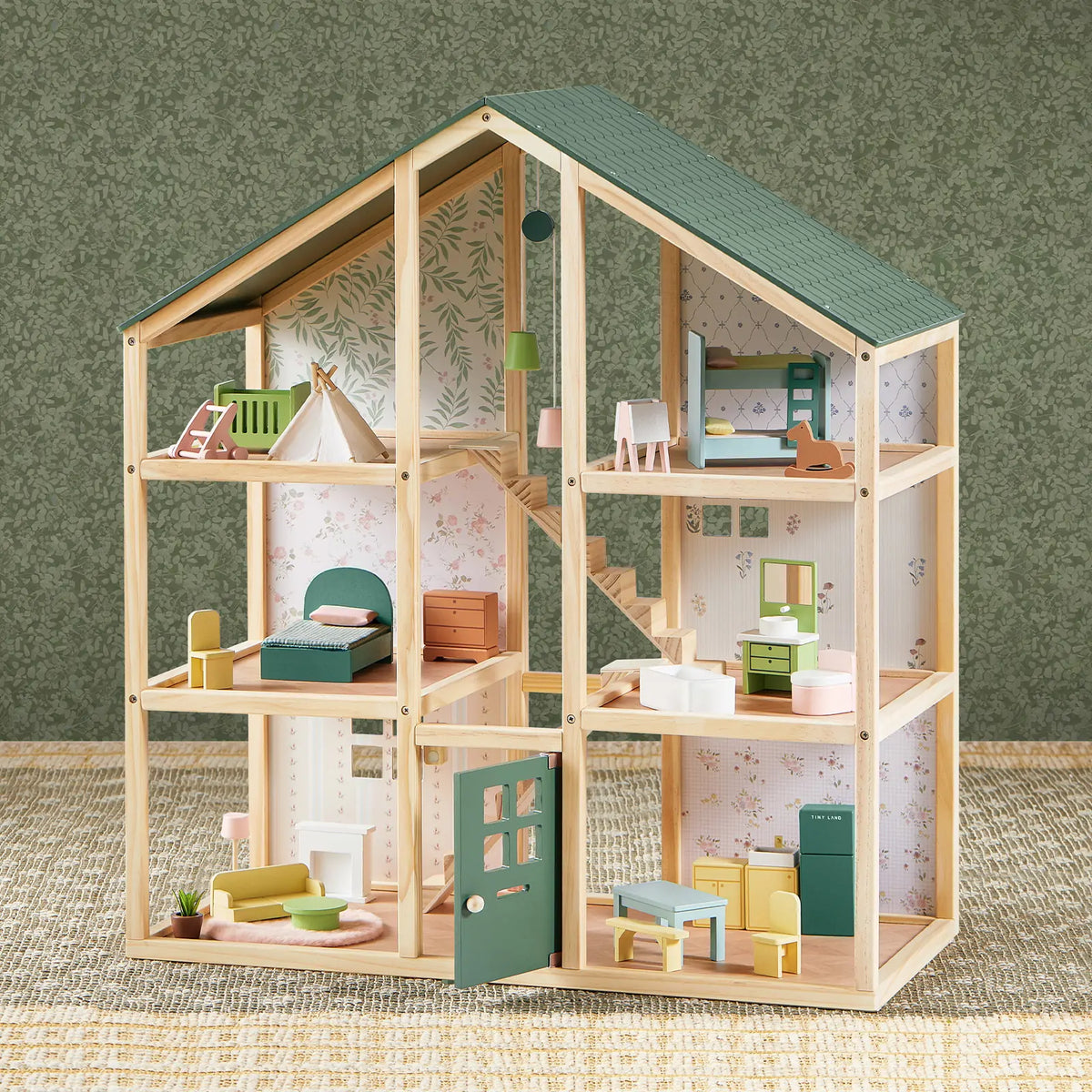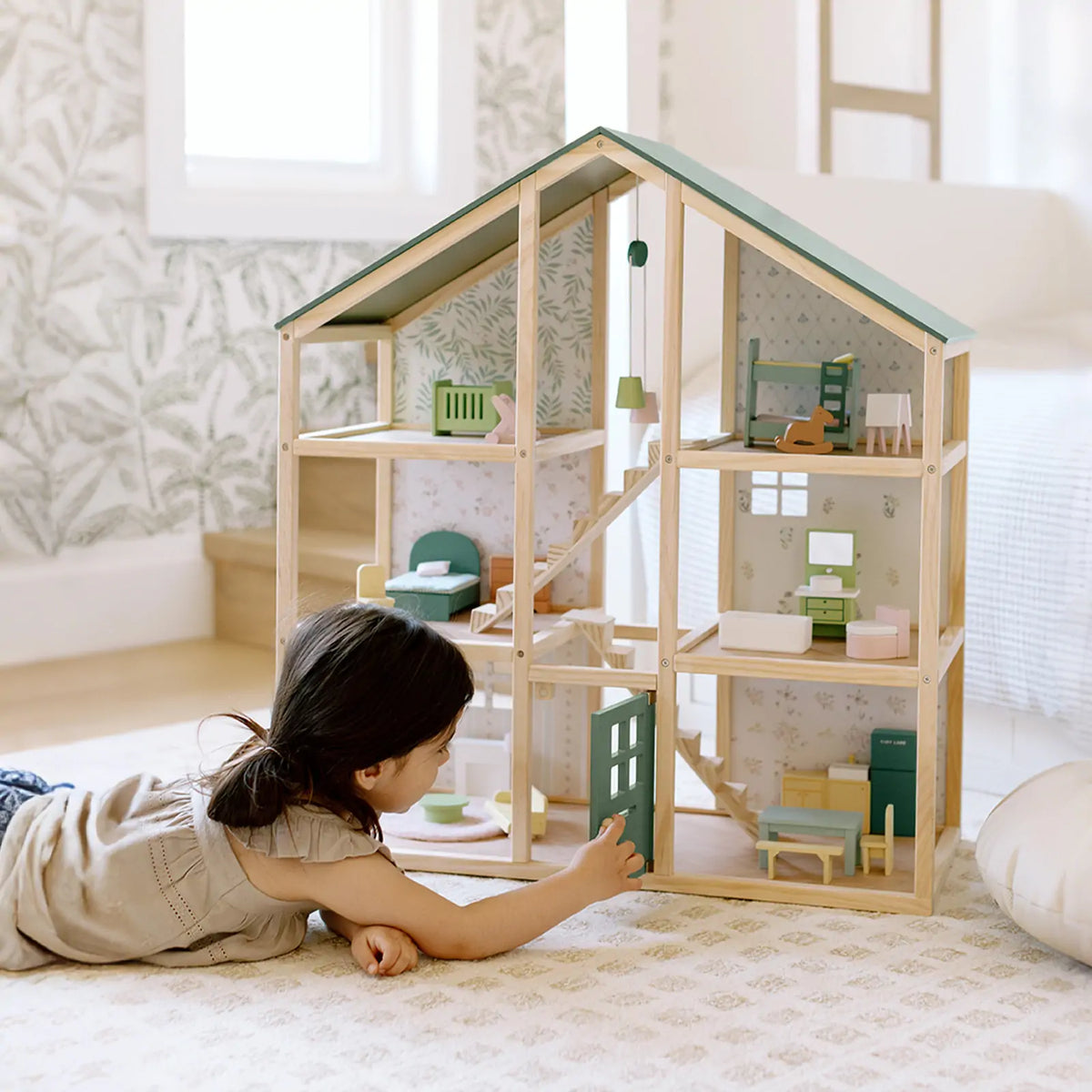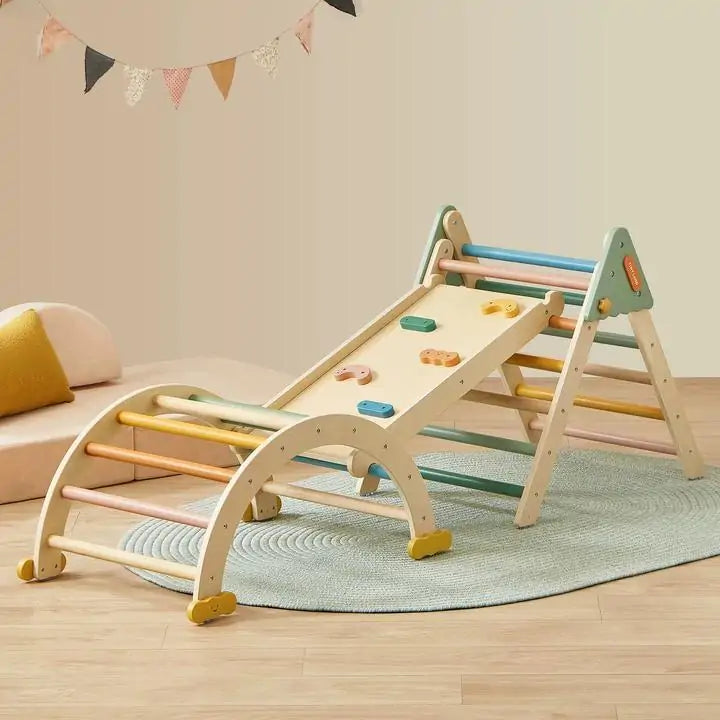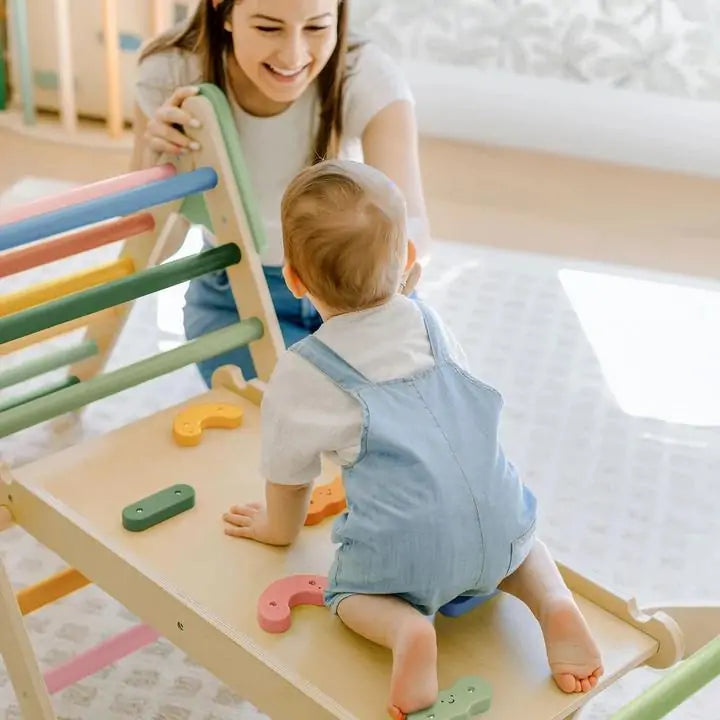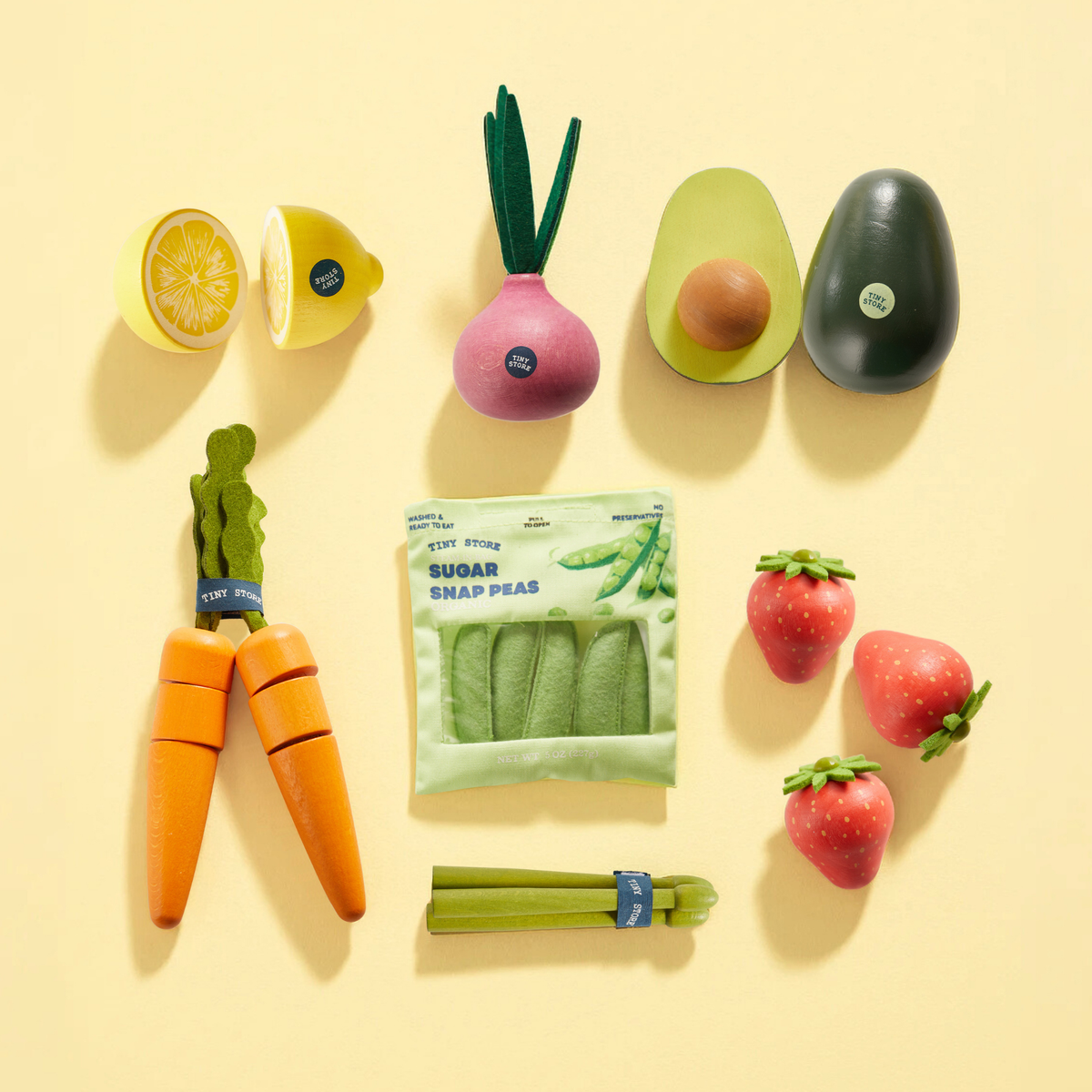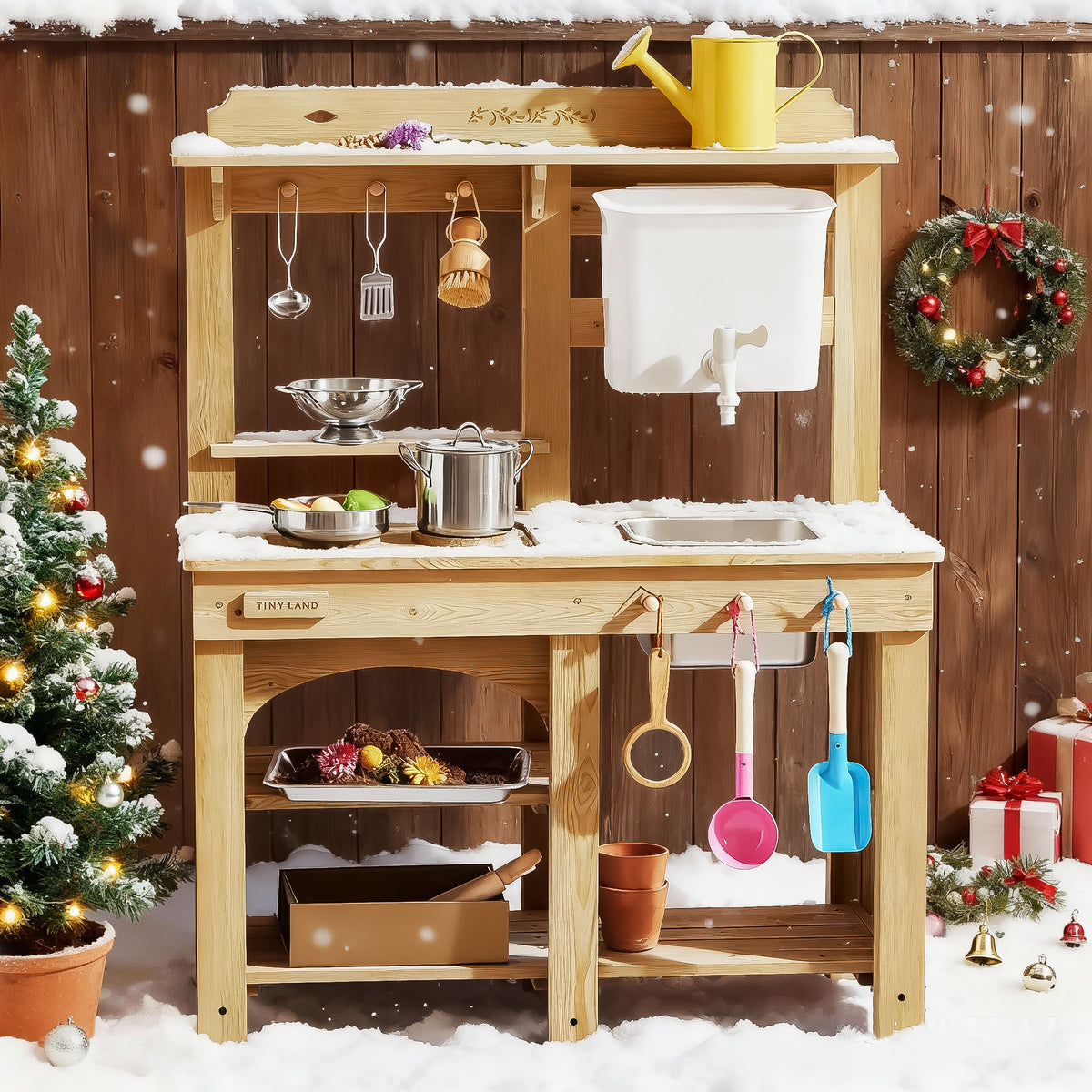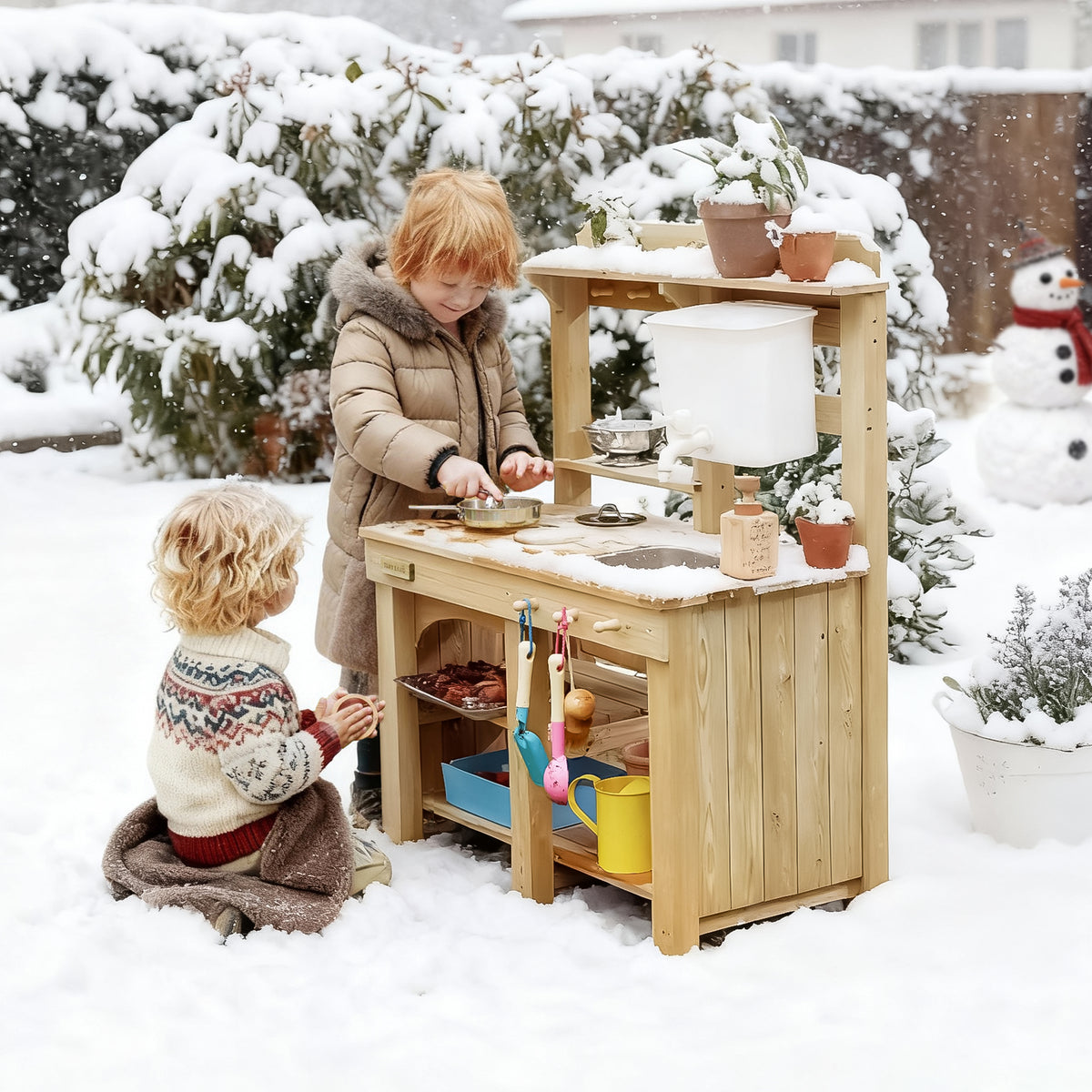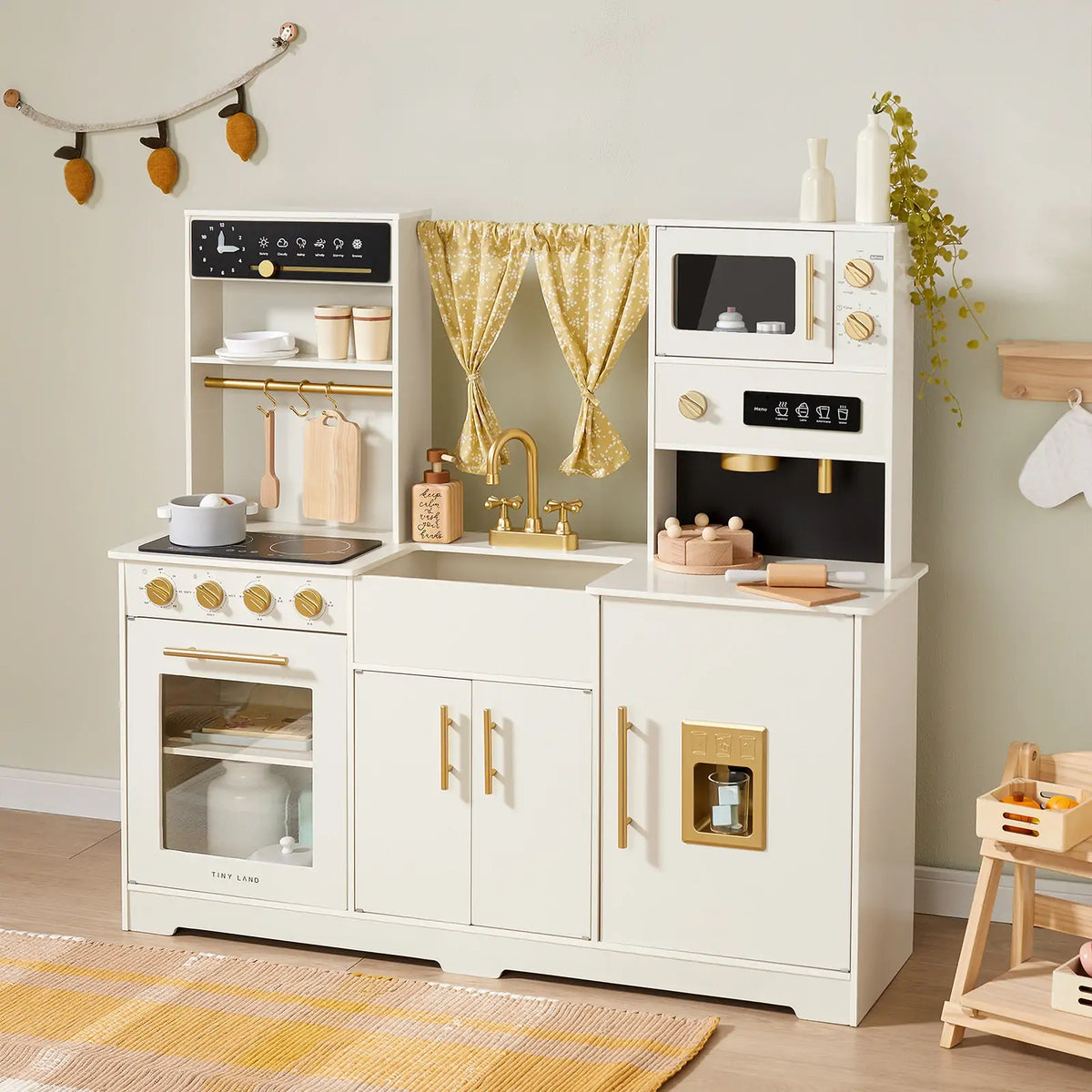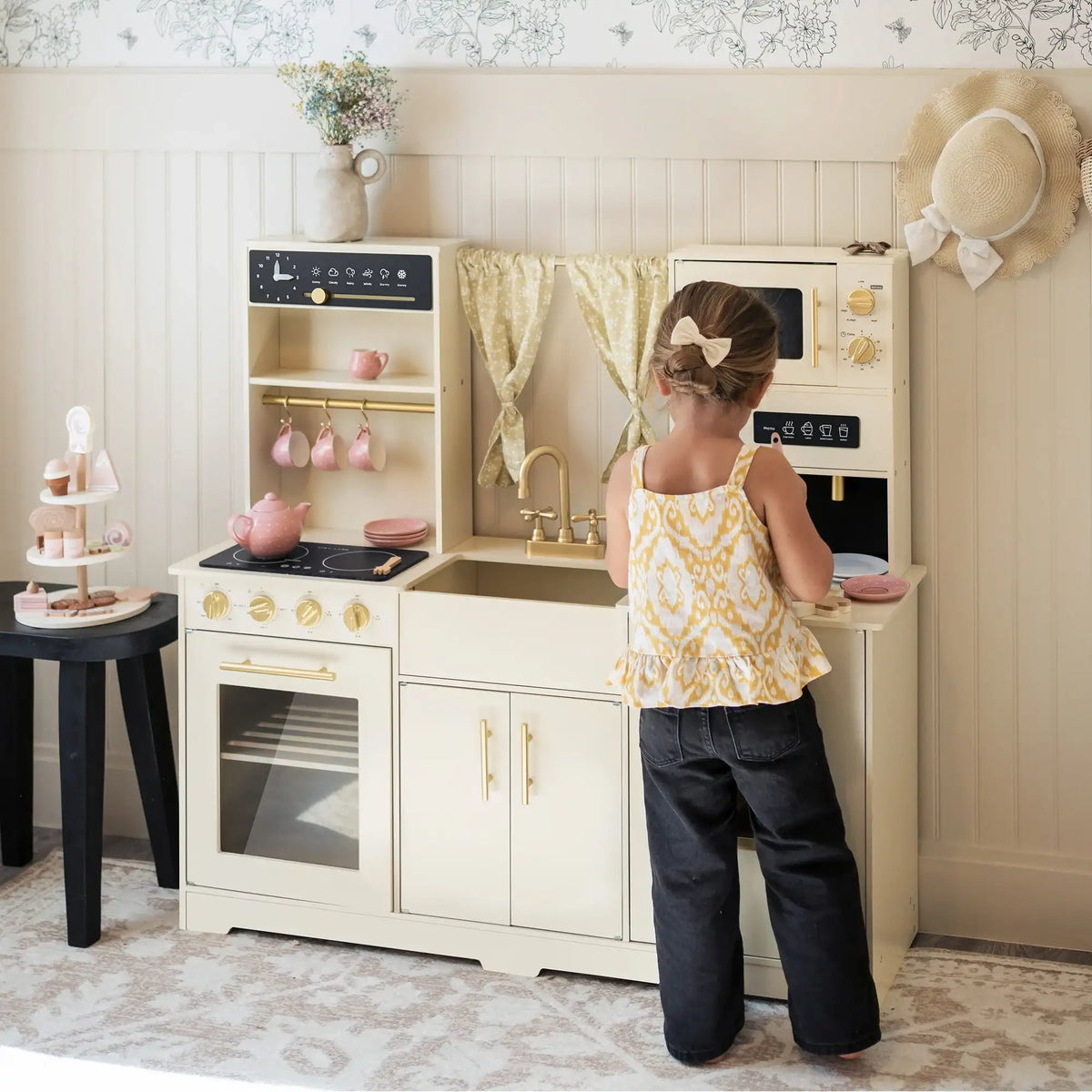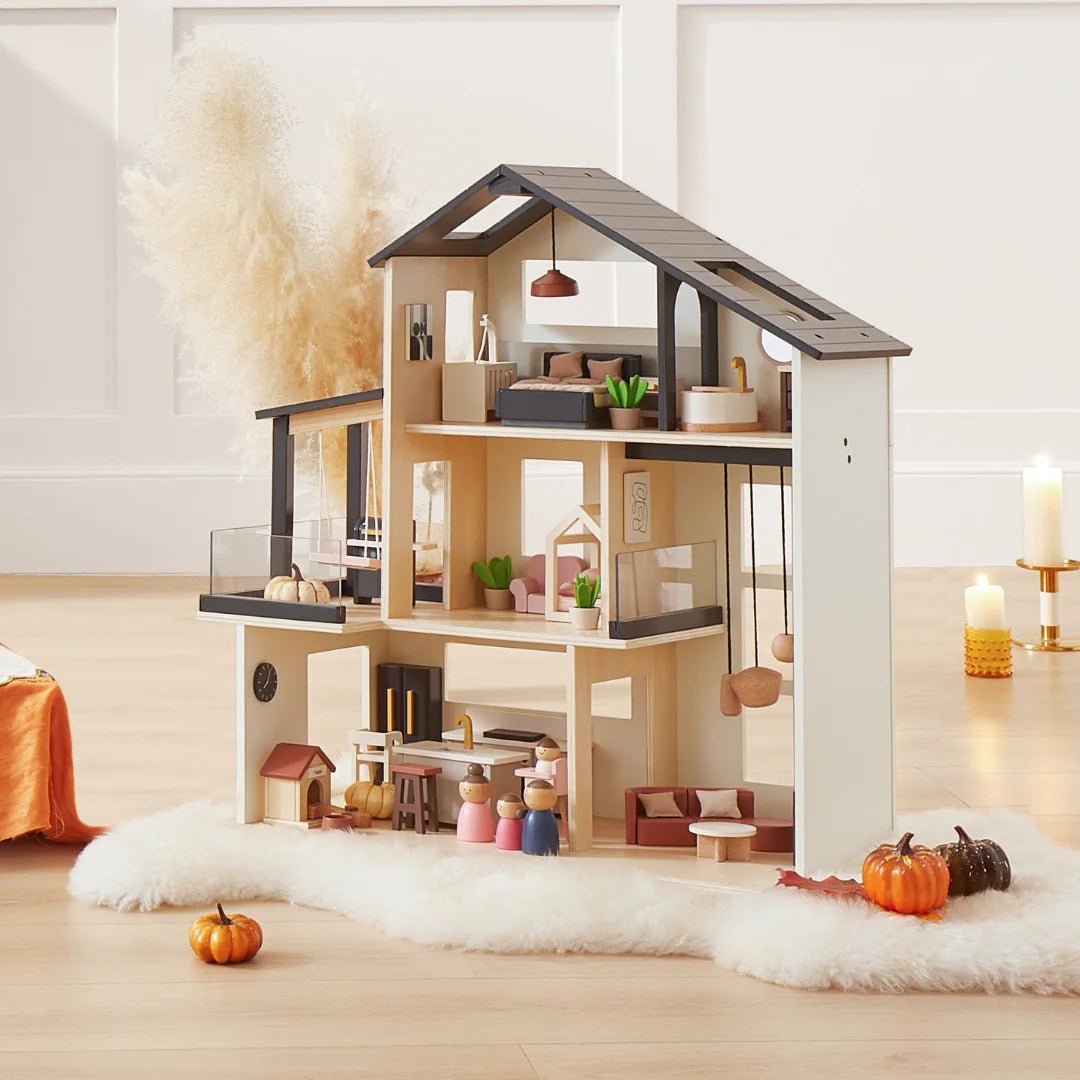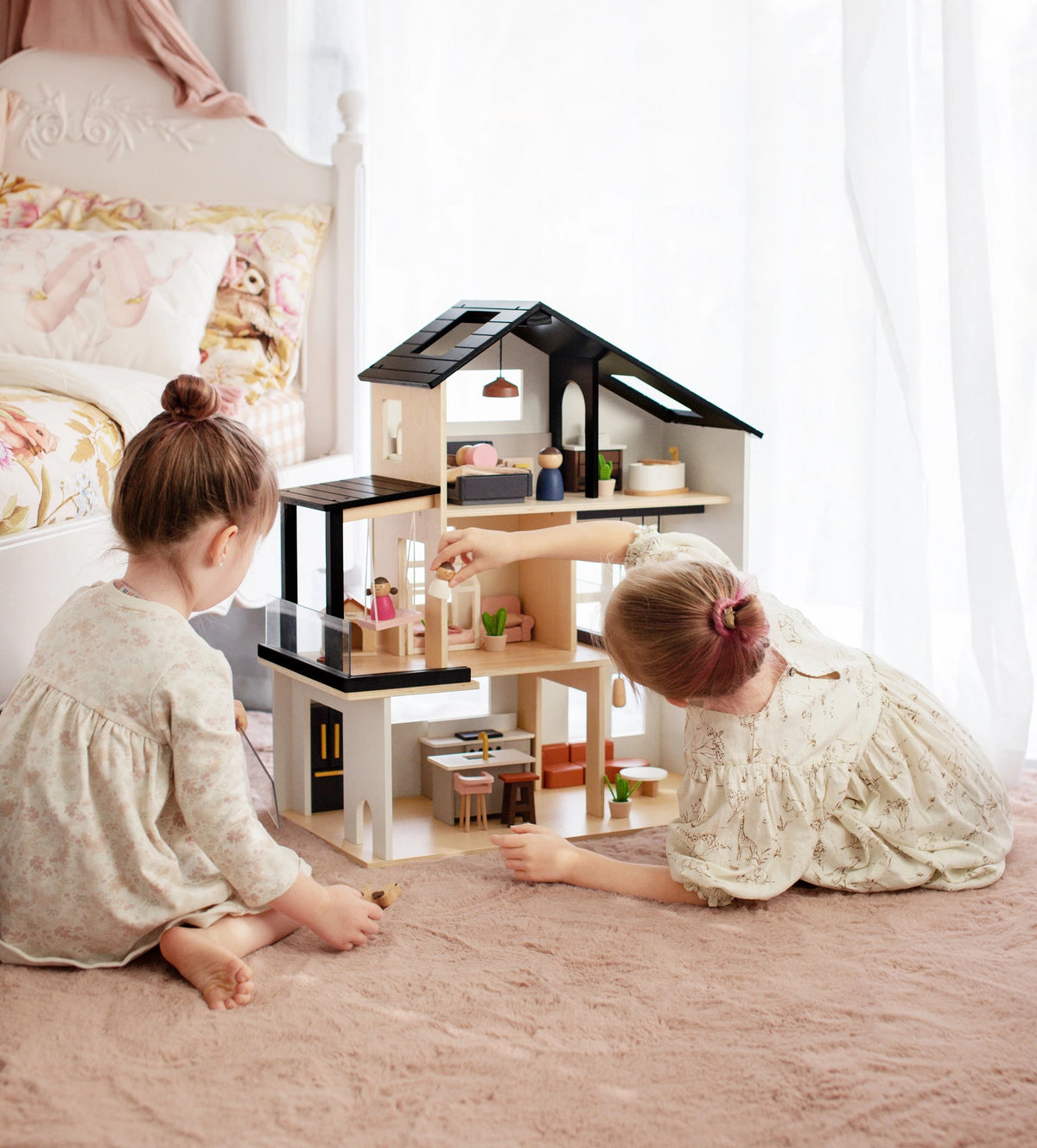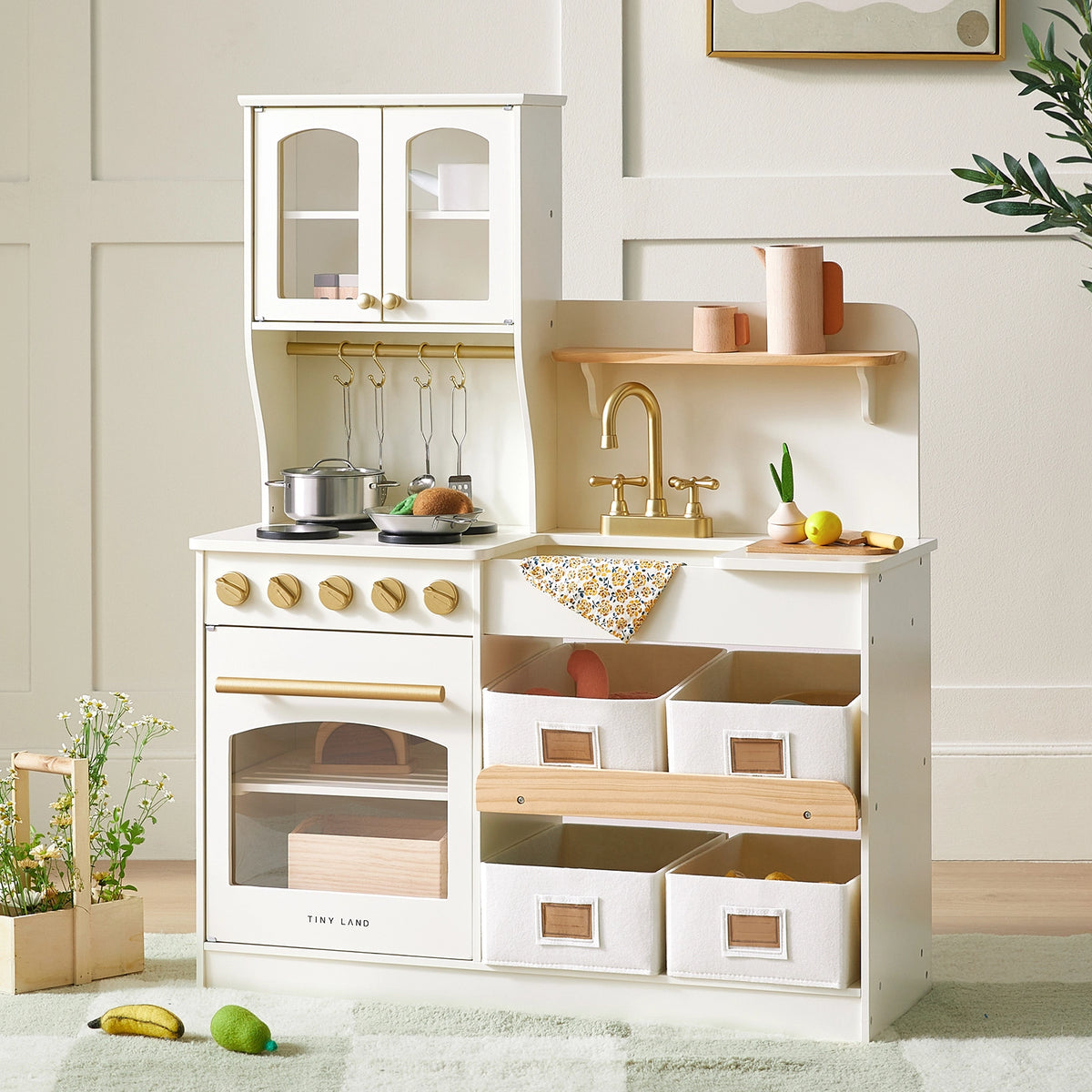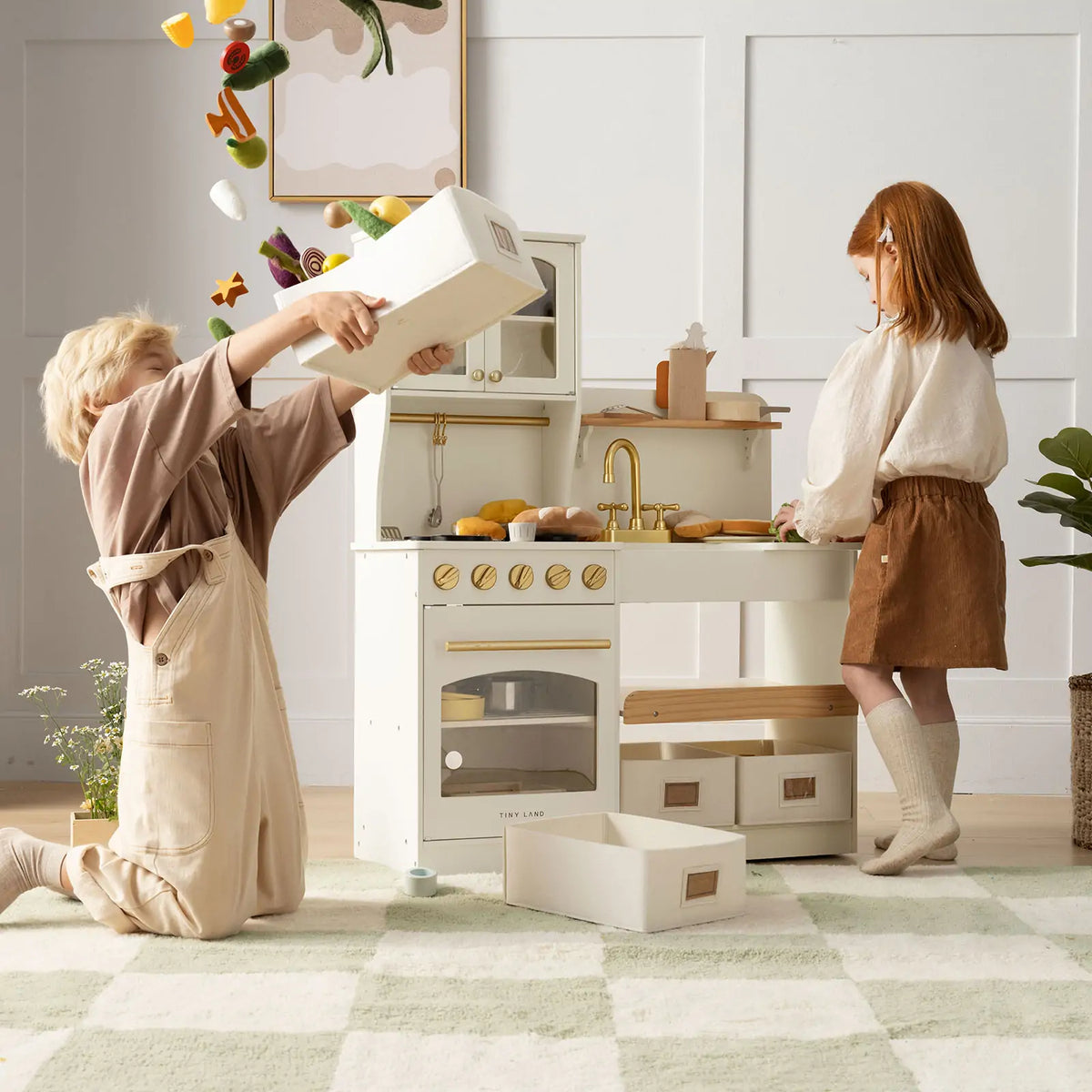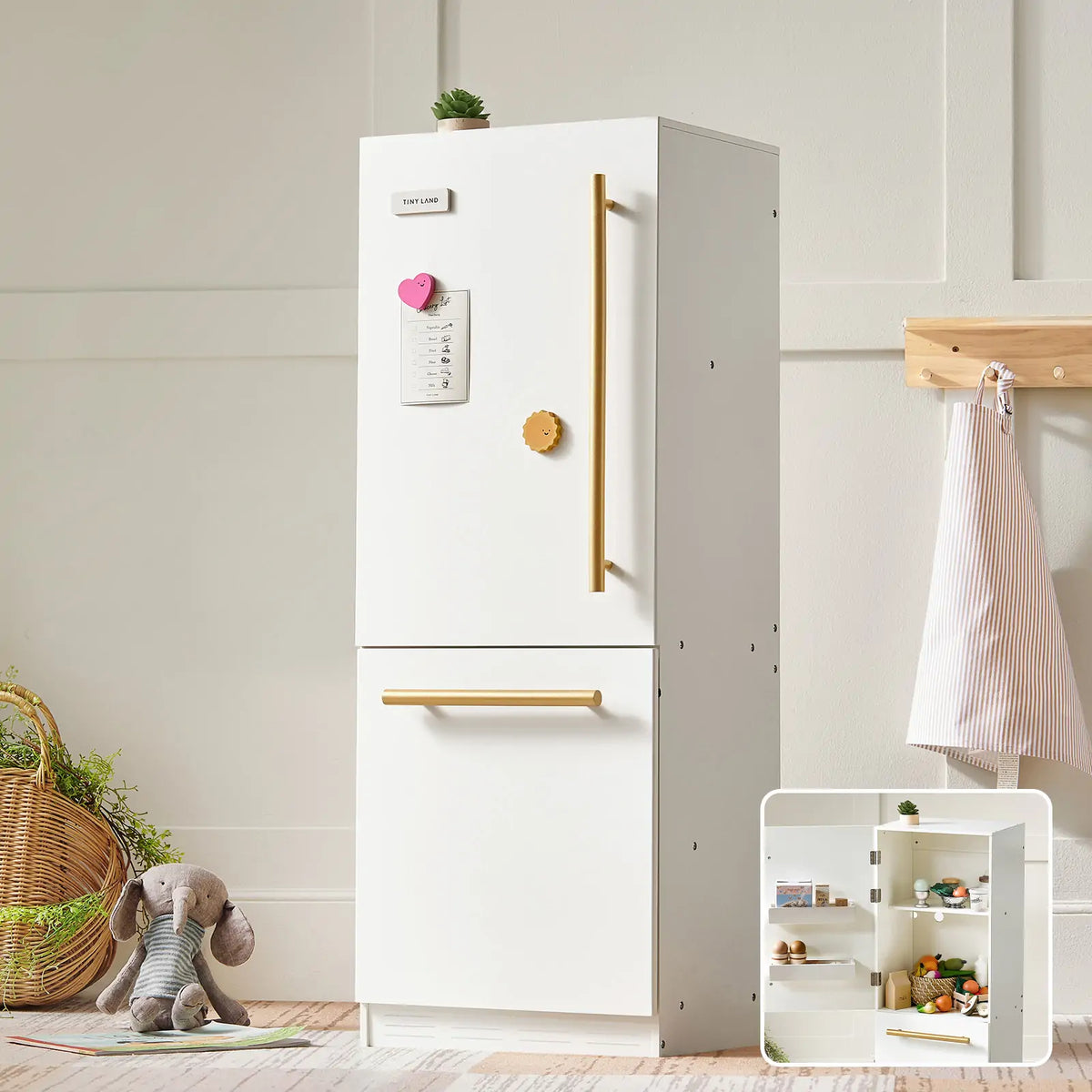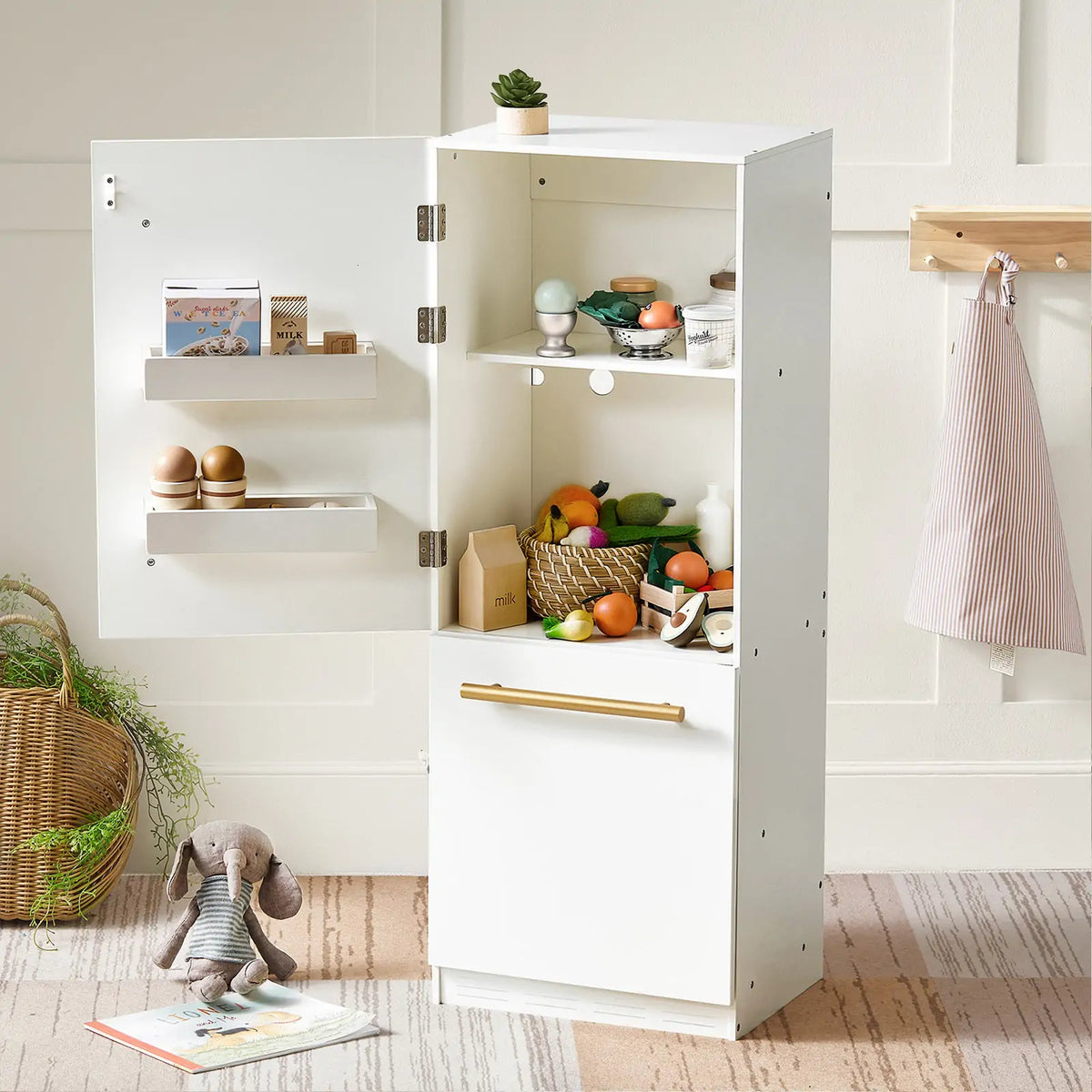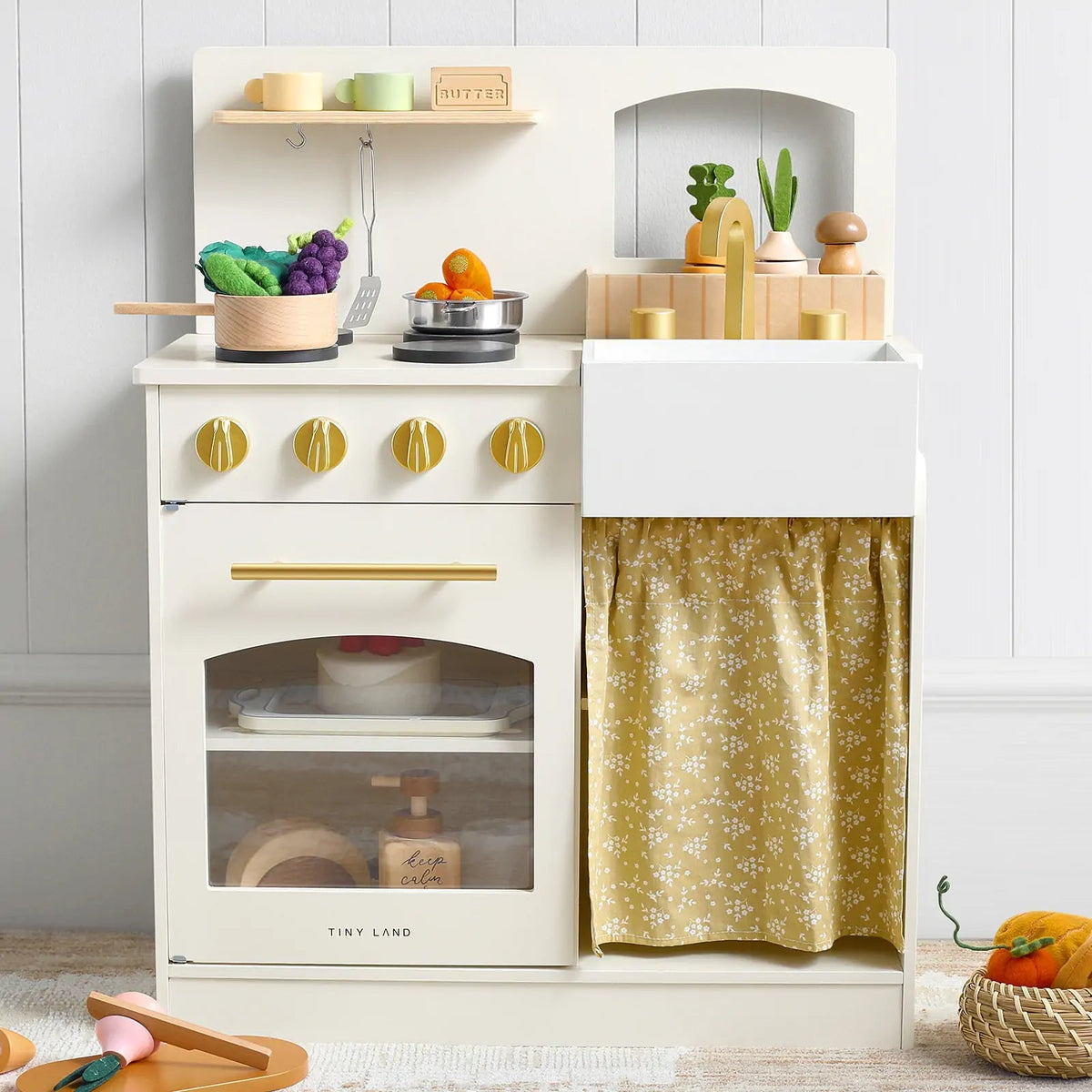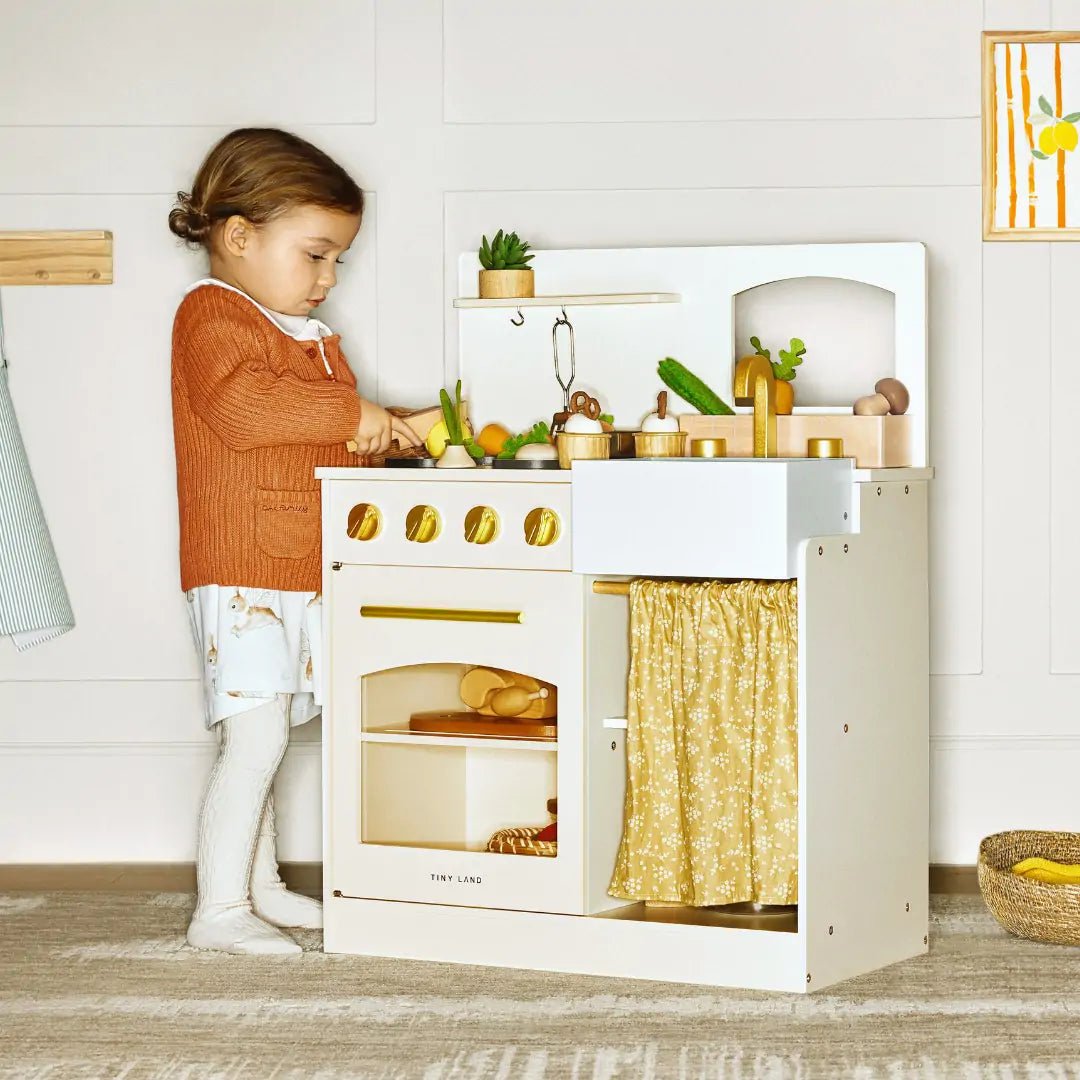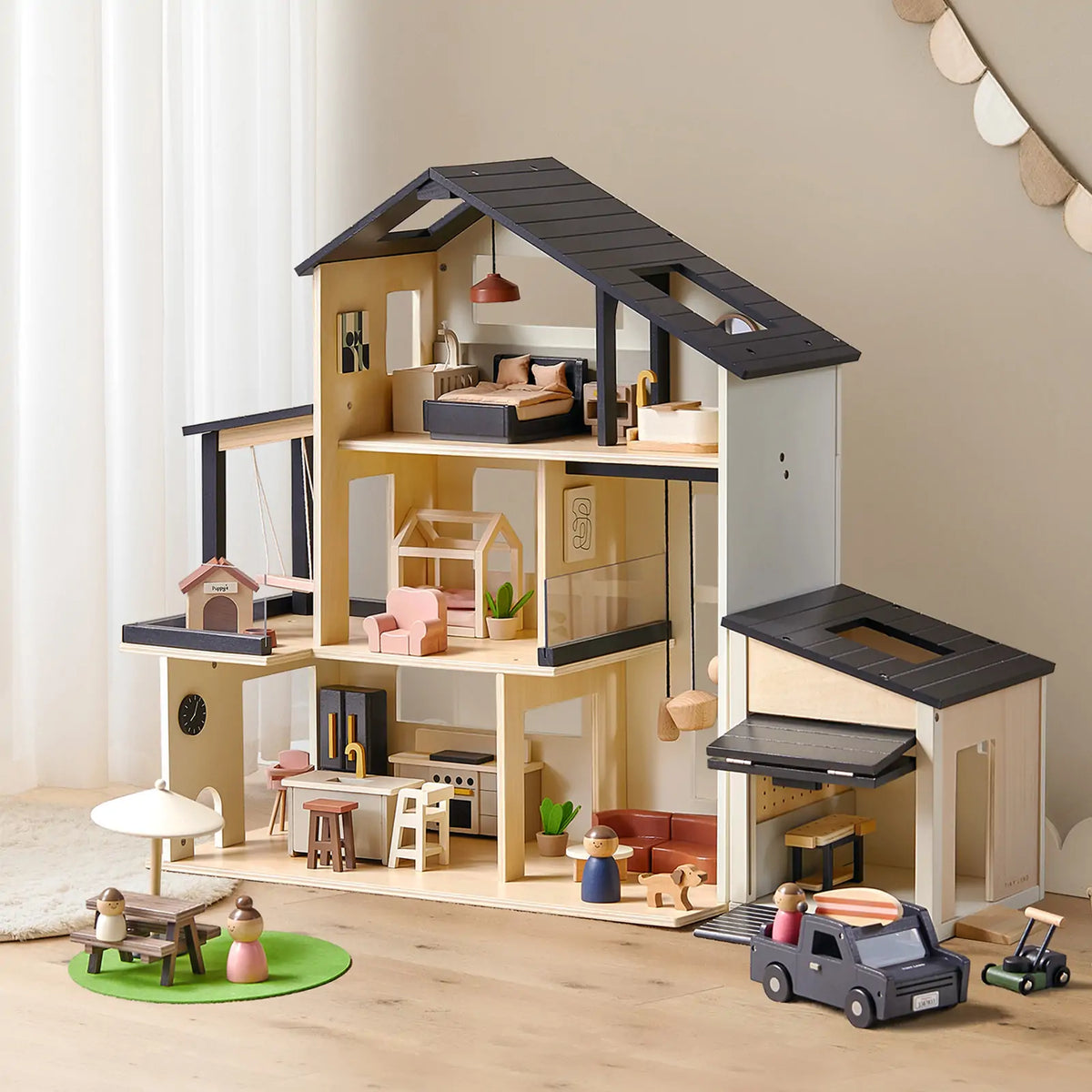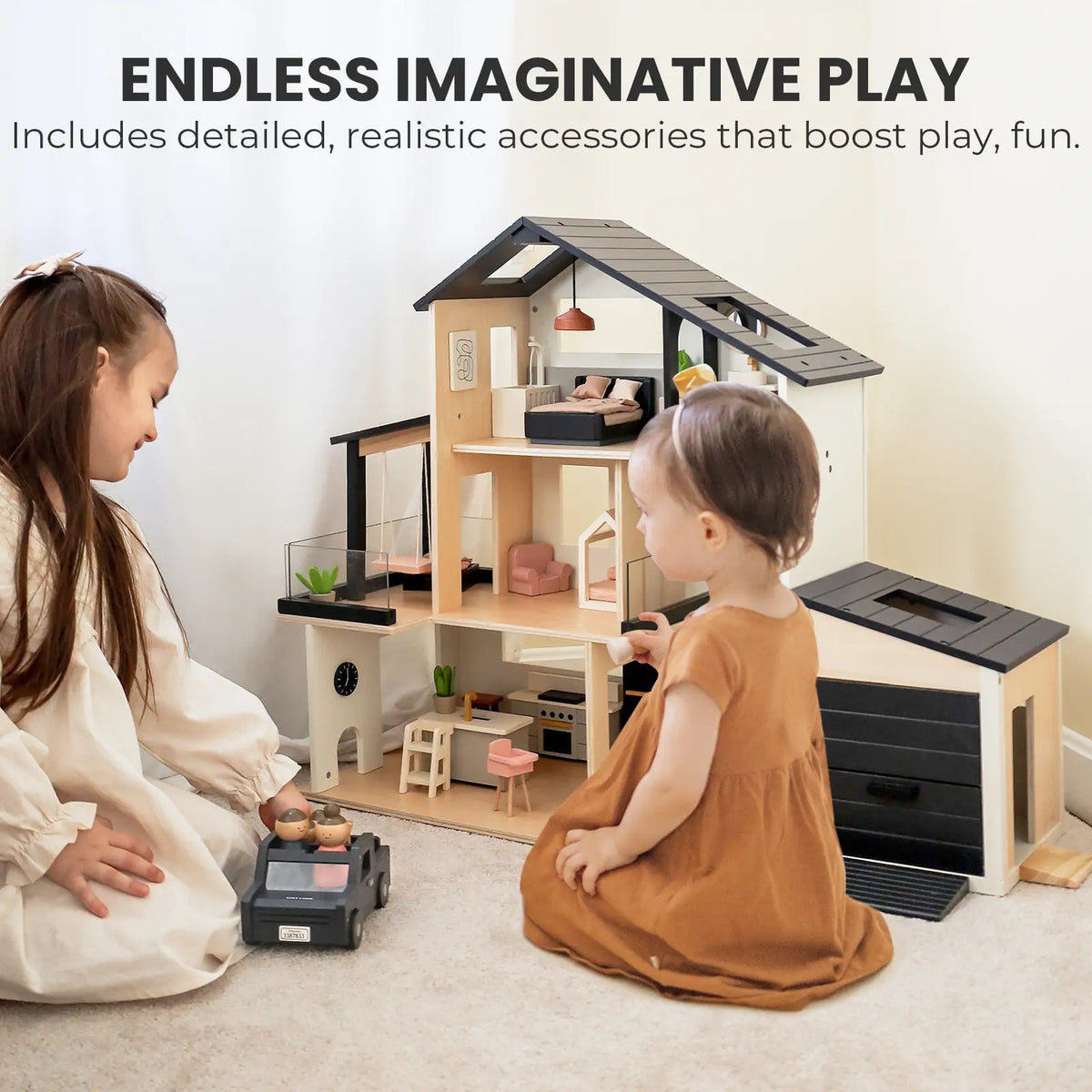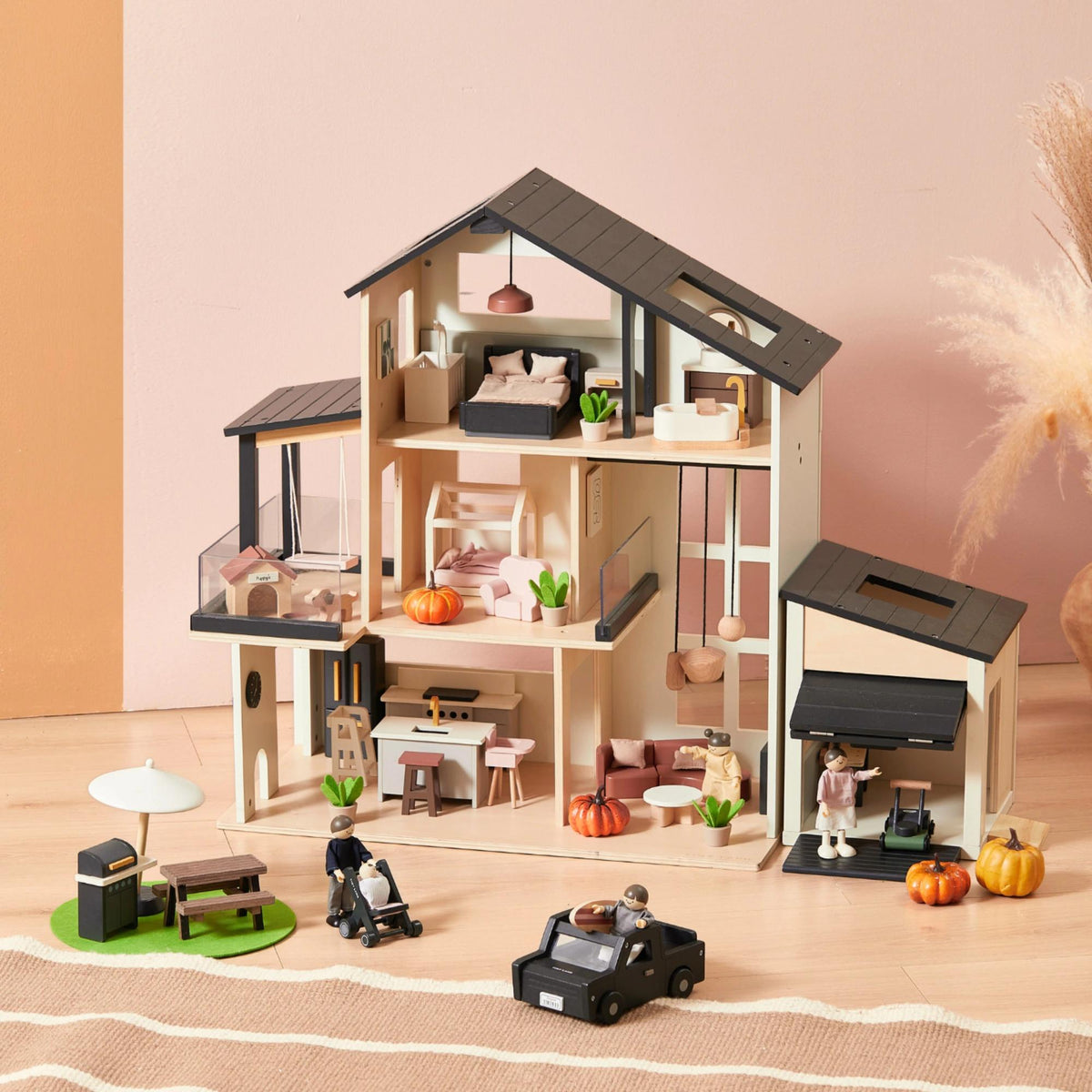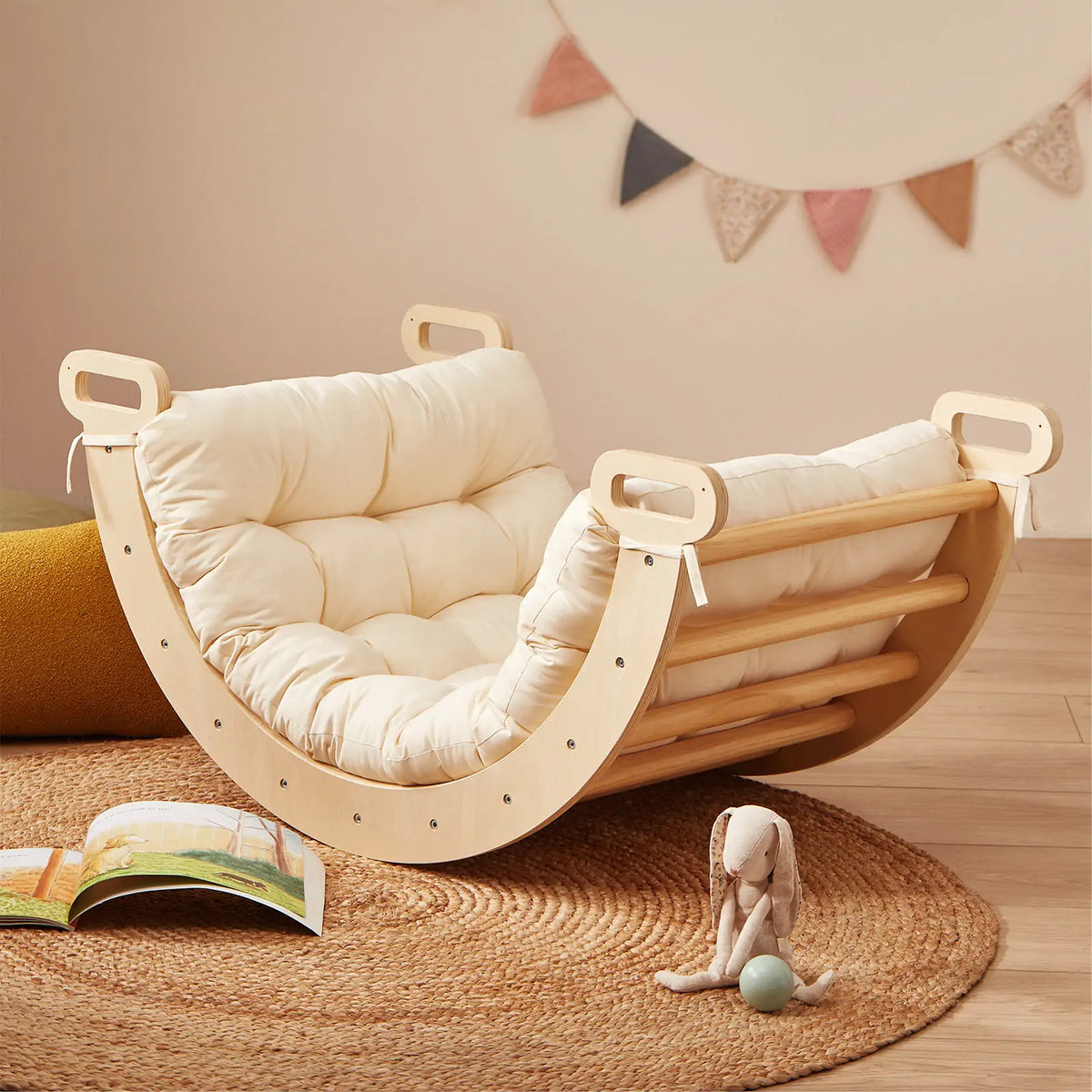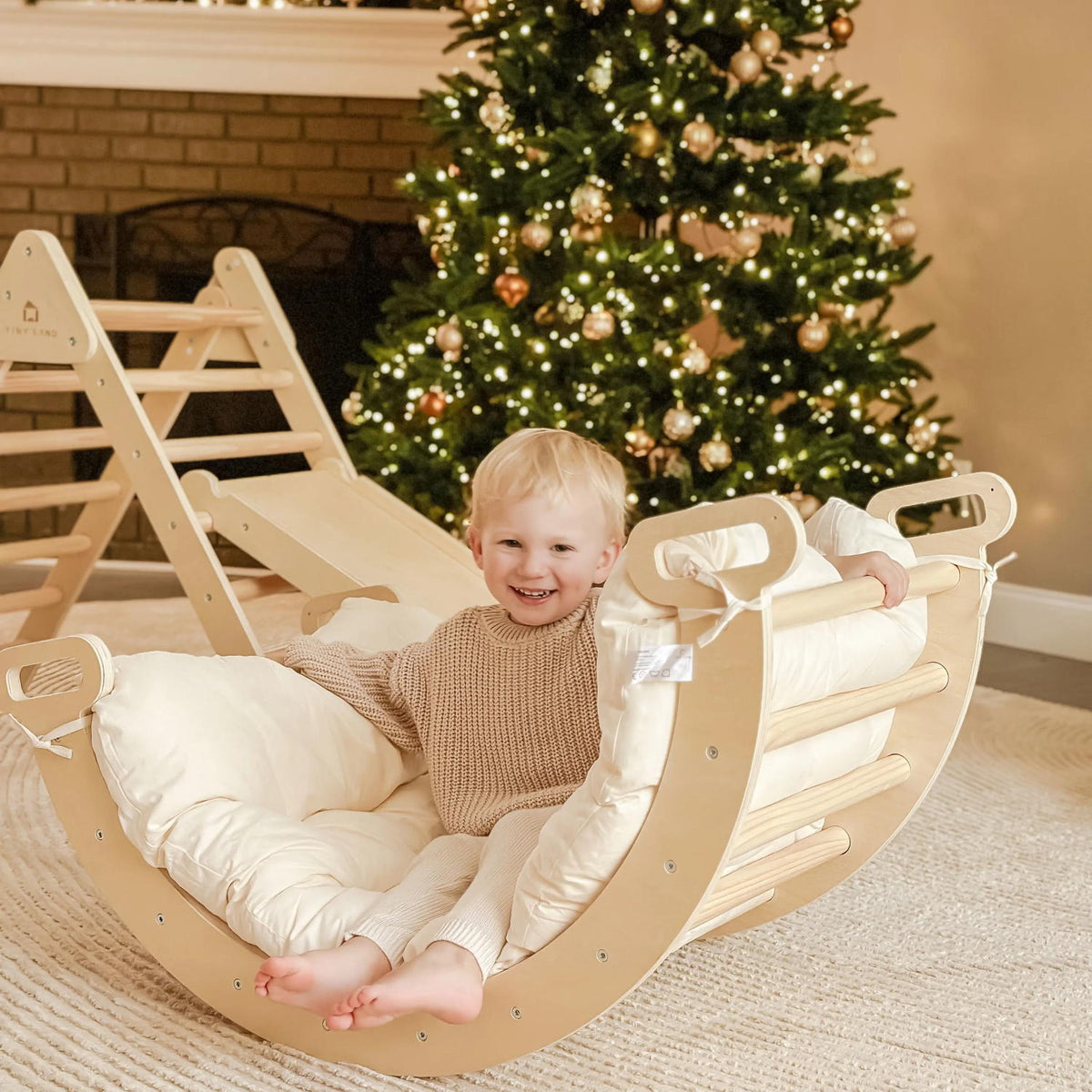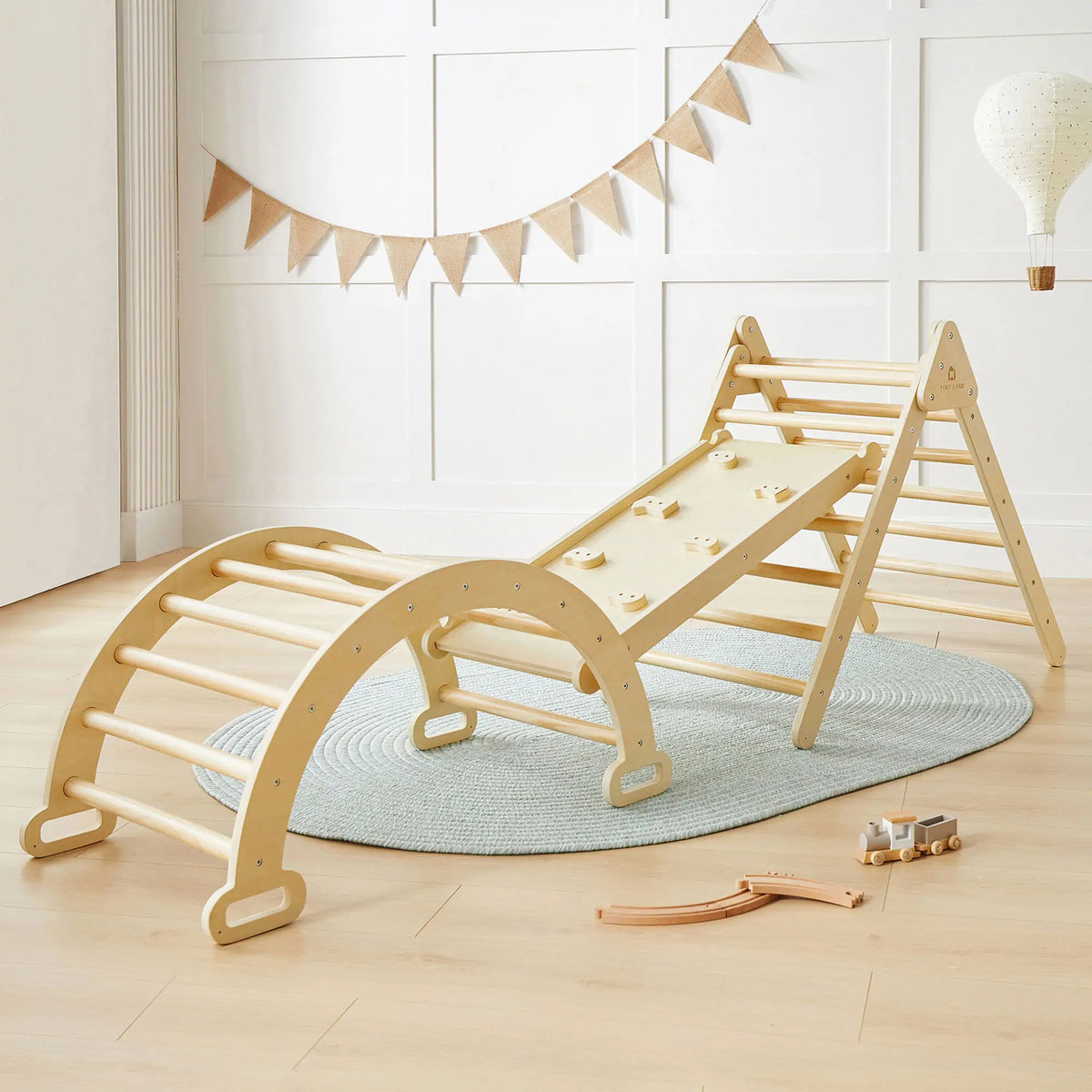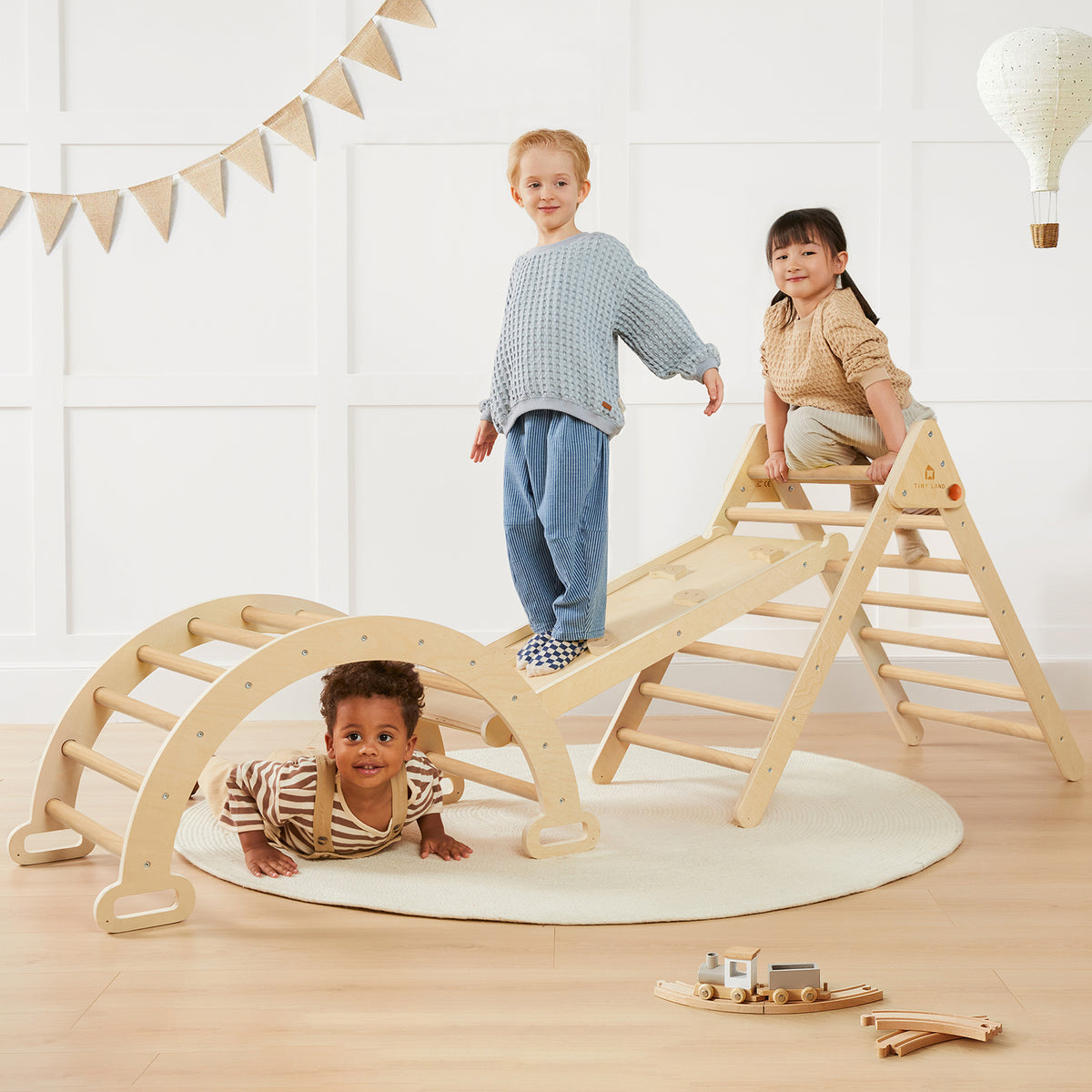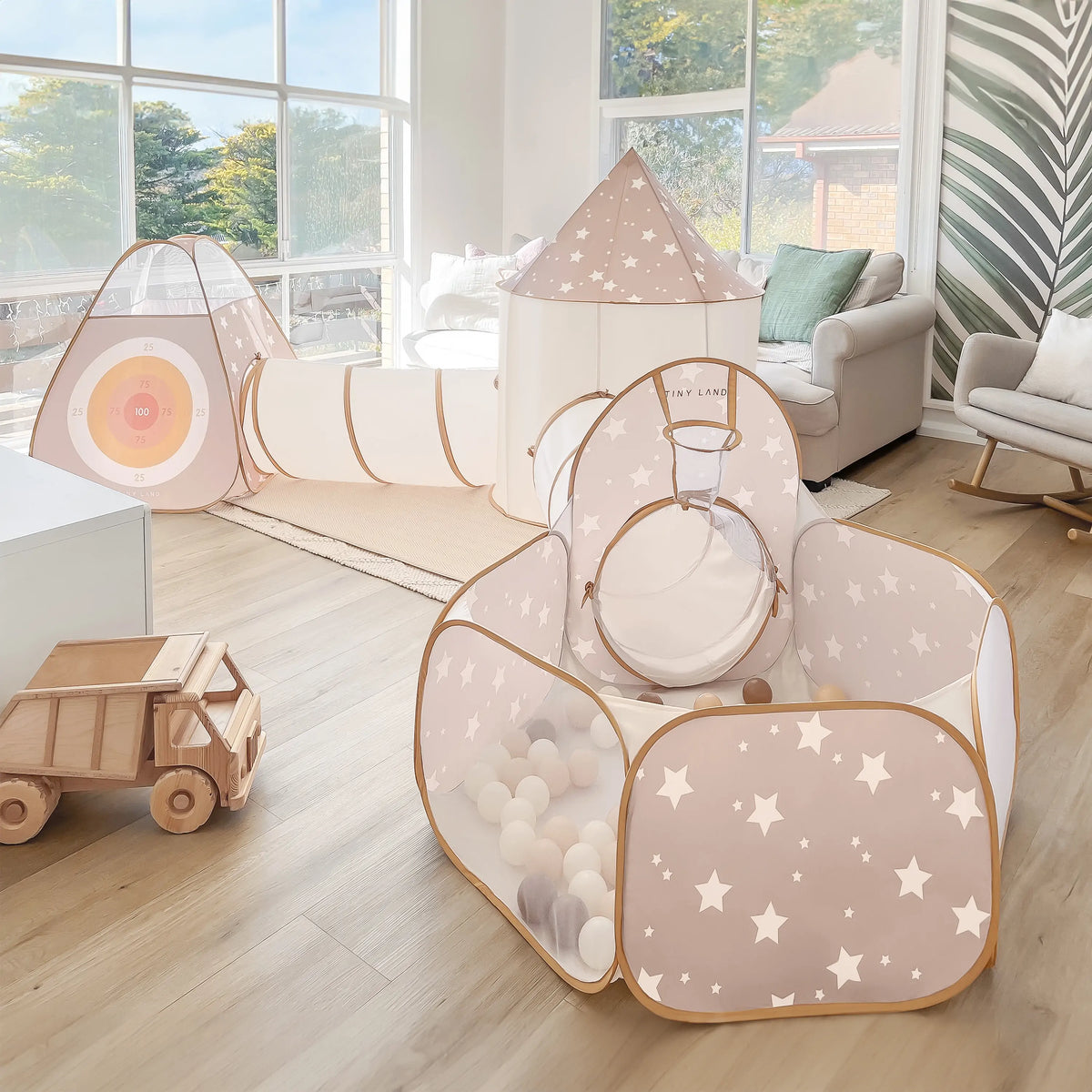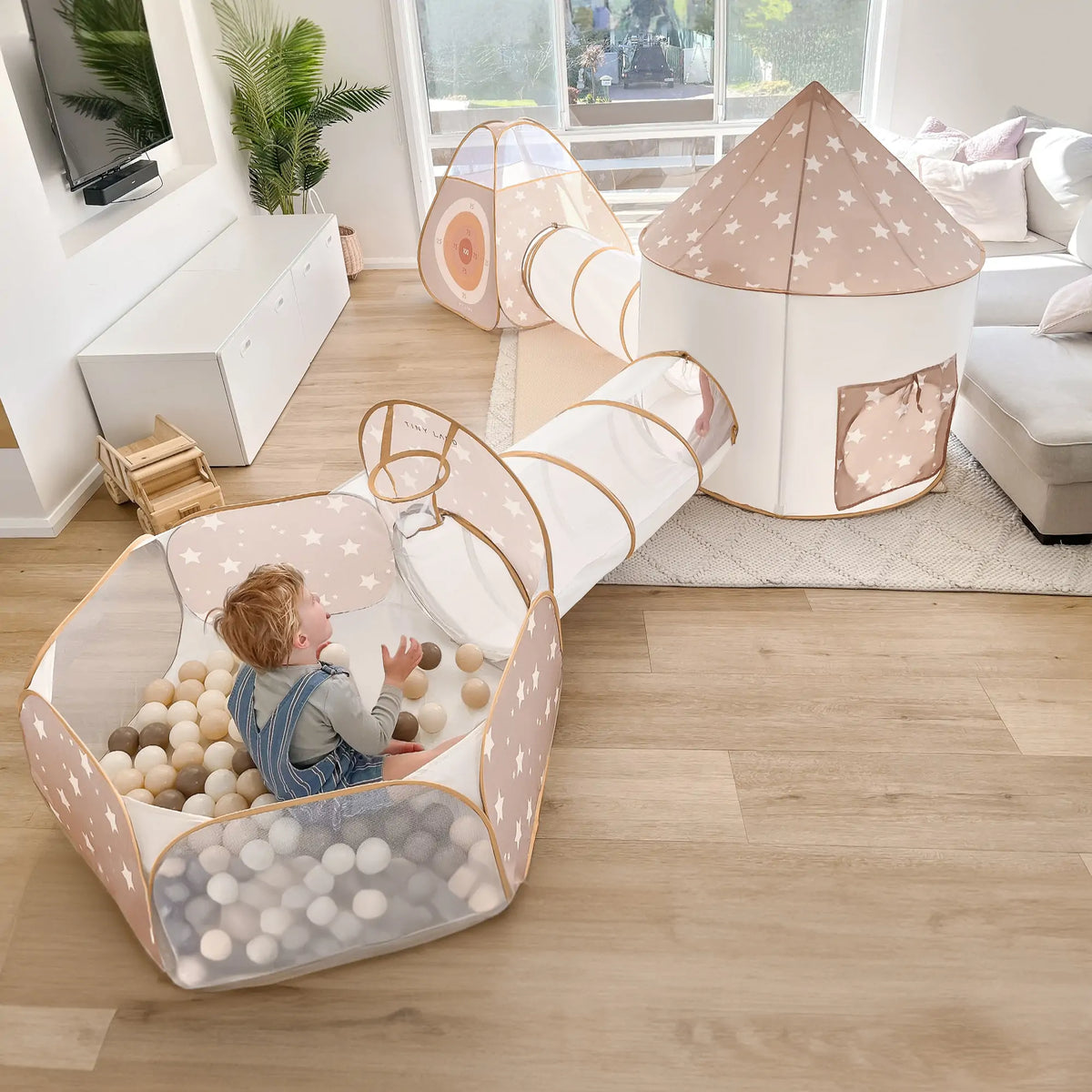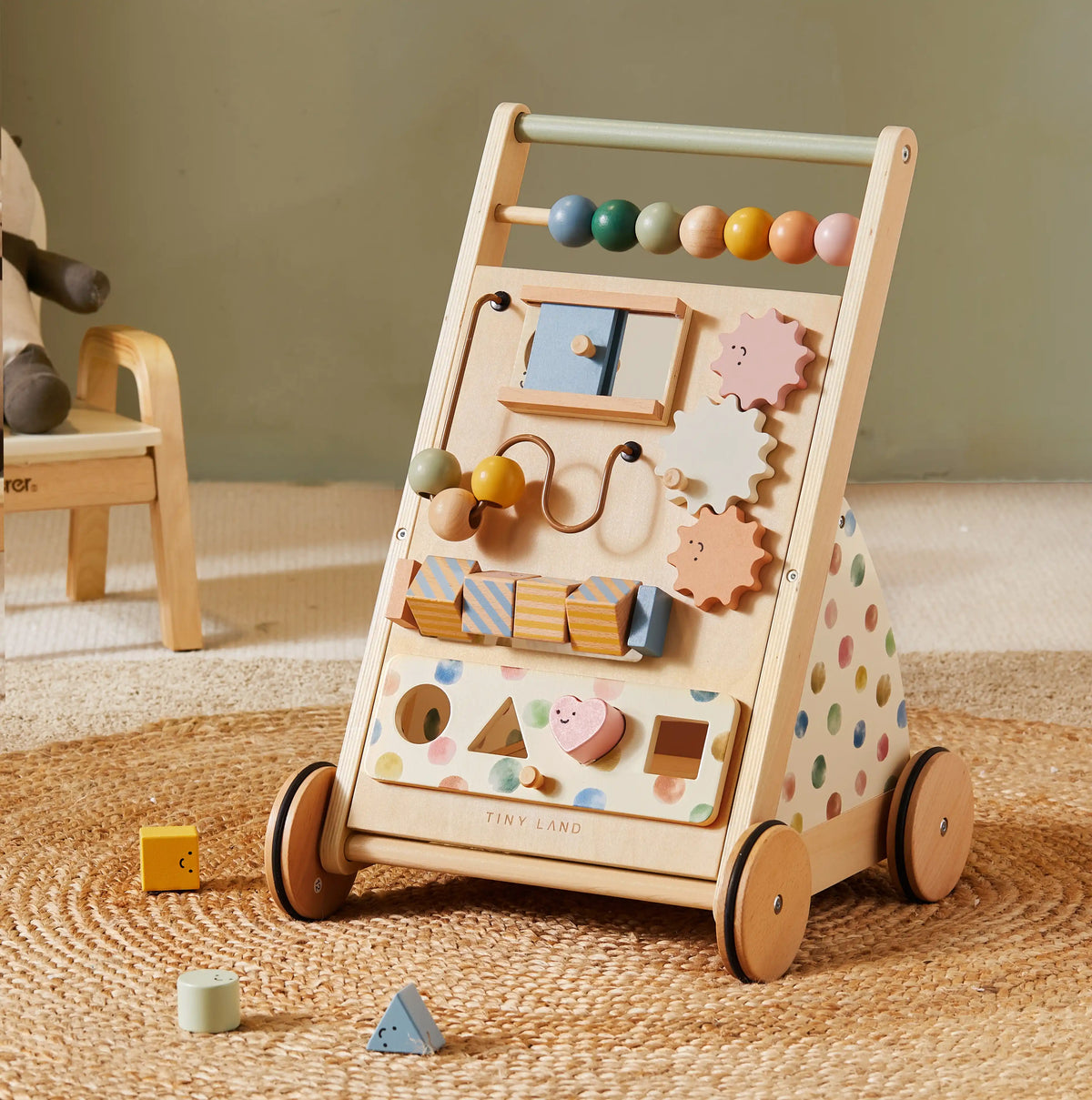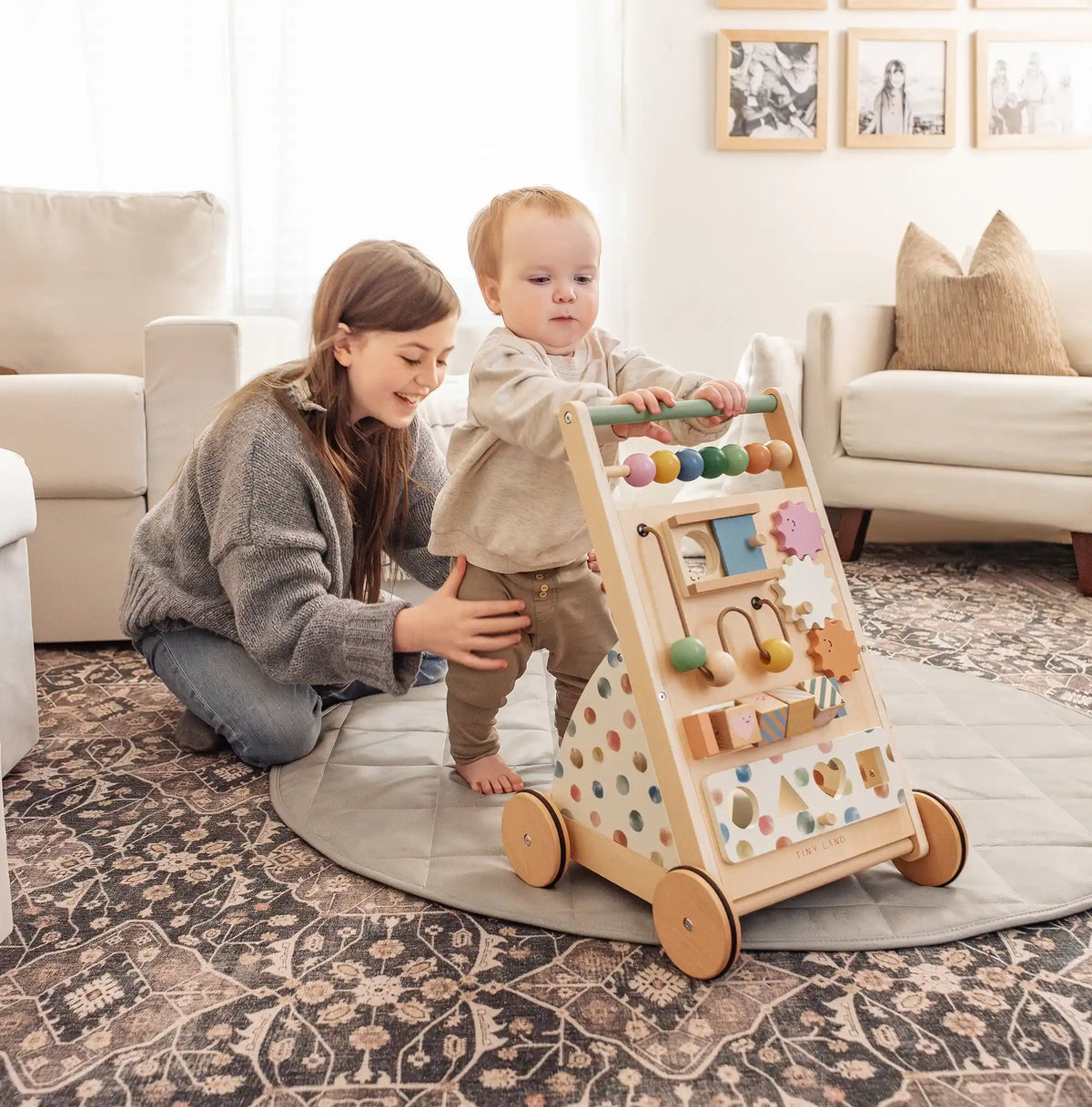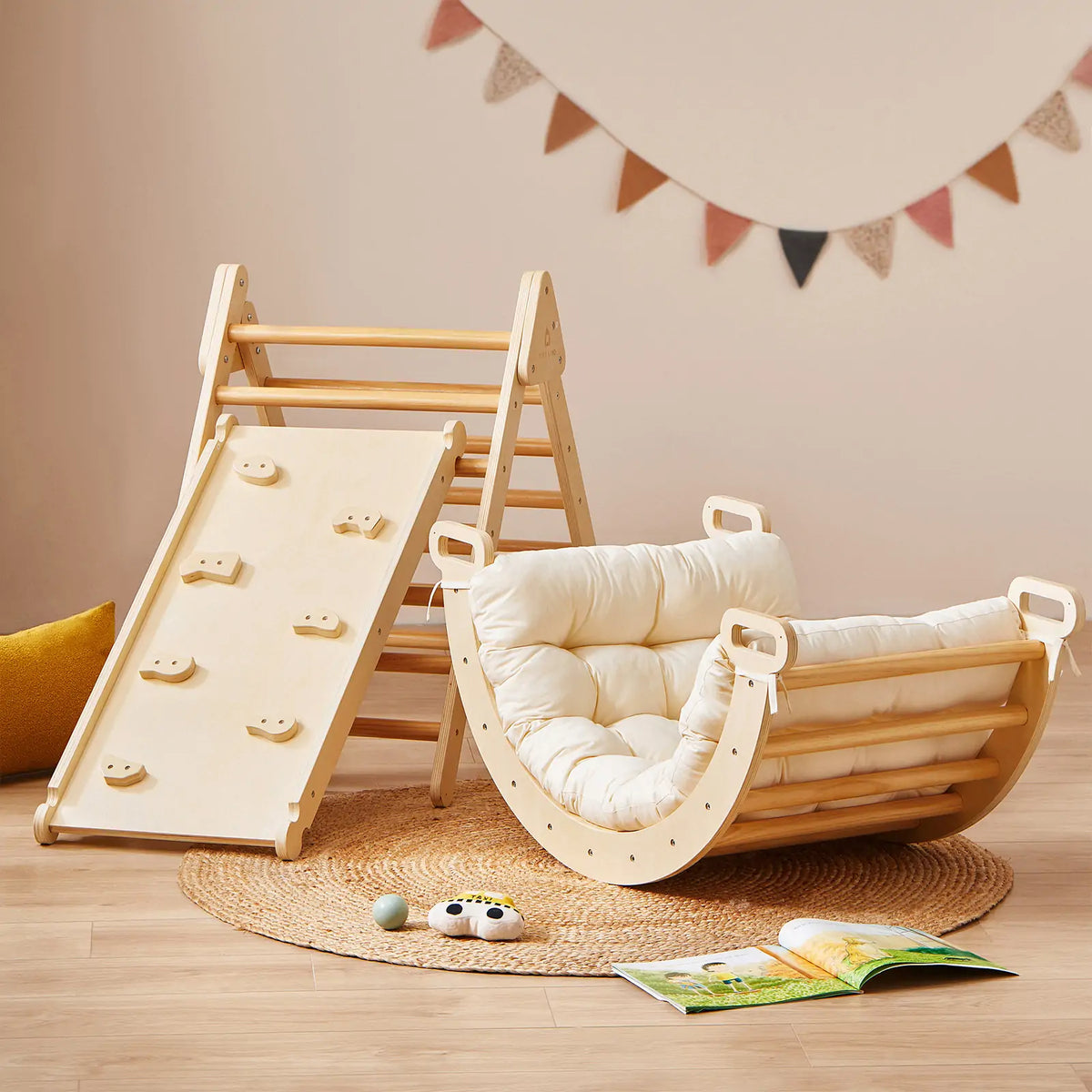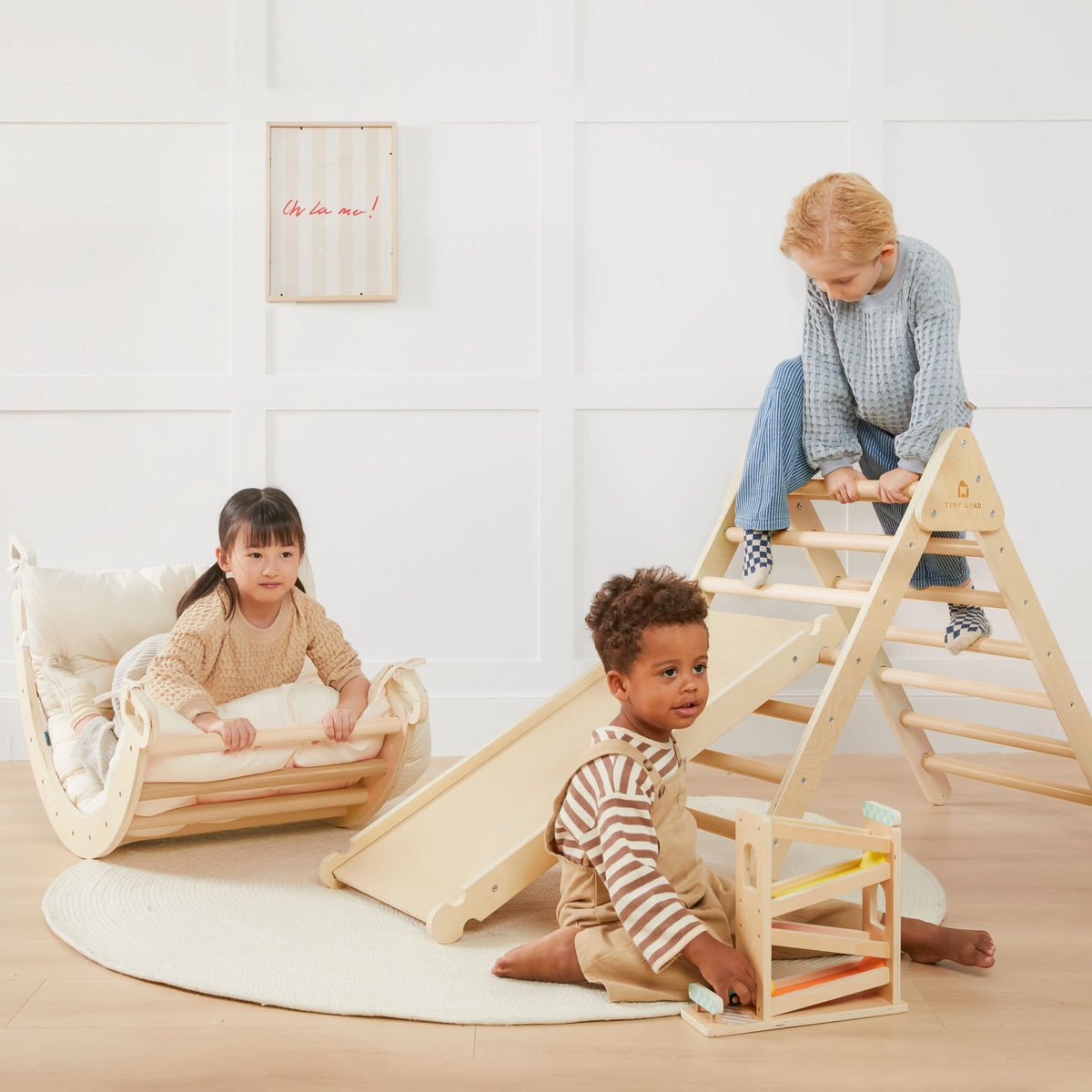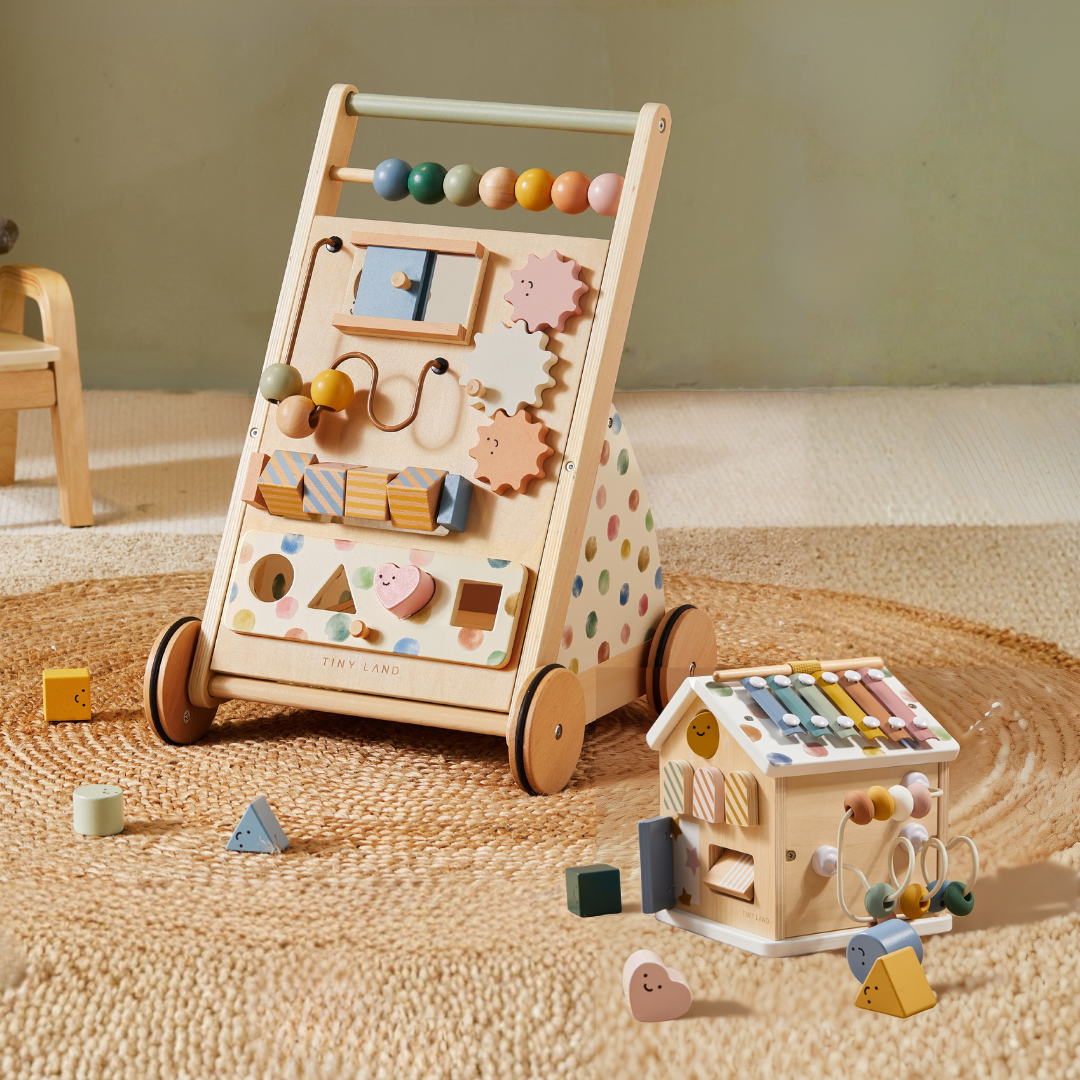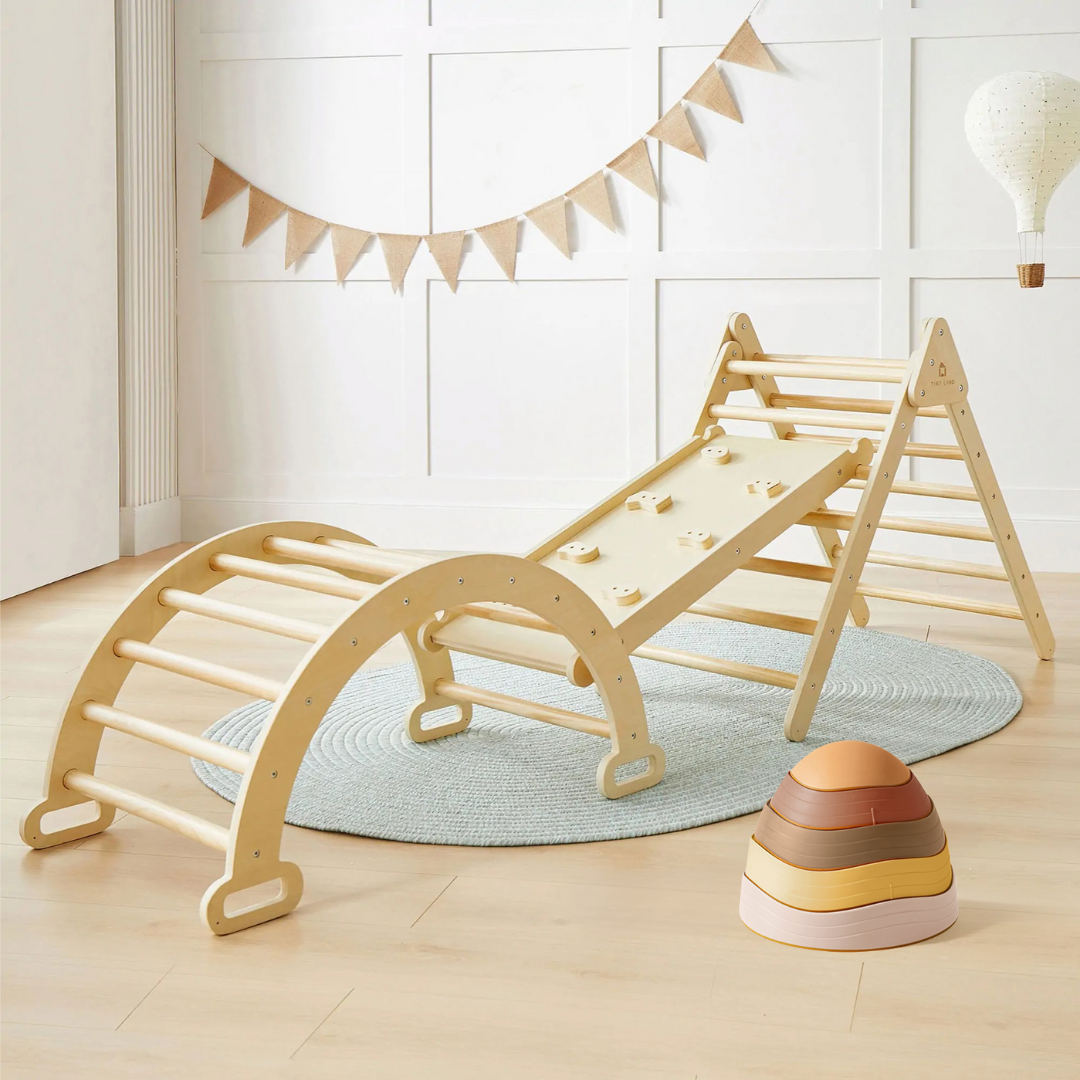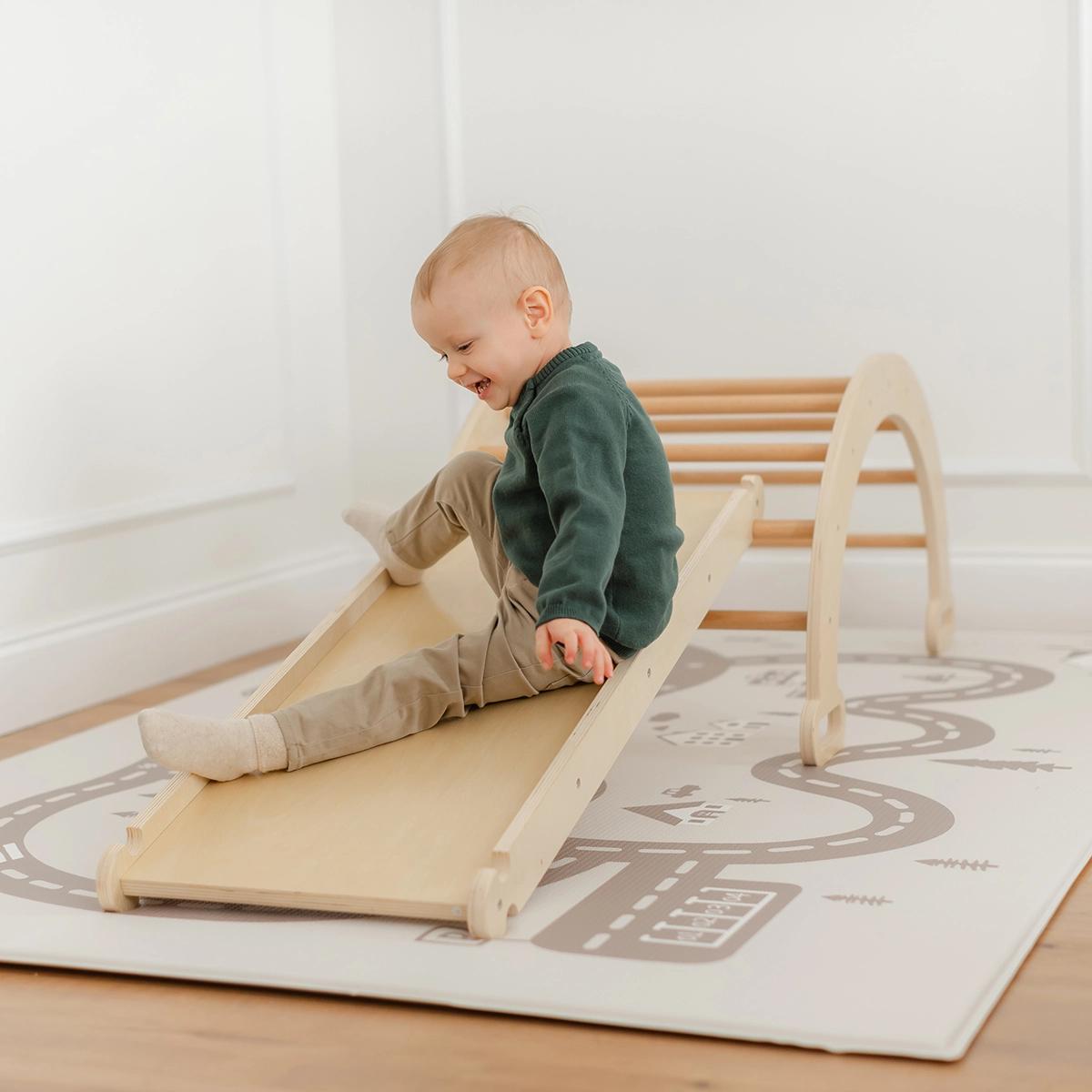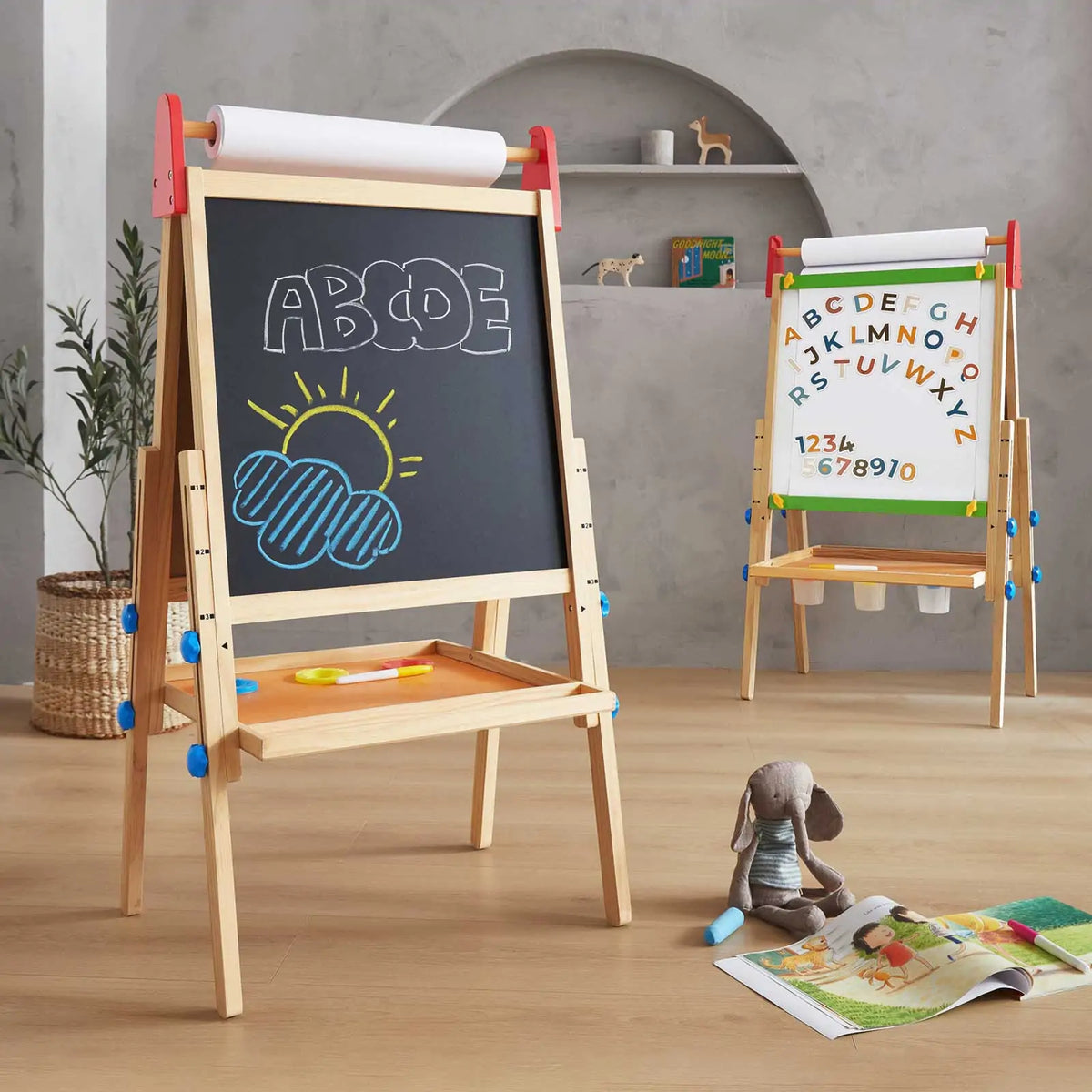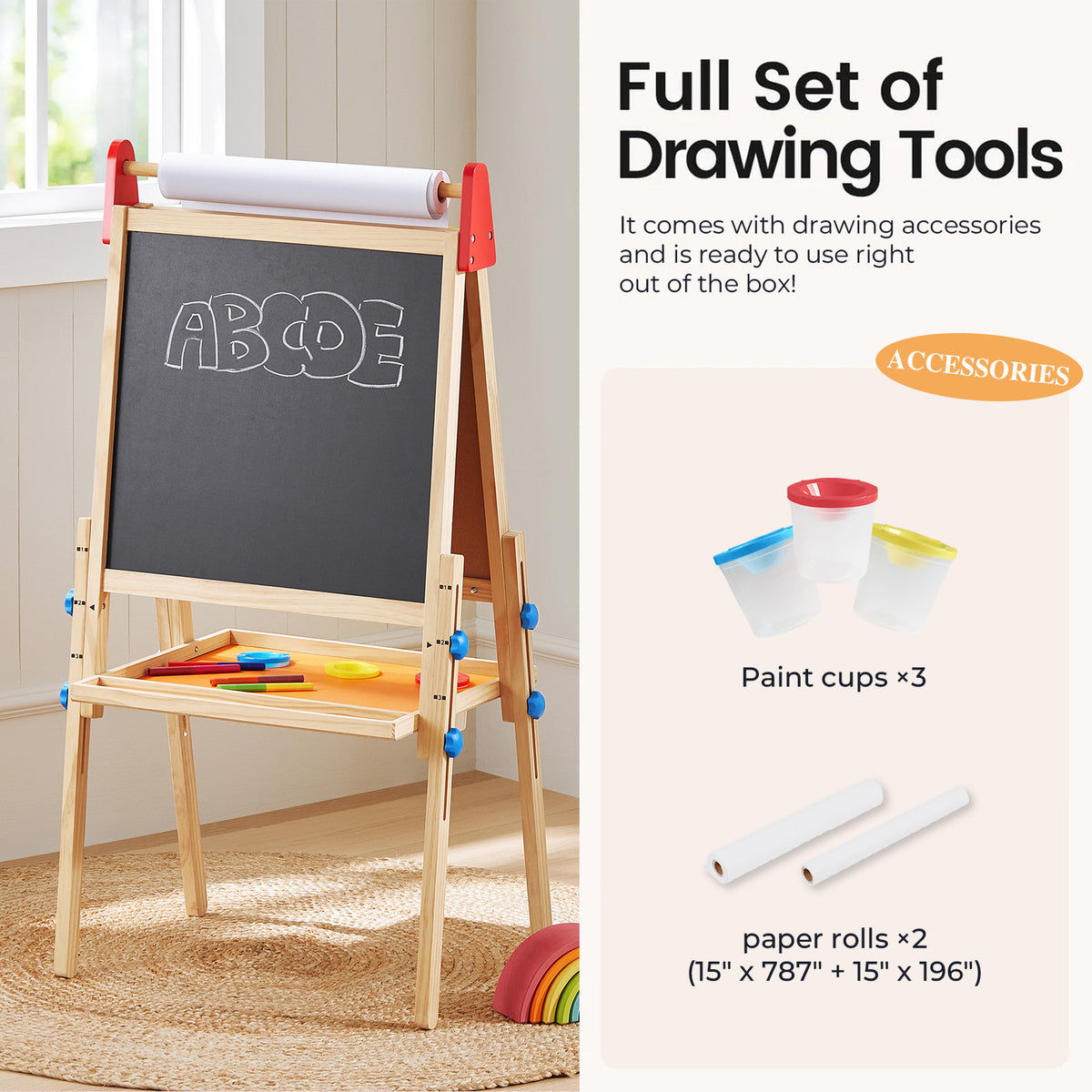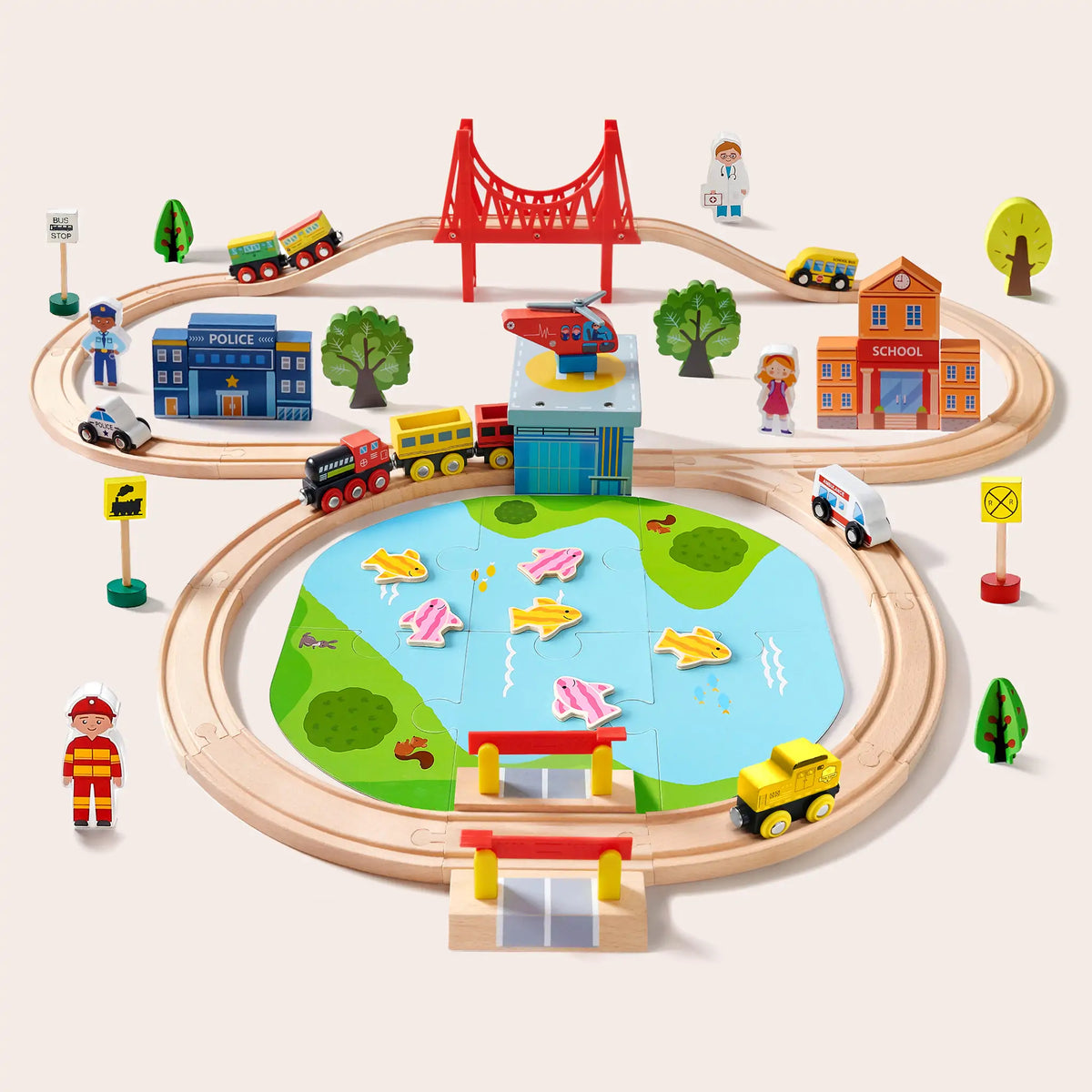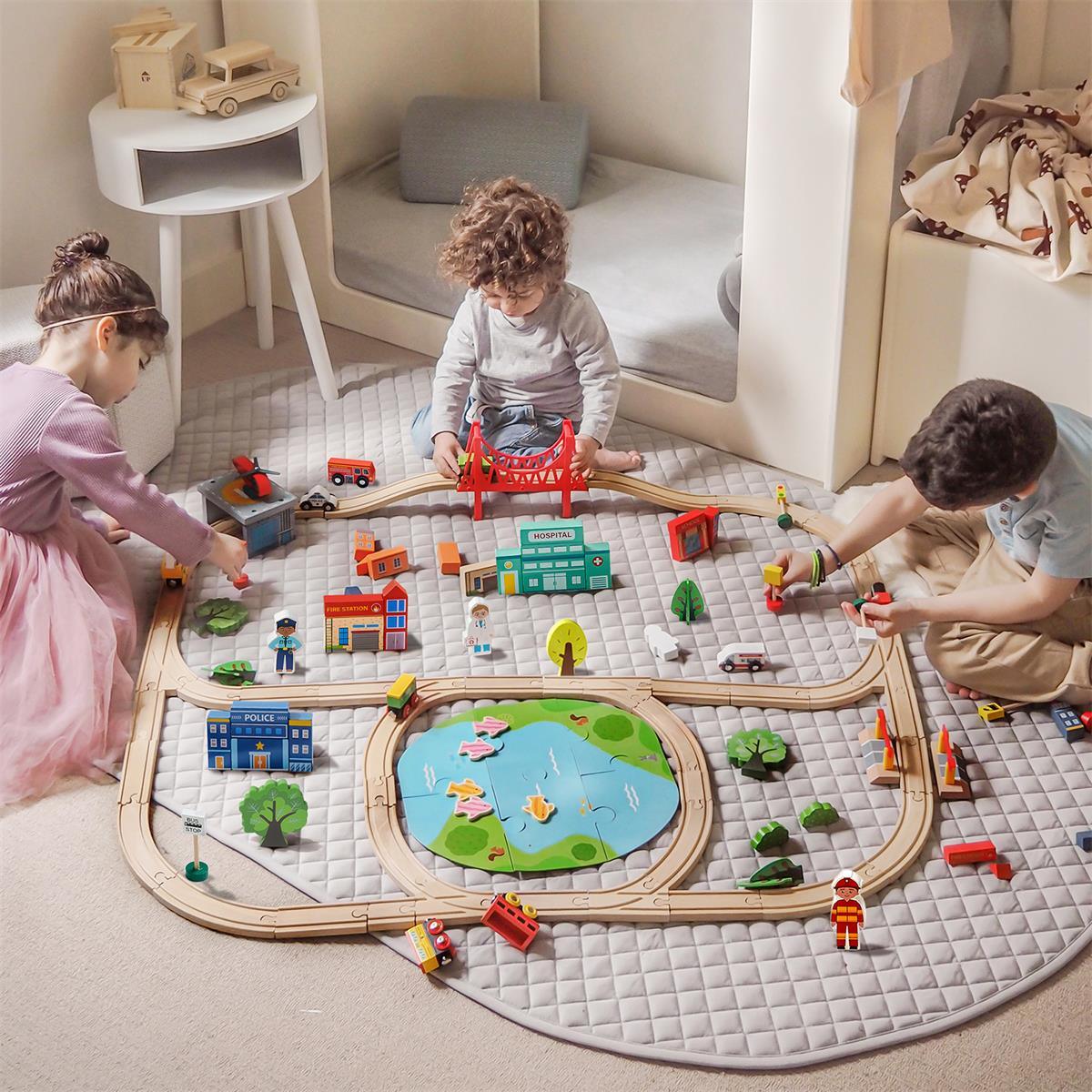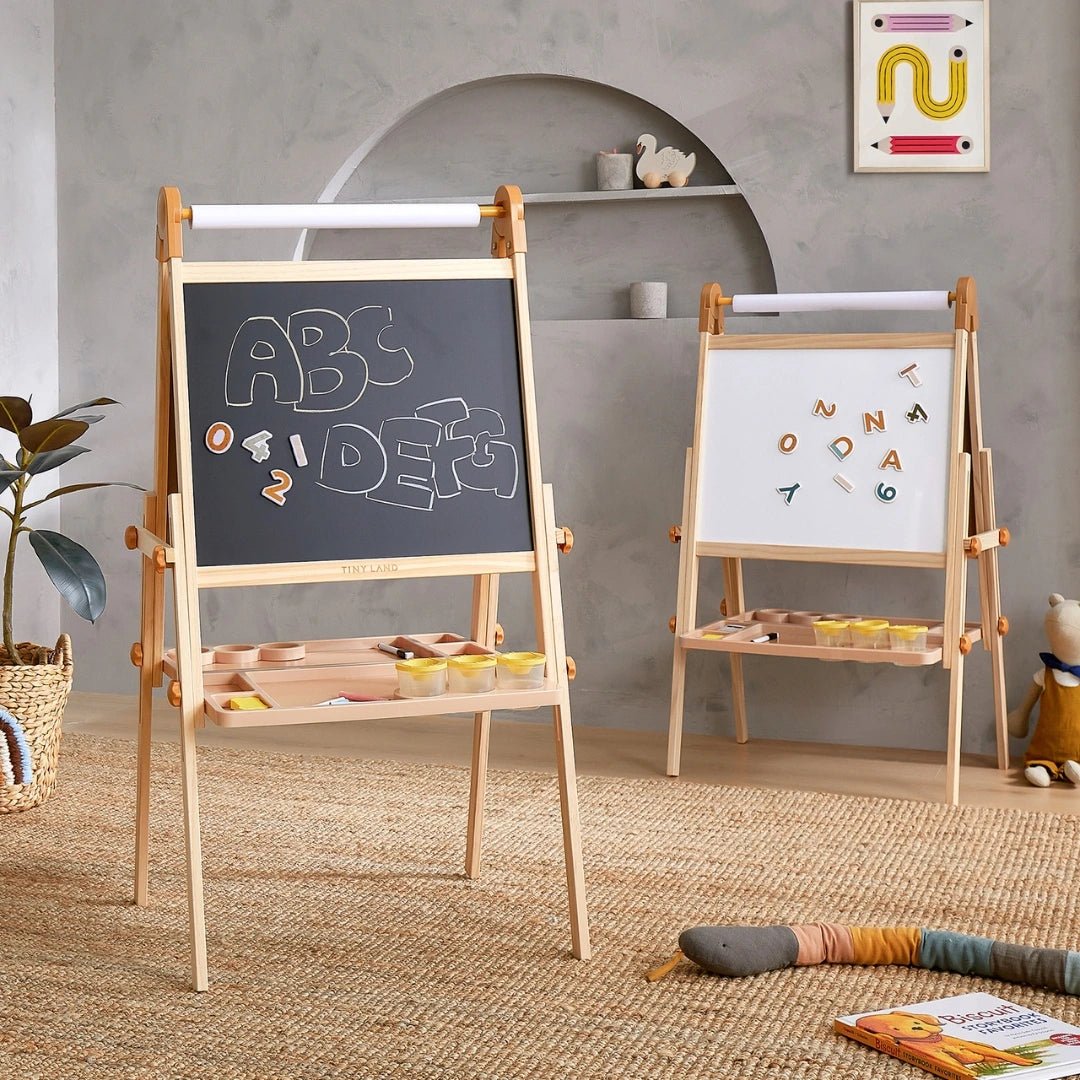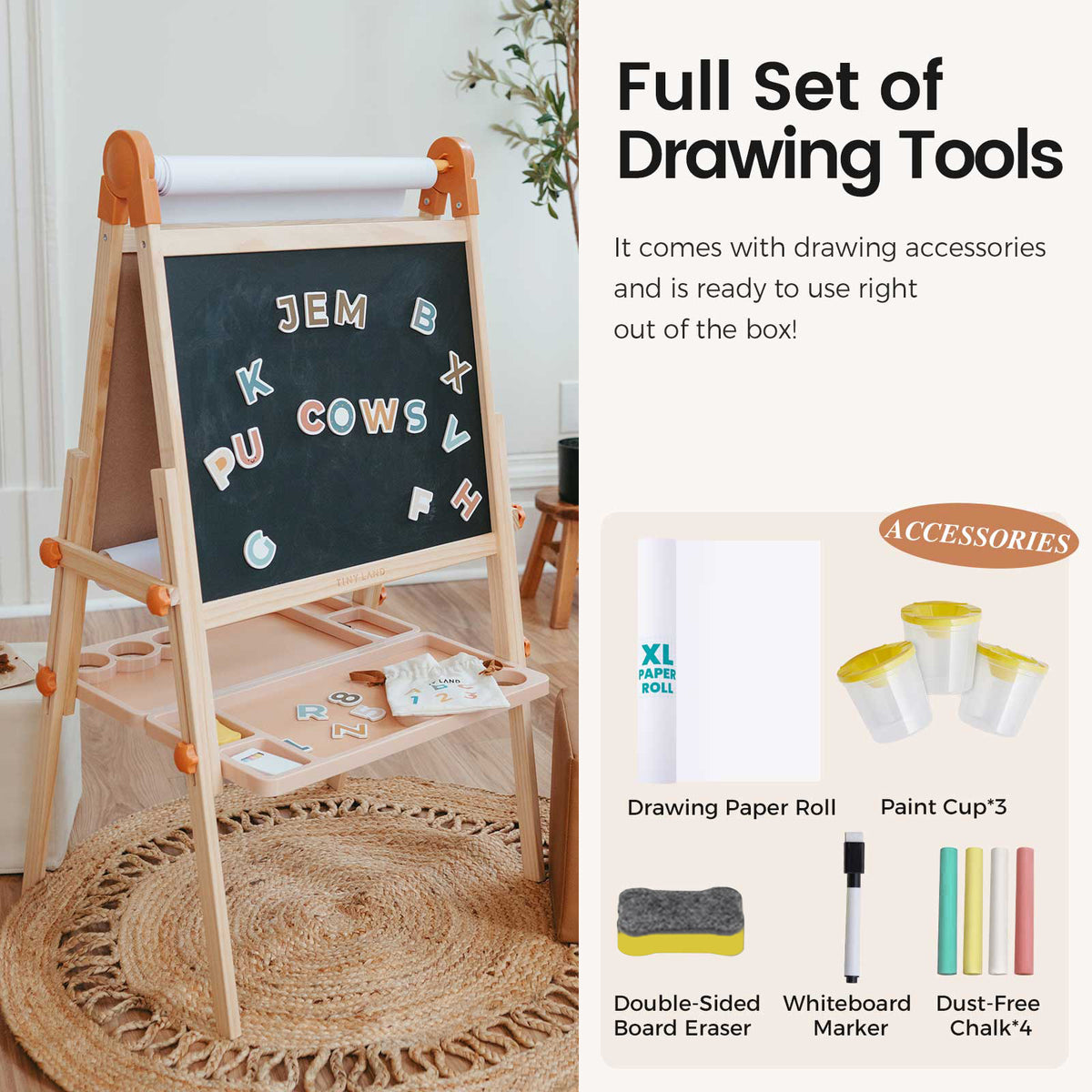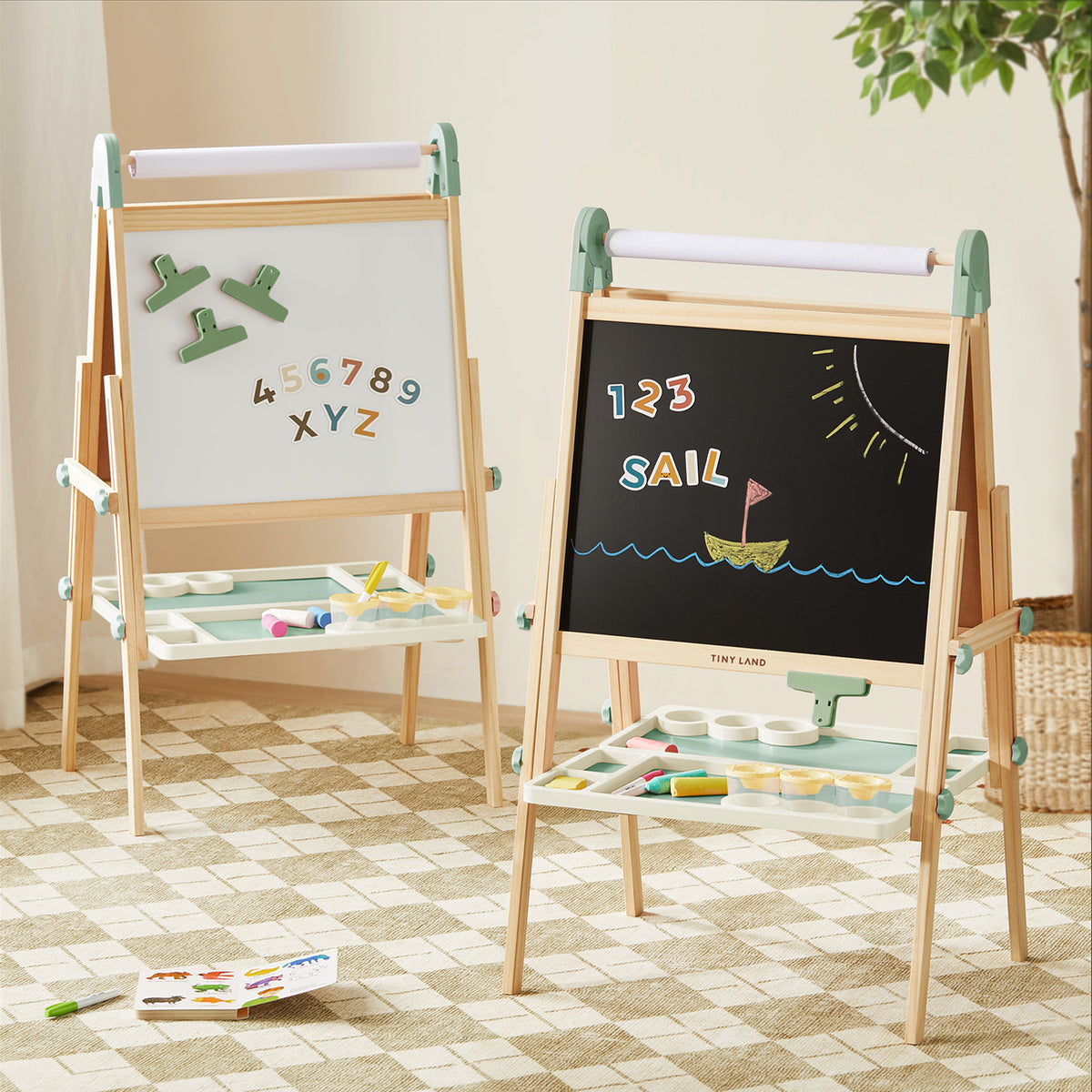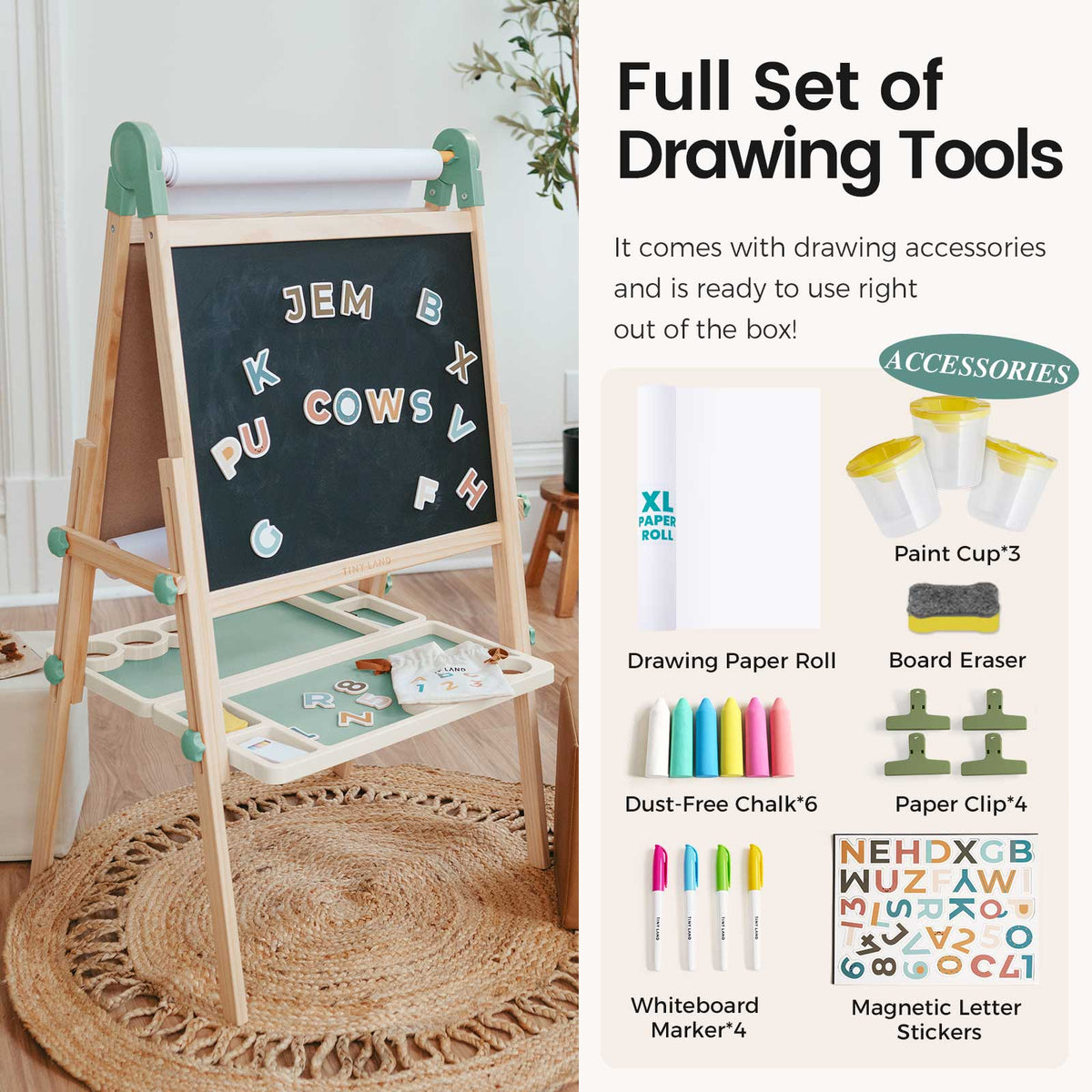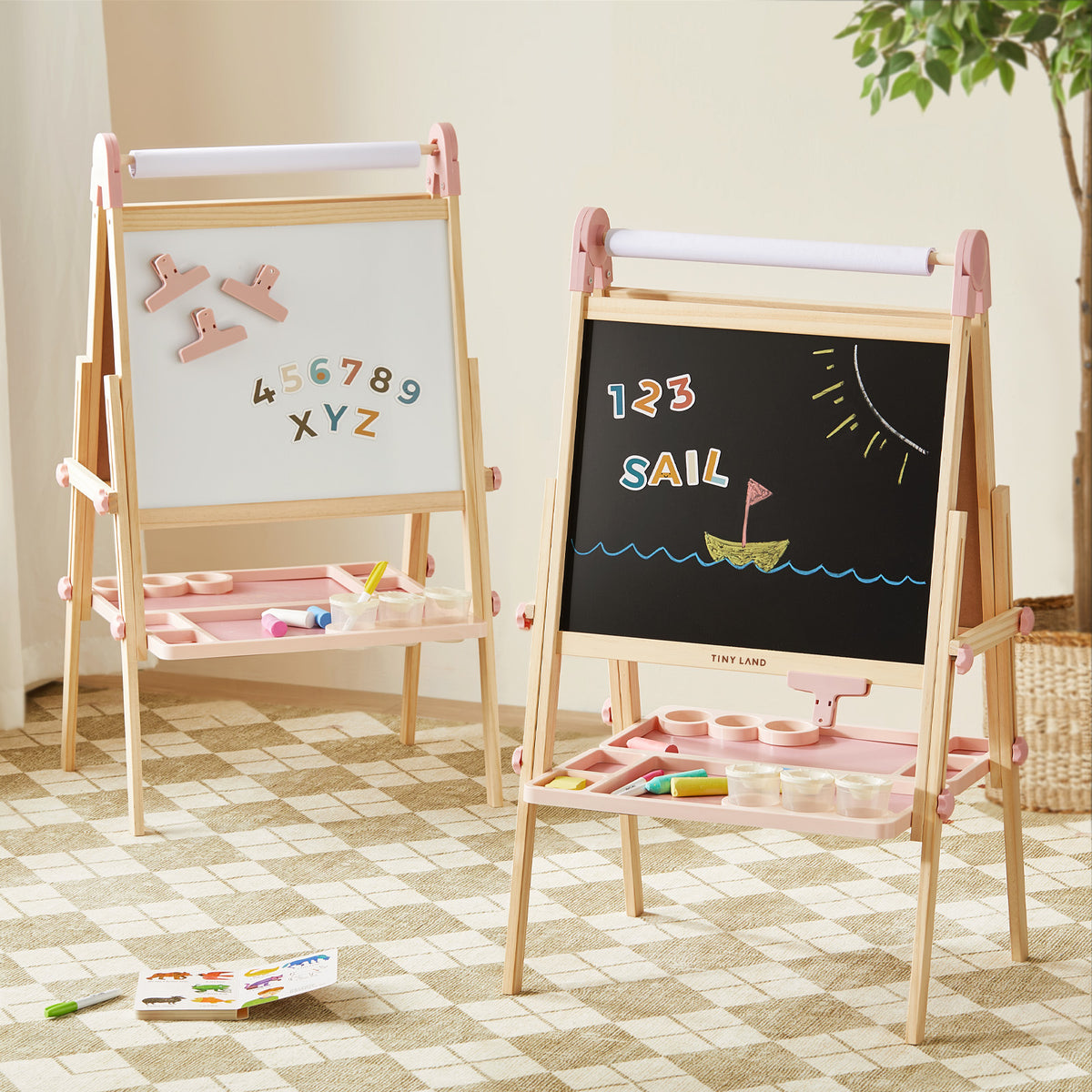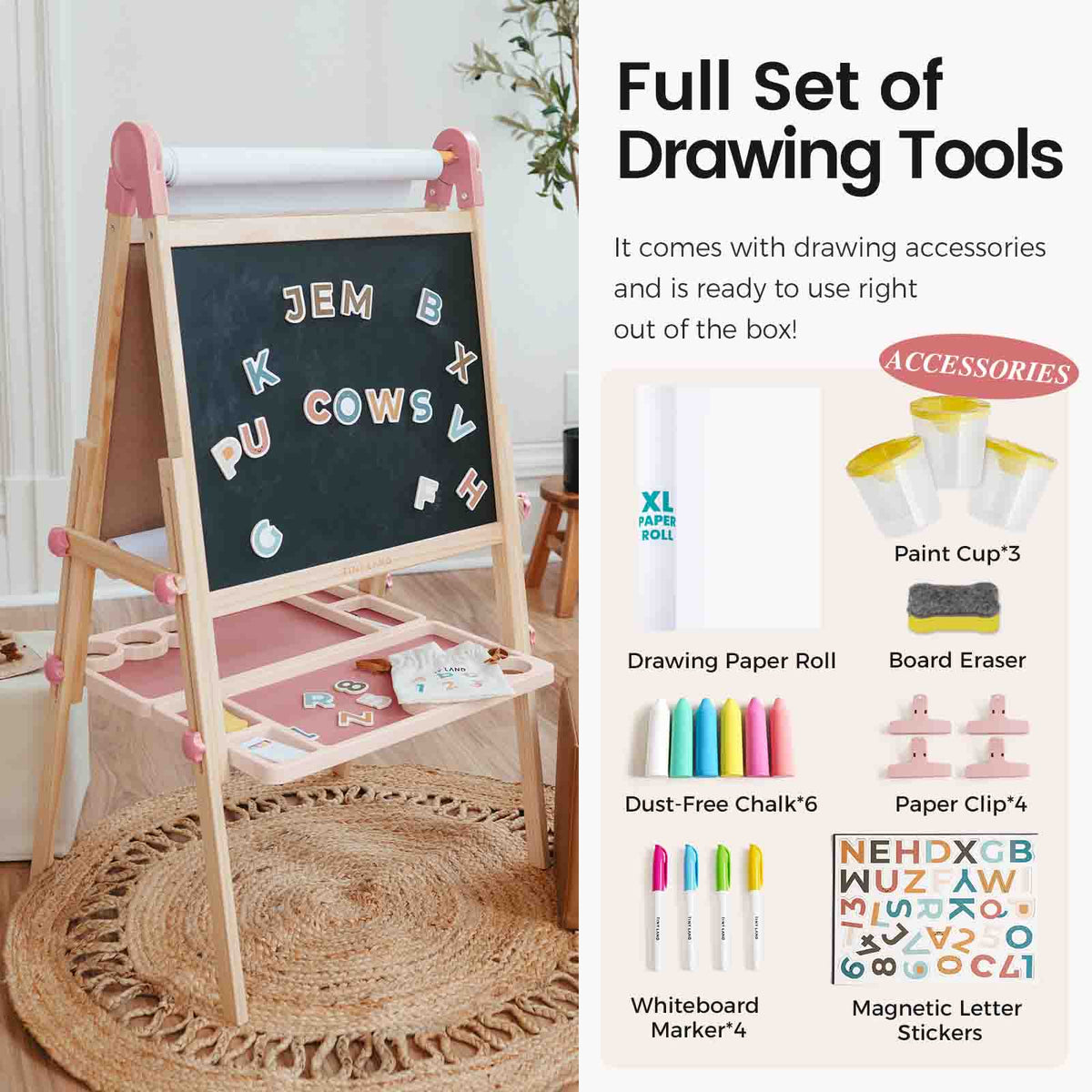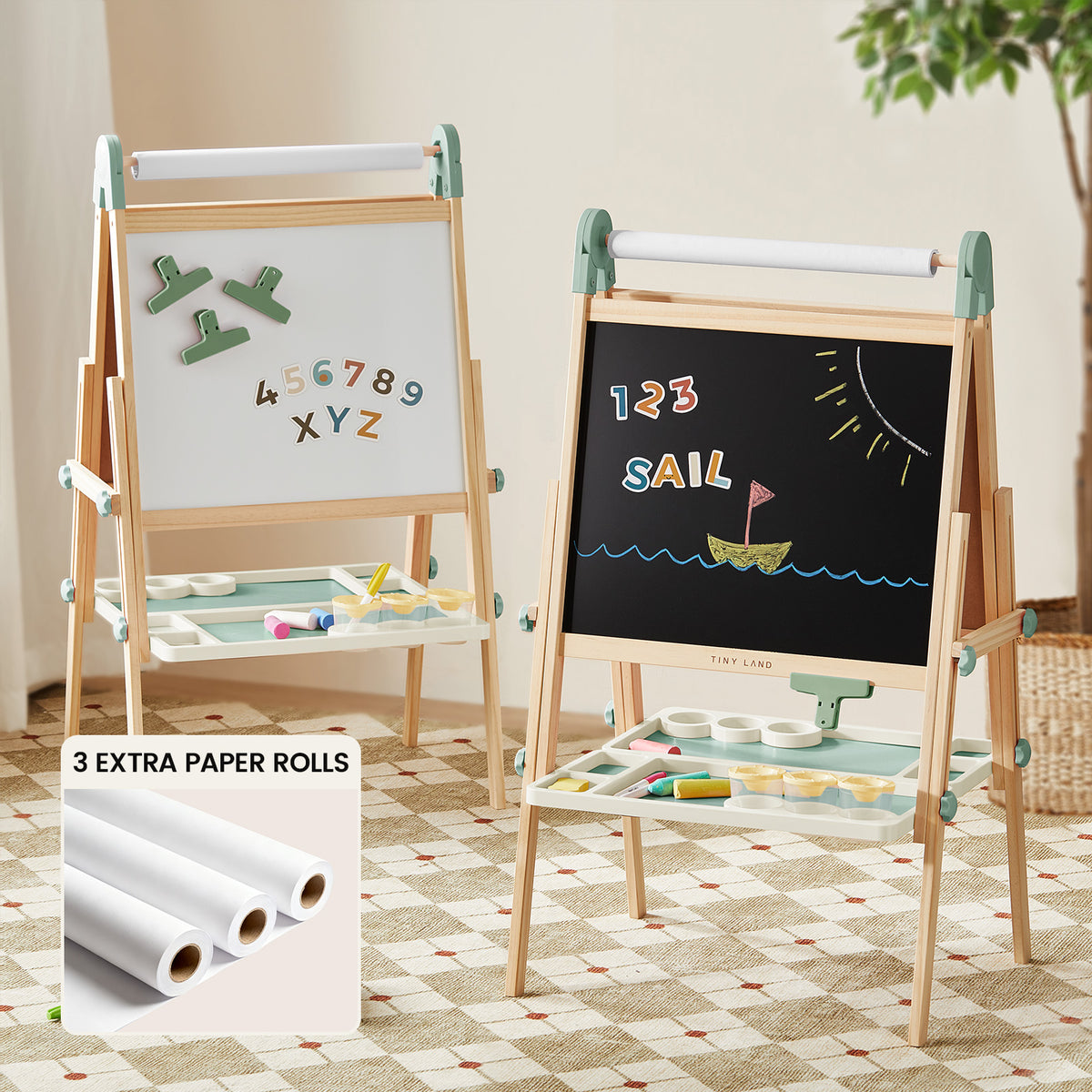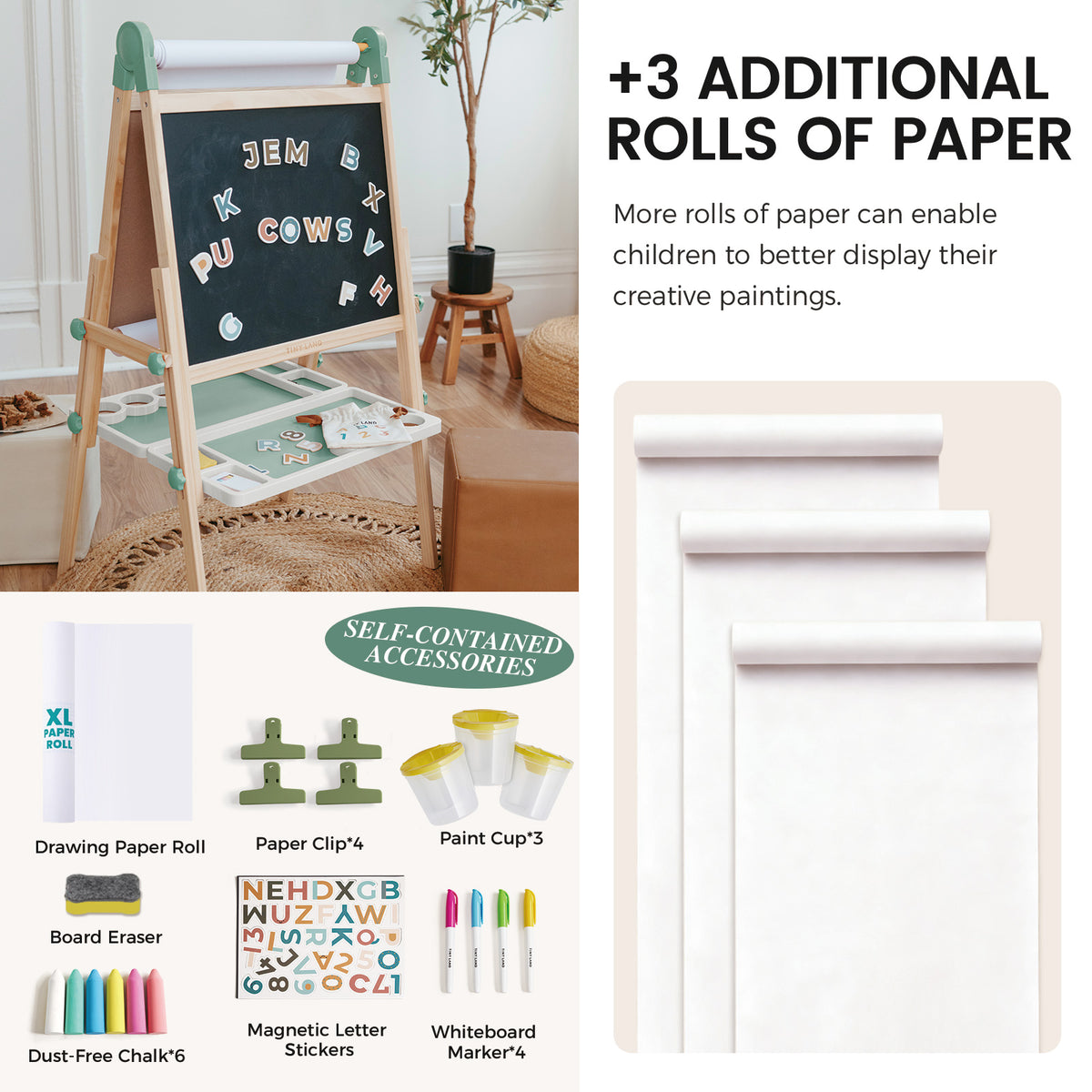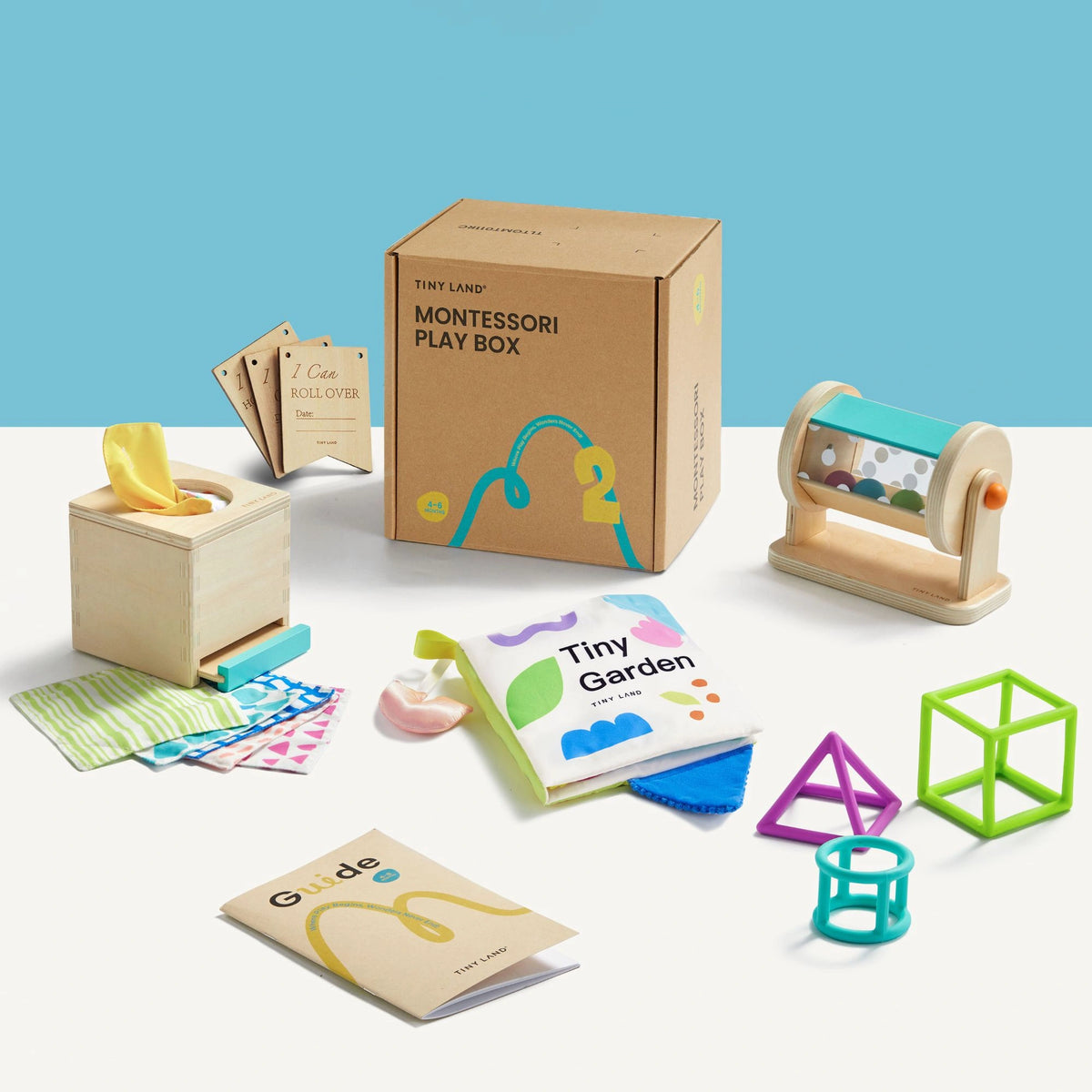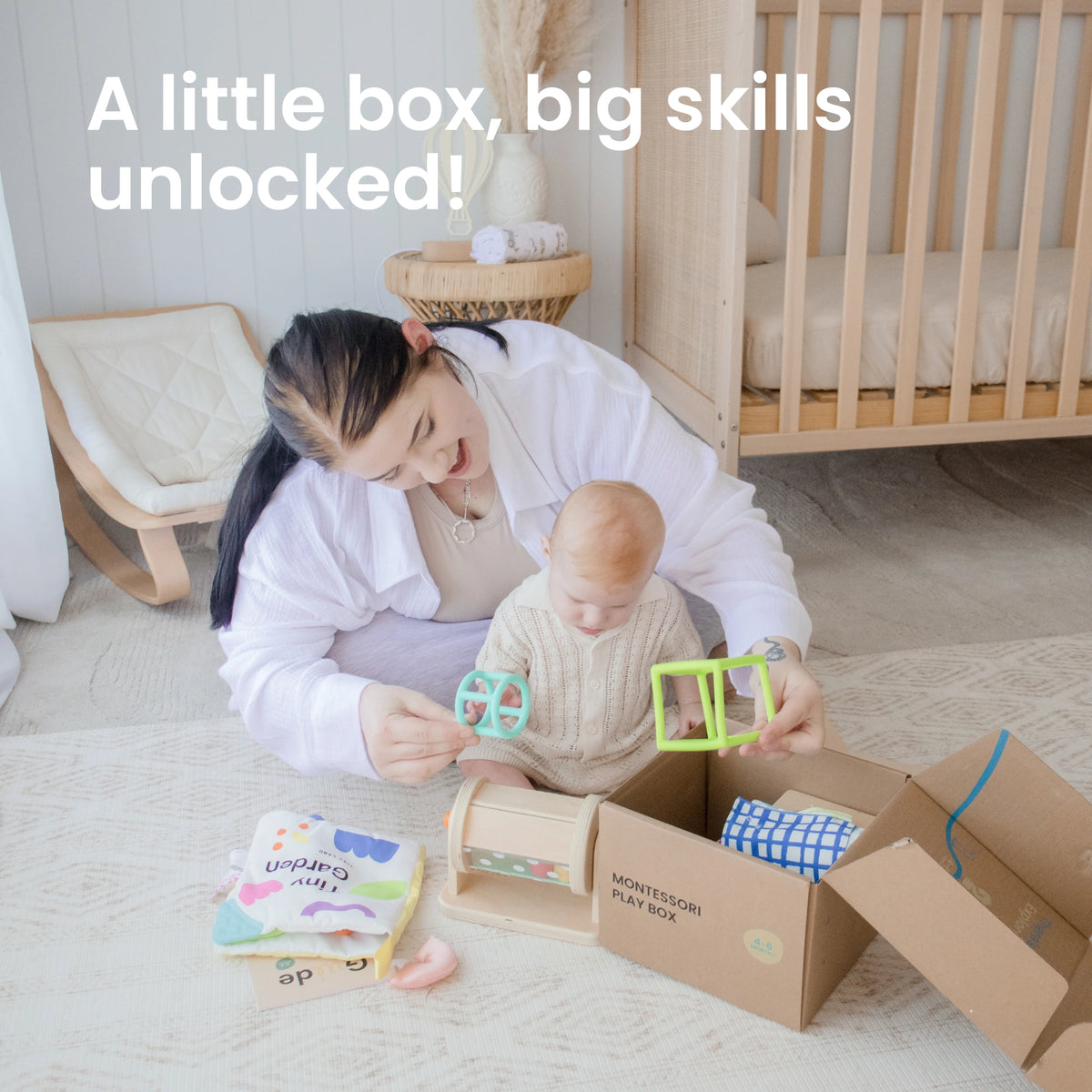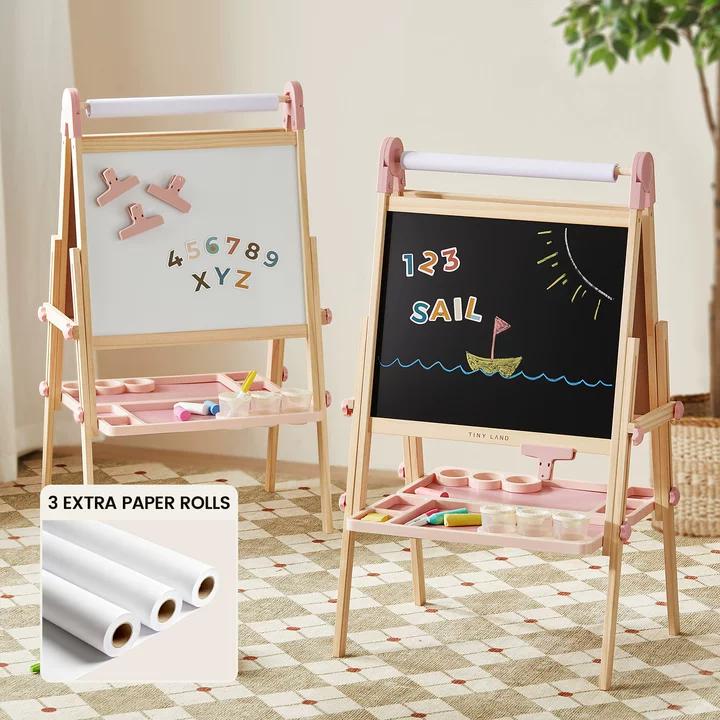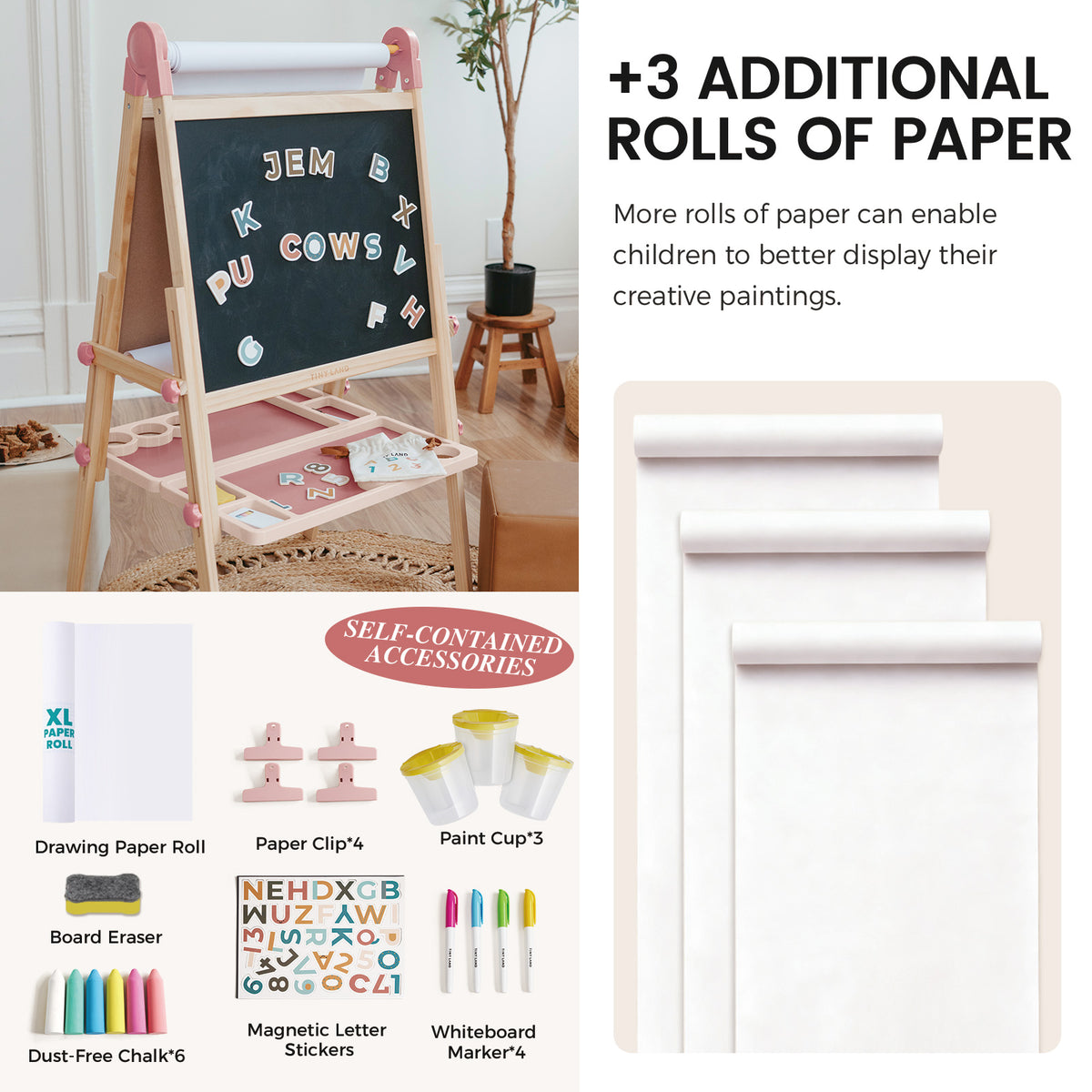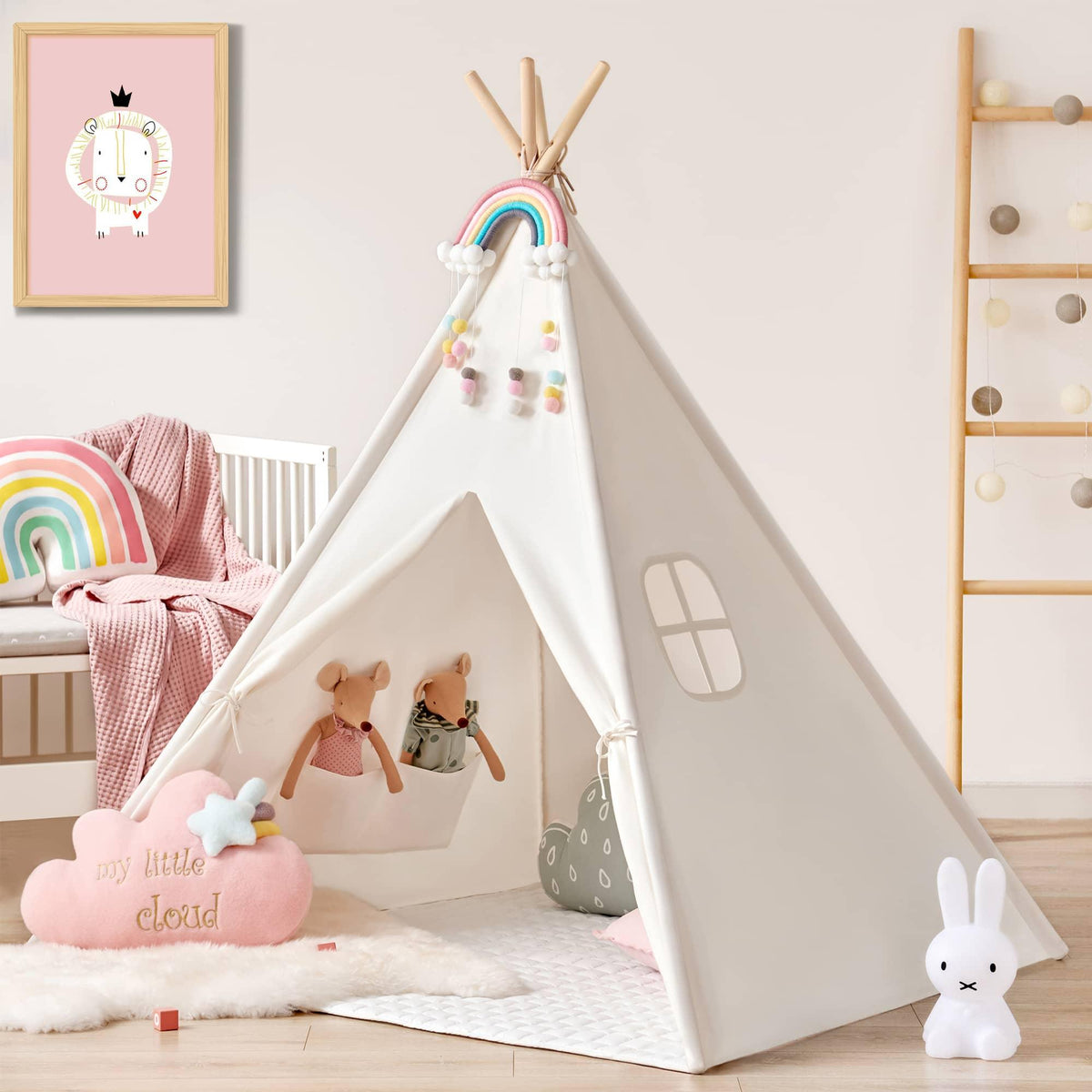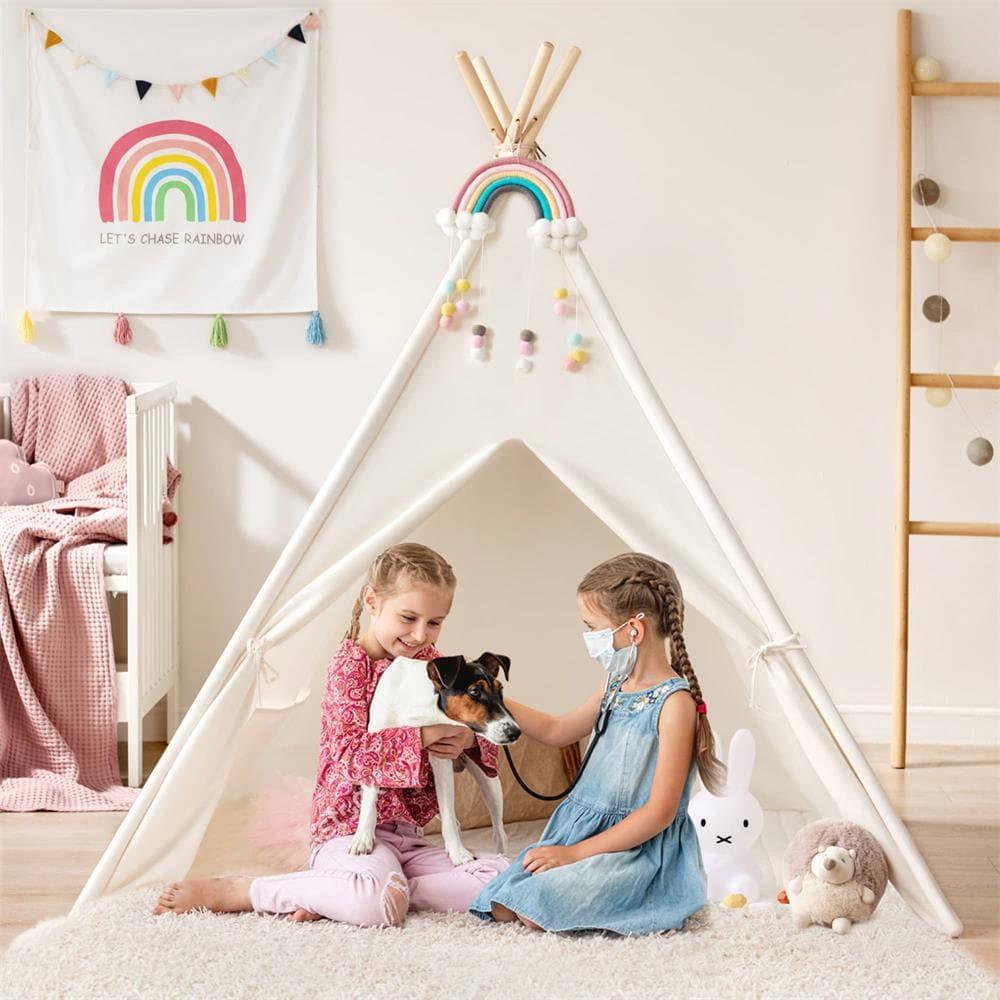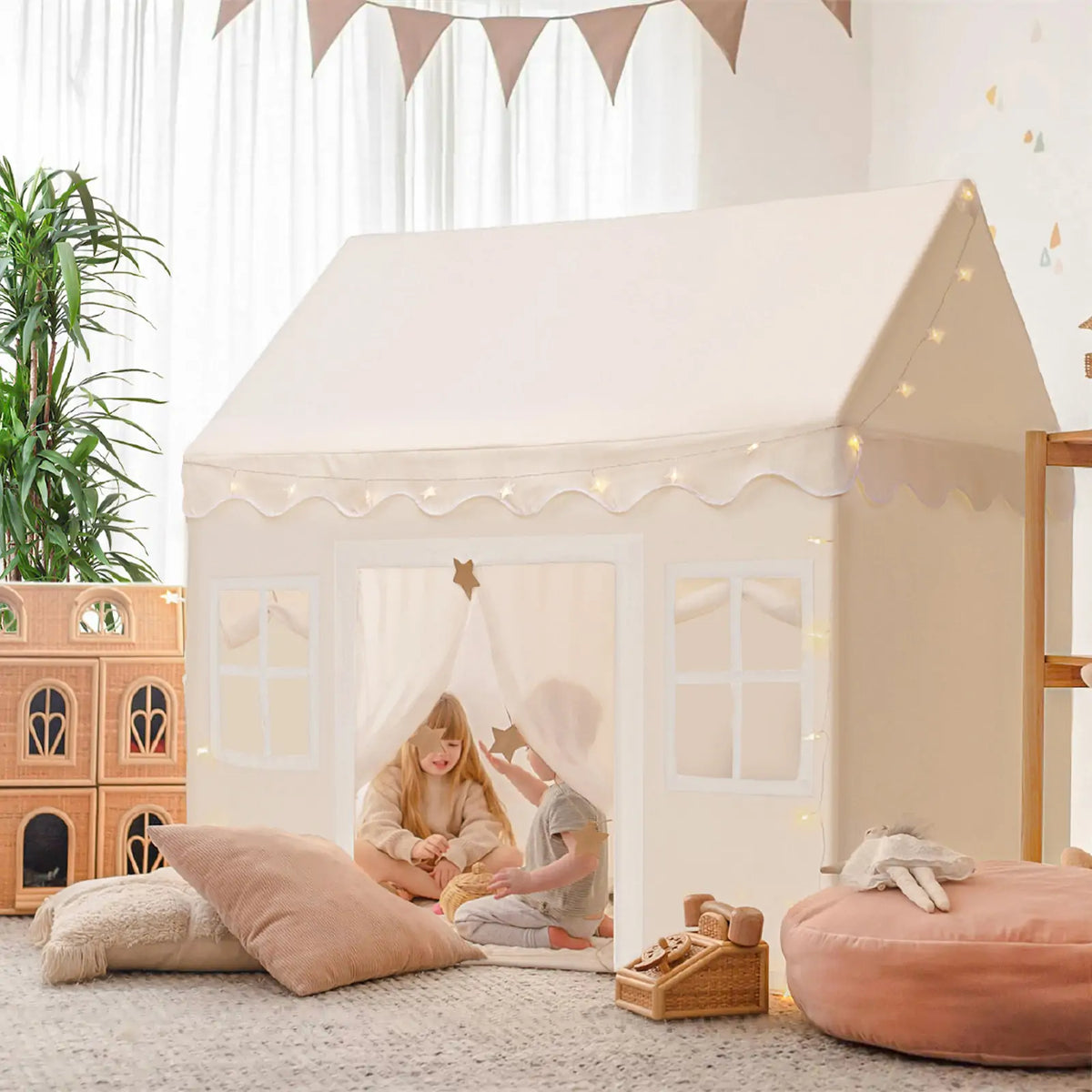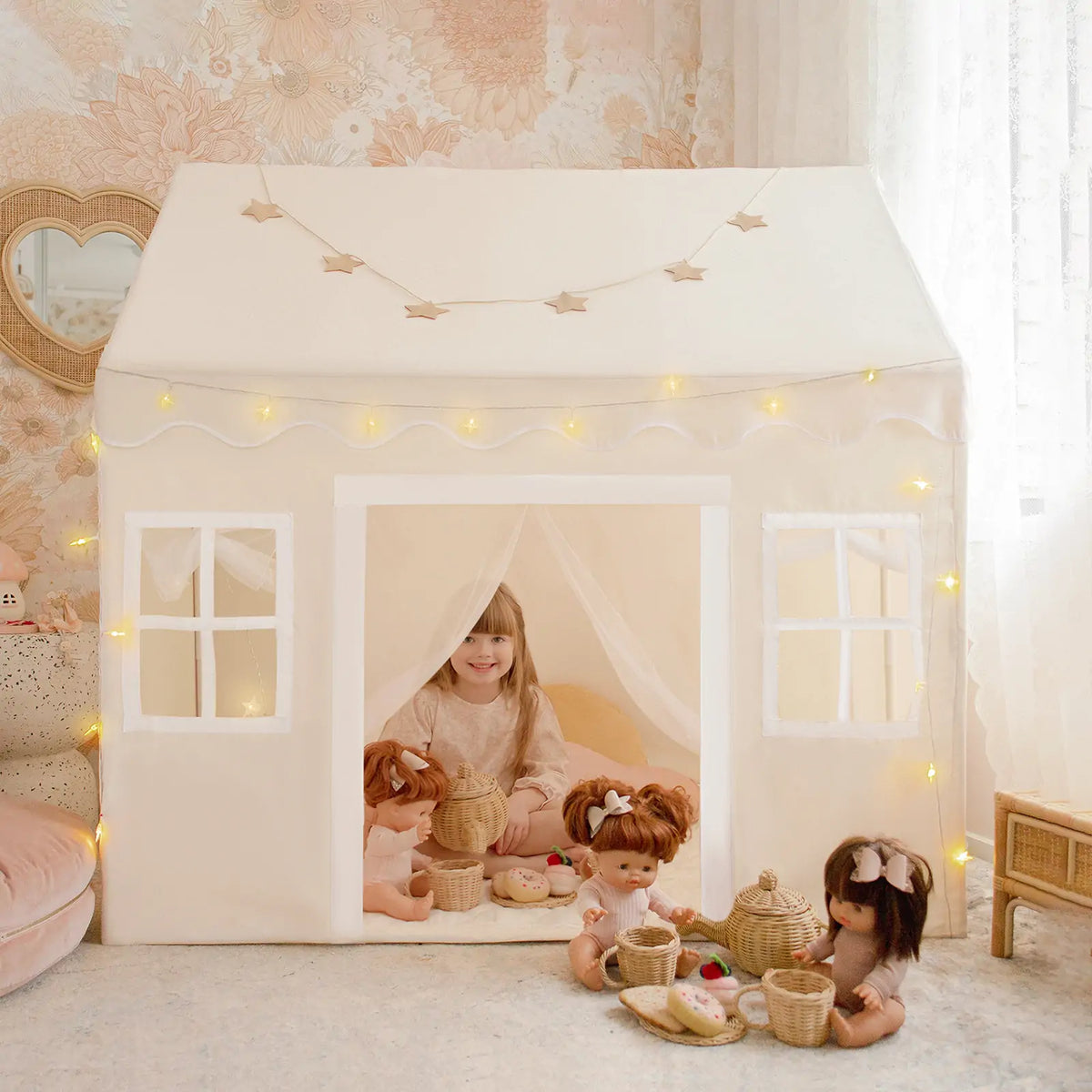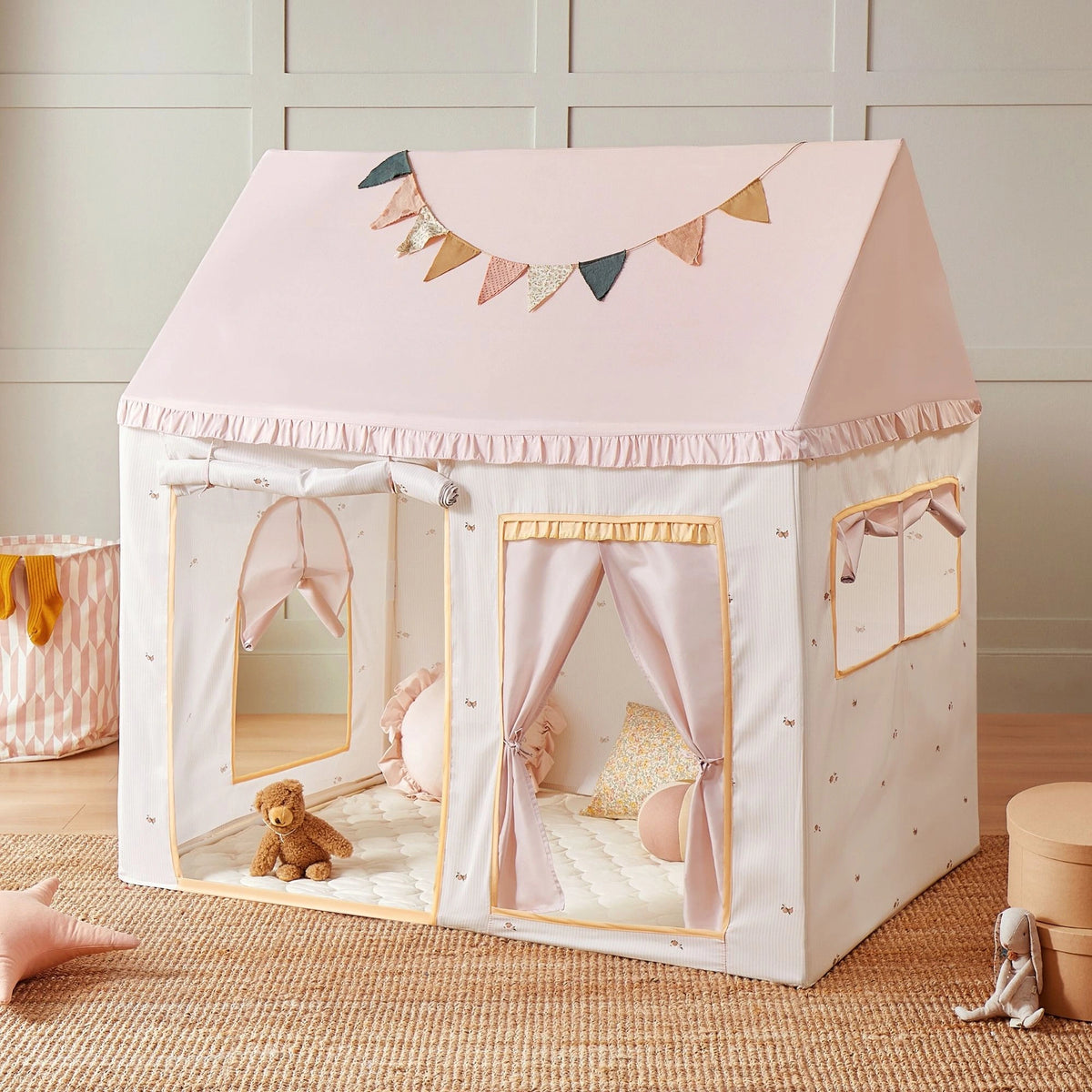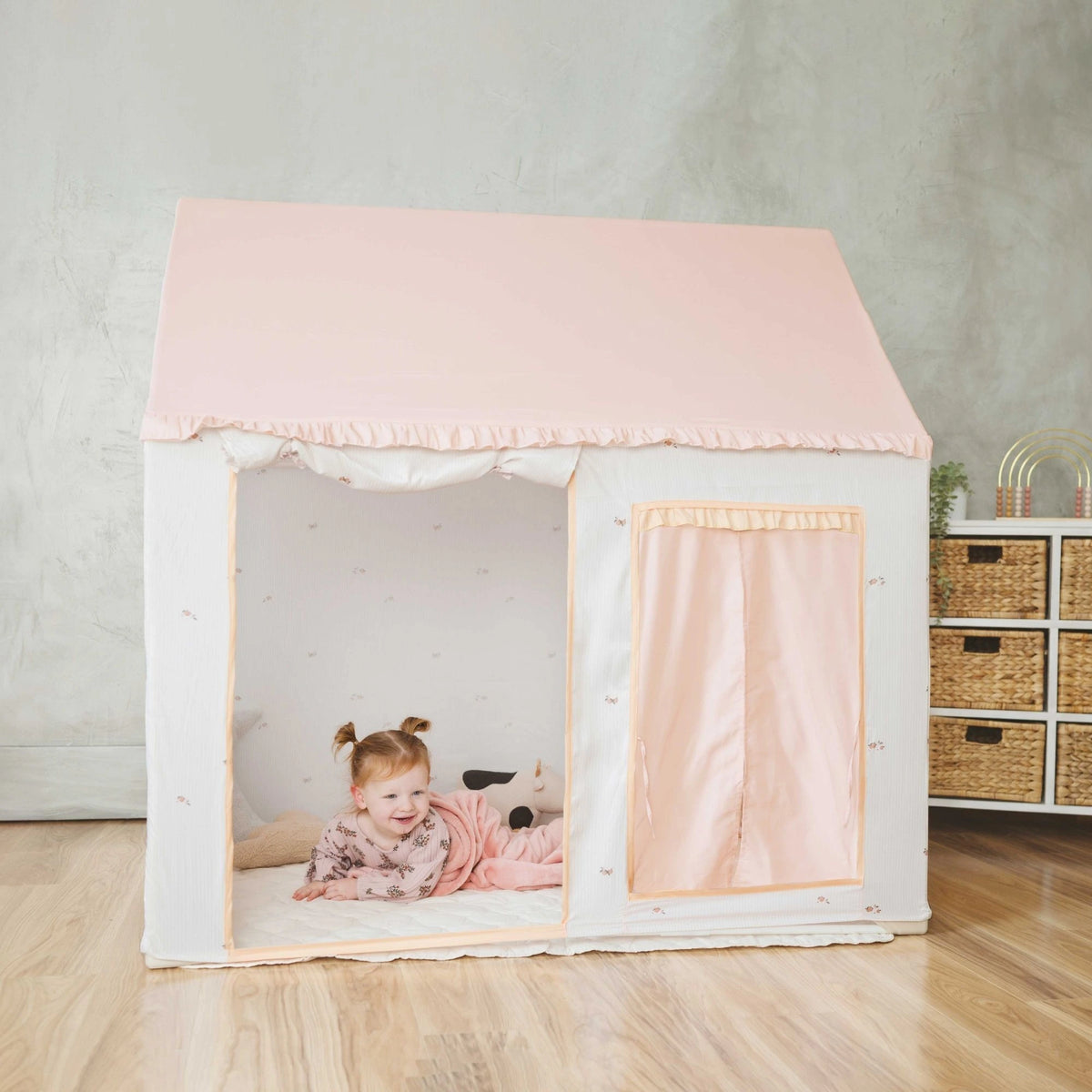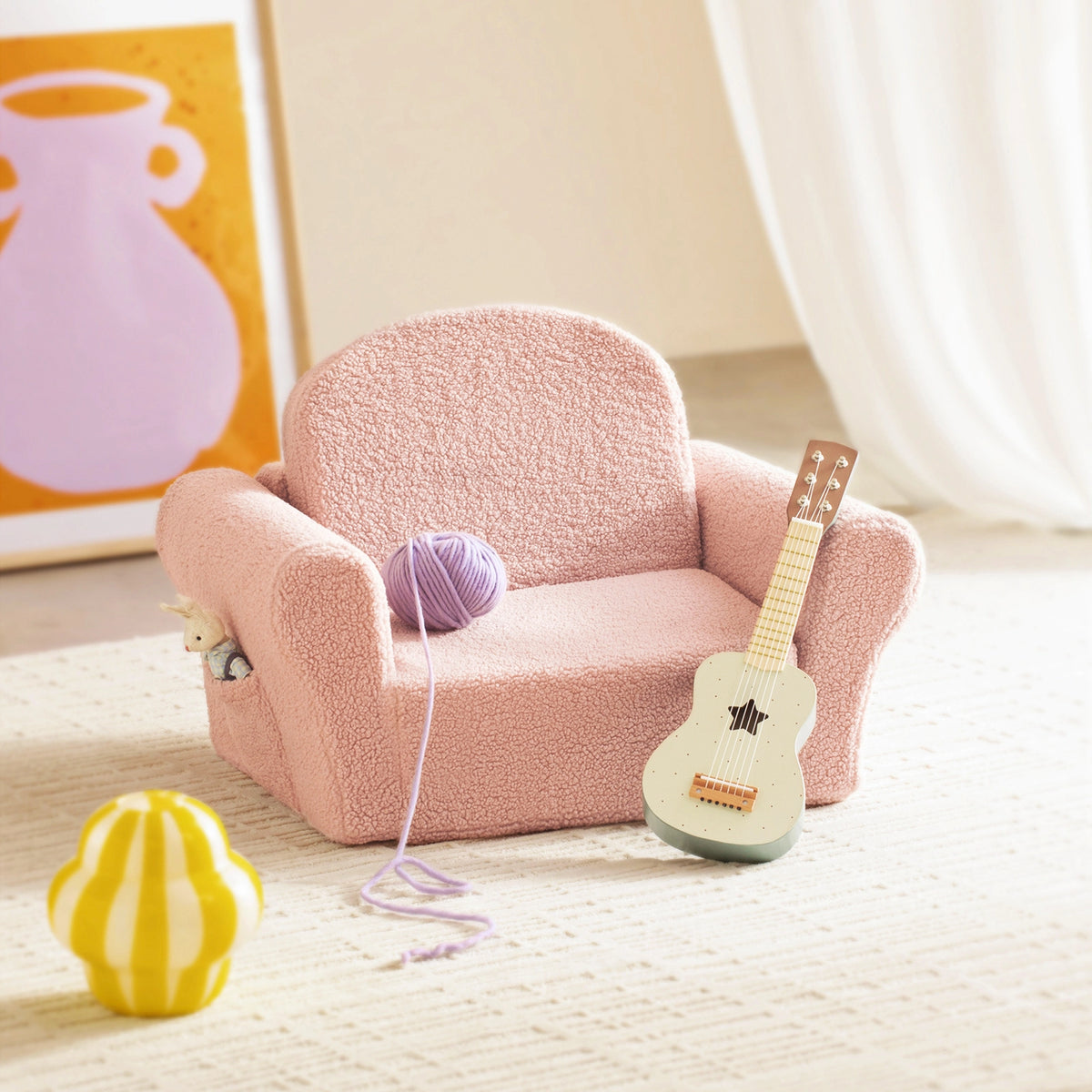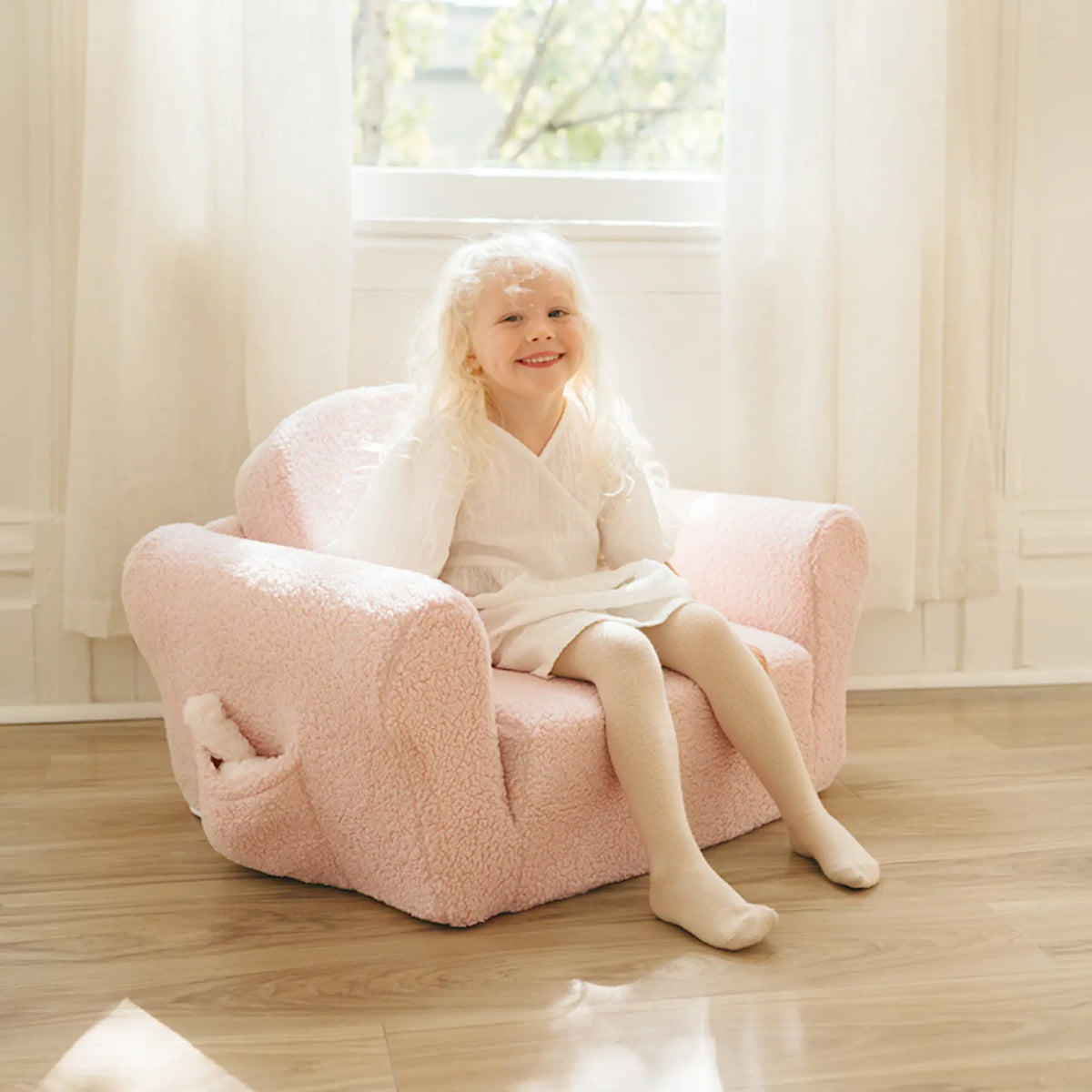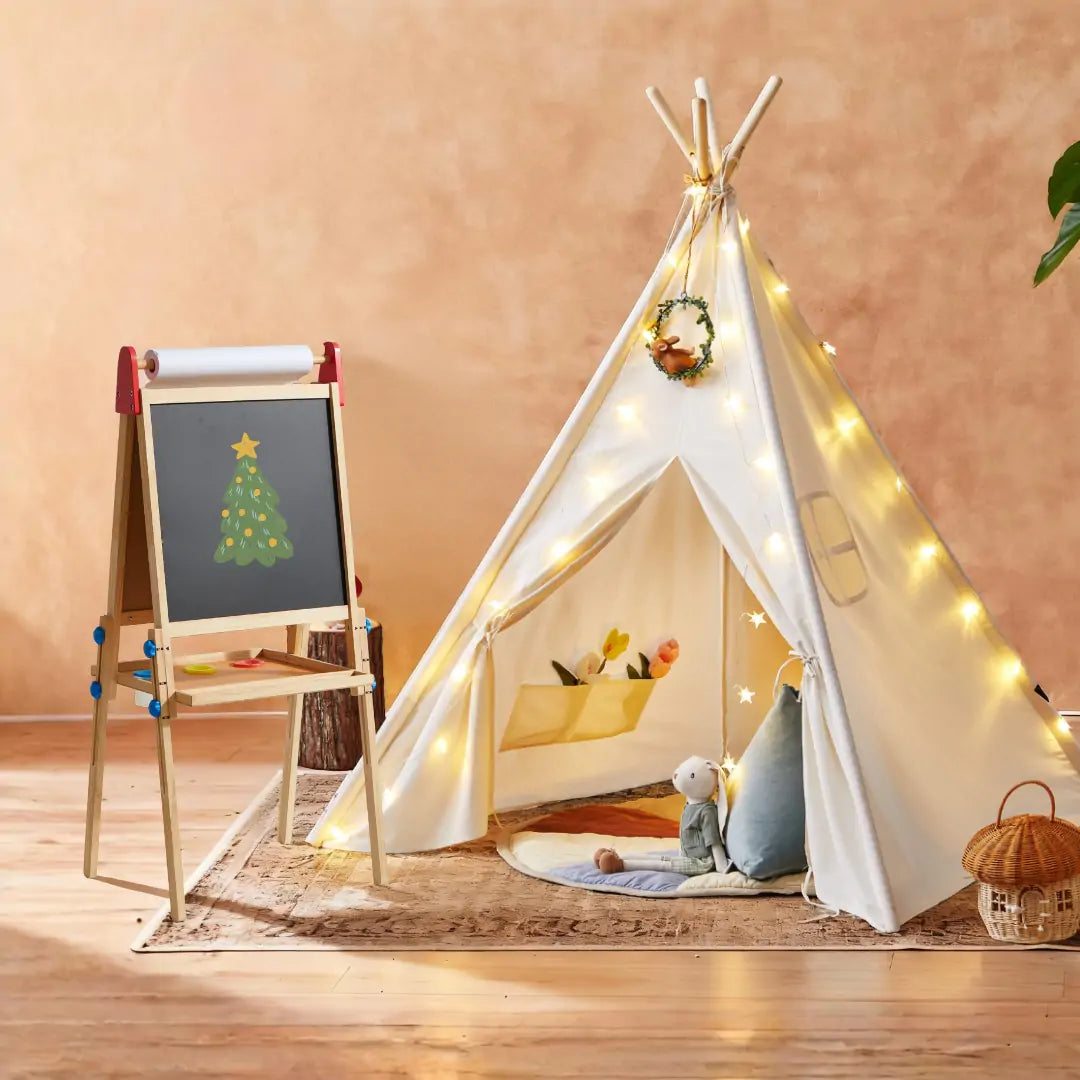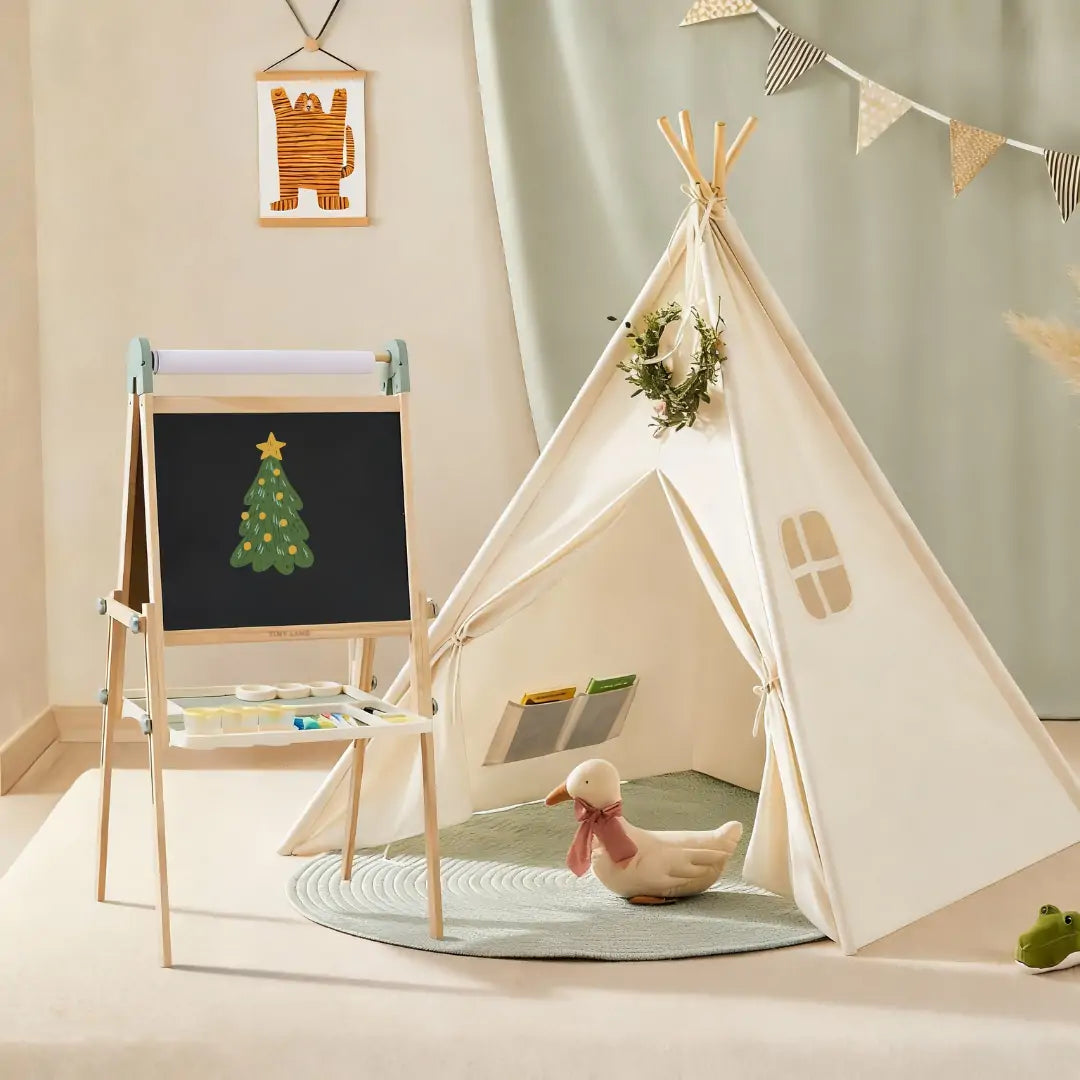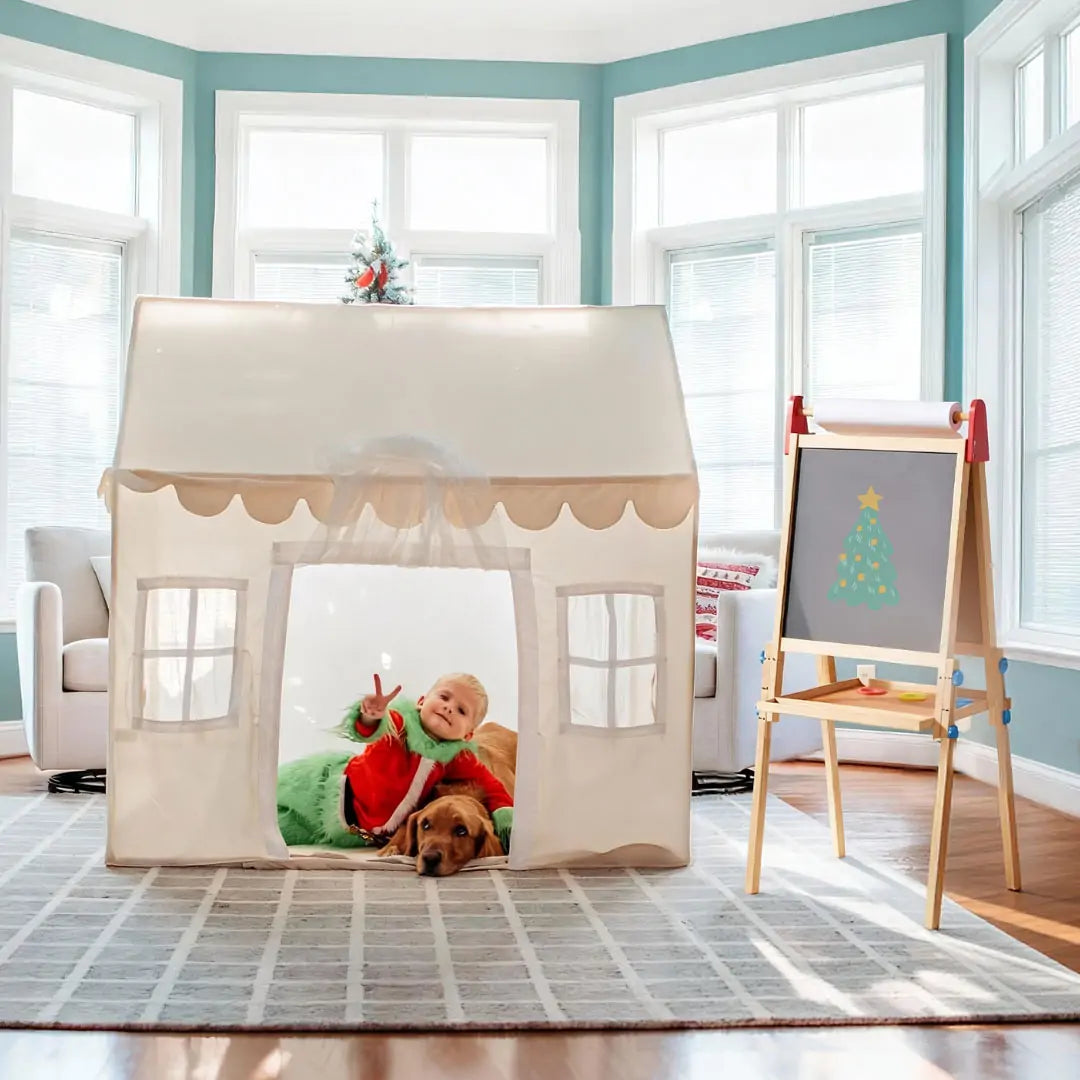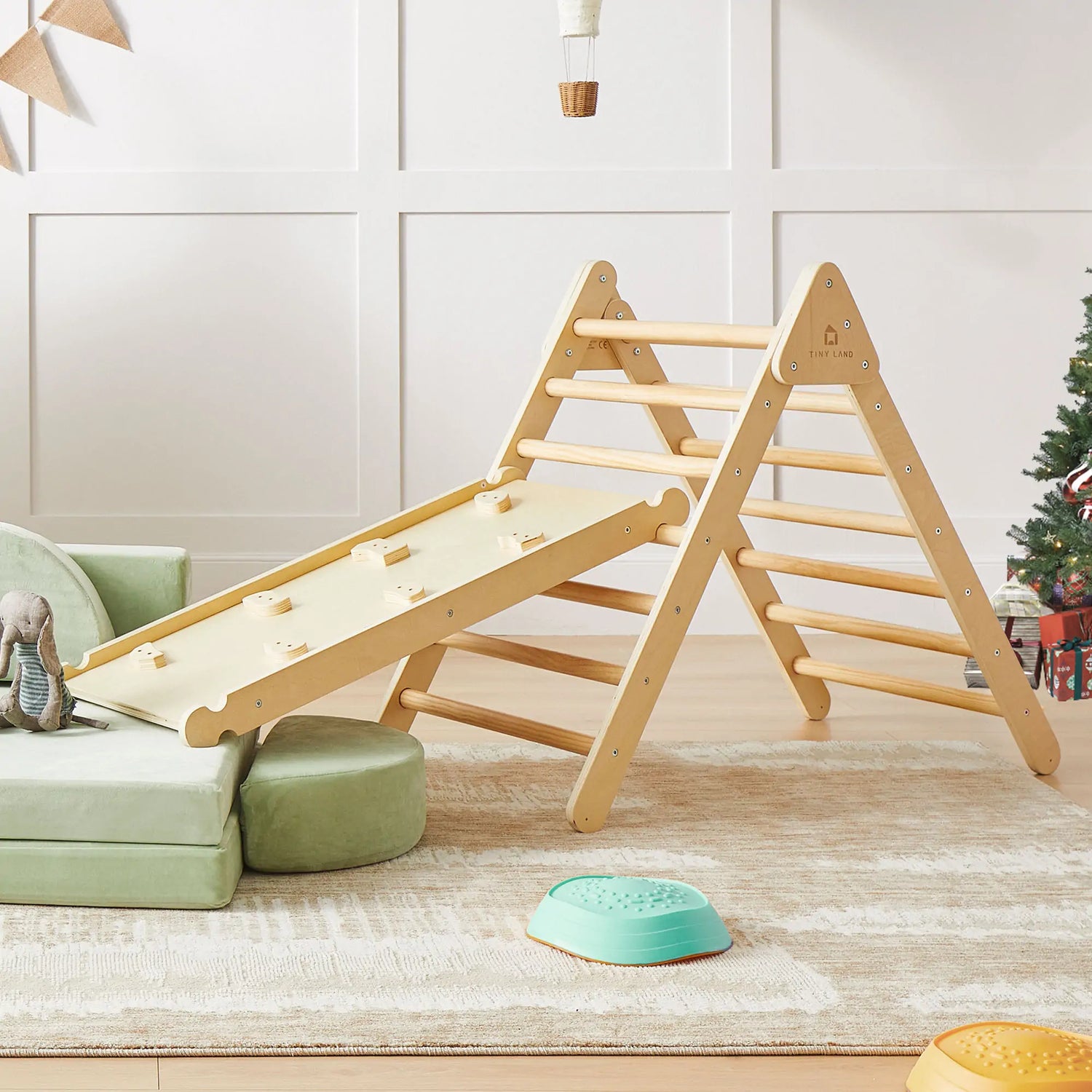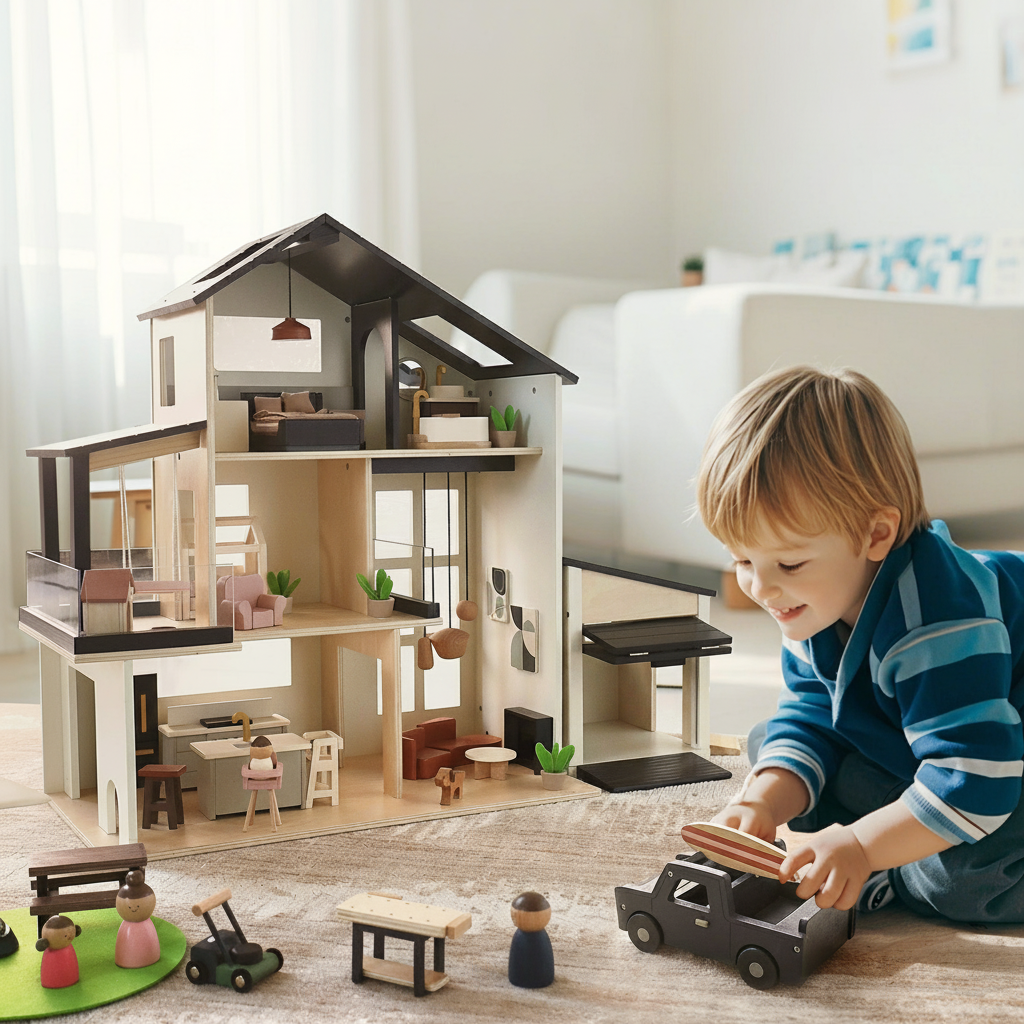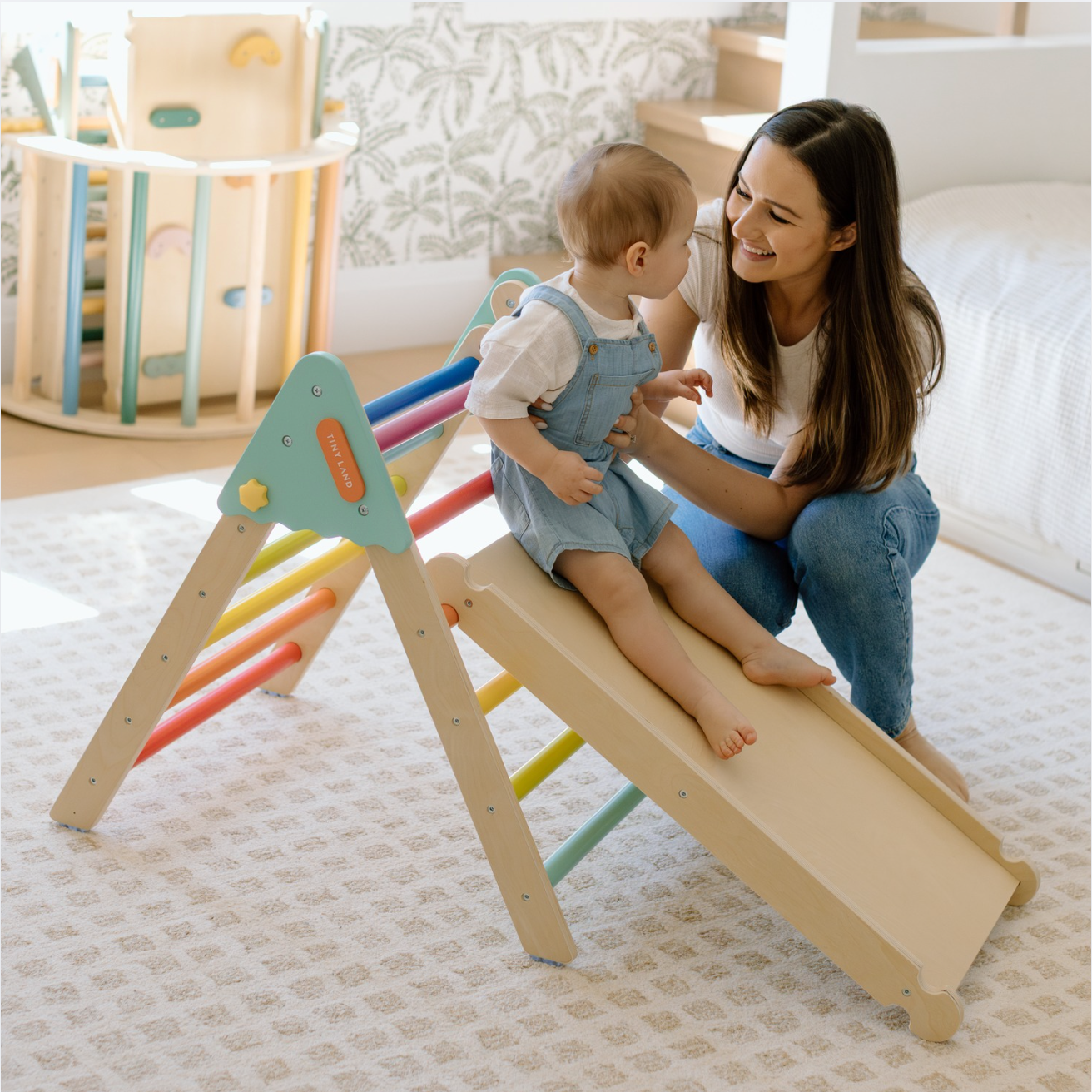Turning Little Steps into Big Confidence
Picture your toddler’s face lighting up as they pull themselves up for the very first time — that tiny climb is a giant leap in confidence.
That’s what a montessori climbing triangle makes possible: a safe, beautiful way for children to explore movement, balance, and independence right at home.
If you’re not an expert in Montessori toys (most parents aren’t!), don’t worry. This guide will help you understand what makes a good climbing triangle, what features truly matter, and how to choose one that fits your family, space, and child’s stage of development.

What Is a Climbing Triangle?
A climbing triangle is a simple, triangular wooden frame that helps children learn how to climb, balance, and move freely. They can crawl under it, drape a blanket to make a cozy fort, or use it as a mini mountain to conquer.
Rooted in Montessori philosophy, montessori climbing toys encourage independence, body awareness, and creative movement. They are open-ended play tools — there’s no single “right” way to use them, just plenty of possibilities.
Many sets, like Tiny Land’s own 7-in-1 Morandi set, include ramps and slides that connect to a climbing wall or climbing arch, offering variety and challenge as children grow.

Why Montessori Families Love the Climbing Triangle
---Motor Skills and Development
Each pull, grip, and climb strengthens fine and gross motor skills, coordination, and confidence — all through joyful movement.
---Imaginative Play
It’s never just a toy. One day it’s a bridge to cross, the next a spaceship, a fort, or a reading nook. The endless opportunities for creativity help keep play fresh and meaningful.
---Perfect for Babies Starting Out
Even babies starting to pull themselves up can use the lowest rungs safely. It’s an inviting introduction to balance and strength.
---Natural Beauty Meets Function
Crafted from natural wood, Montessori toys blend seamlessly with your home — soft hues, smooth edges, and a timeless aesthetic.

---Space-Friendly and Easy Storage
Modern designs now fold flat for easy storage, so even apartment living can include a little climbing adventure.
How to Choose the Right Montessori Climbing Triangle
Here are five quick things to keep in mind before bringing one home:
--Age and Growth Stage
Parents often ask: “What age is appropriate for Pikler Triangle?”
Most sets work beautifully from around 6 months to 5 years. Younger toddlers enjoy gentle ramps; older kids climb higher and experiment with slides.
--Safety Comes First
Look for rounded corners, solid joints, and non-toxic finishes. True Montessori designs prioritize durability and child safety above all else.
--Space and Easy Storage
If your play area is small, pick a foldable frame — compact design makes daily cleanup easier and playtime flexible.
--Expandable Play Options
A set that connects to a climbing arch or climbing wall allows the fun to evolve as your child grows.

--Quality Materials
Choose natural wood over plastic for its strength, eco-friendliness, and calm visual appeal.
Spotlight on Tiny Land’s 7-in-1 Morandi Pikler Triangle Set
Meet the all-in-one montessori climbing triangle designed to grow with your child:
Tiny Land 7-in-1 Morandi Pikler Triangle Set

Key Features:
--Made from smooth, eco-friendly natural wood with soft pastel tones
--Includes triangle frame, reversible slide, ramp, and additional modules
--Offers endless opportunities for climbing, sliding, and creative configurations
--Foldable design for easy storage when not in use
--Ideal for developing motor skills, coordination, and independence in kids
--Tested for safety, durability, and stability
With adjustable components and a warm, modern aesthetic, it turns any corner of your home into a Montessori-style play space — designed for exploration, imagination, and lasting memories.
Tips for Introducing the Triangle at Home
- Start Low and Slow — Keep angles gentle for beginners.
- Add a Soft Mat — A simple rug or foam mat cushions every tumble.
- Let Kids Lead — Observe instead of instructing; self-discovery is the heart of Montessori play.
- Rotate Accessories — Switch between the ramp, climbing wall, and climbing arch for variety.
- Celebrate Progress — Small cheers and smiles encourage big confidence.
Safety and Care Checklist
- Tighten screws and joints weekly.
- Wipe with mild soap and water; avoid chemicals.
- Keep indoors and dry to protect the wood.
- Supervise toddlers under three.
- Inspect regularly for cracks or loose parts.
FAQ
1. What age is appropriate for Pikler Triangle?
Typically from 6 months to about 5 years. Start low and simple for younger children; increase the challenge as balance and strength improve.
2. What is the difference between Montessori and Pikler?
The Pikler triangle concept, created by Dr. Emmi Pikler, focuses on free movement and self-paced exploration. Montessori adds an educational layer — prepared environments and purposeful independence. A montessori climbing triangle blends both, offering safe structure with open-ended discovery.
Conclusion – Climb, Imagine, and Grow
Every climb begins with curiosity. With a montessori climbing triangle, your child isn’t just playing — they’re building balance, courage, and creativity.
From babies starting to explore to confident preschoolers inventing their own games, this simple structure turns motion into meaning.

Every climb is a story of courage. Let your child’s adventure begin with Tiny Land’s Montessori Climbing Triangle Set — crafted for curiosity, designed for childhood.


